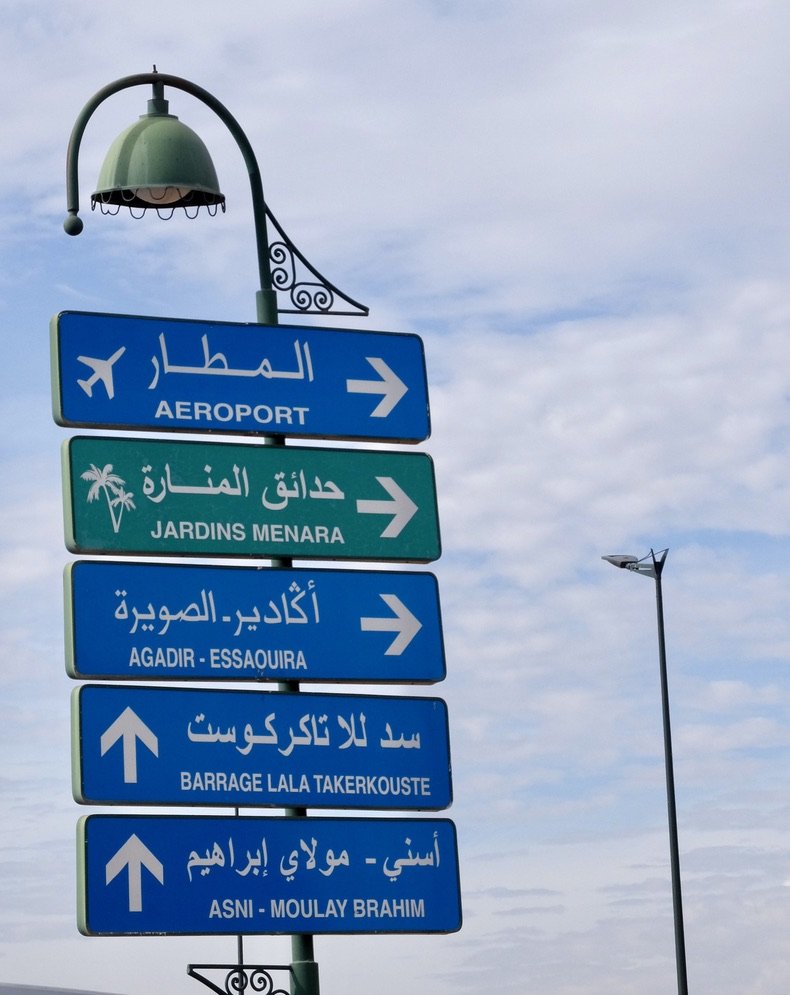“…Colored cottons hang in the air
Charming cobras in the square
Striped djellabas we can wear at home
Well, let me hear ya now…”
“…They're taking me to Marrakesh…”
Marrakesh Express written by Graham Nash & performed by Crosby, Stills & Nash. 1969
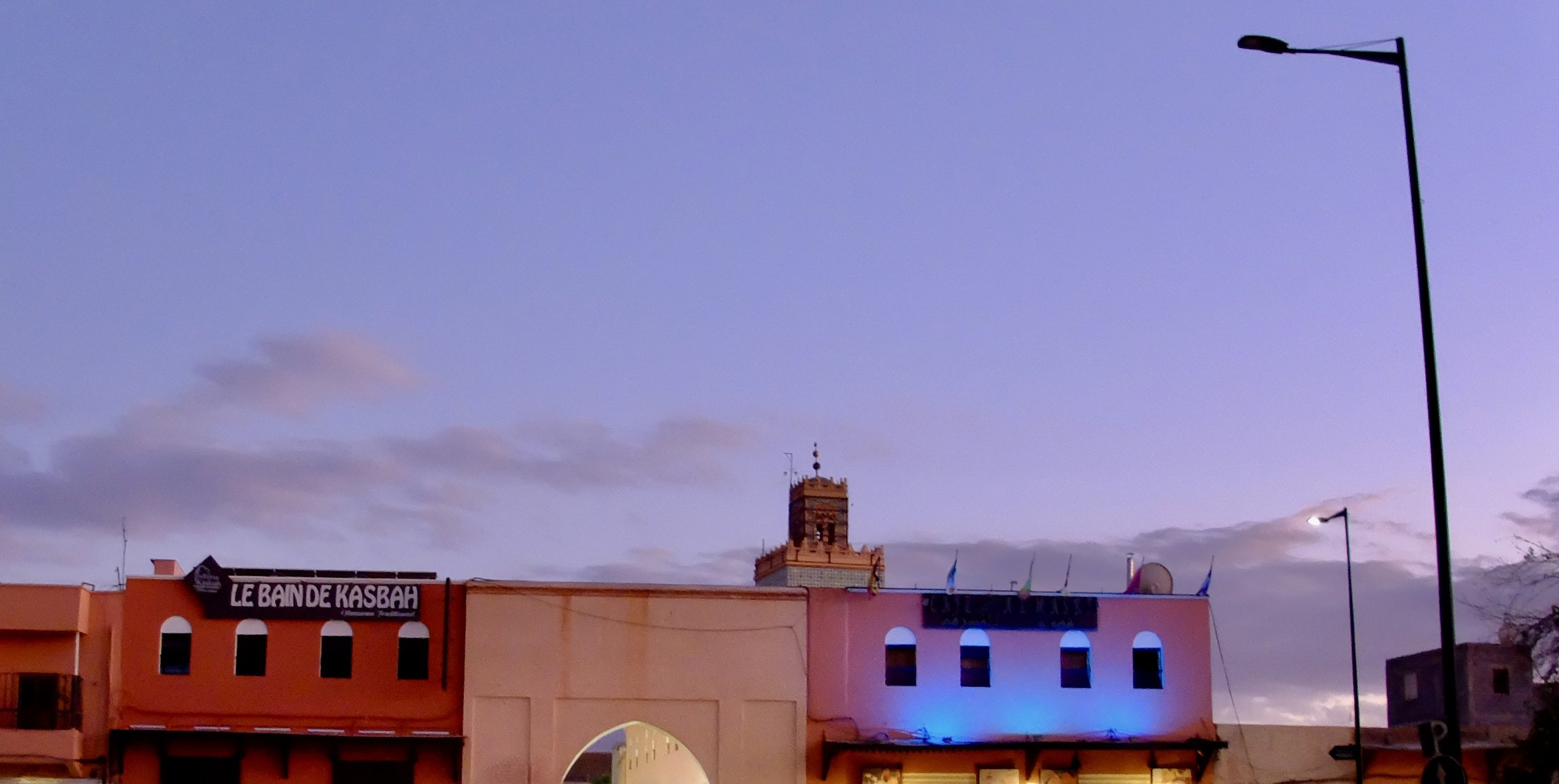
Our sunset arrival at the Bab Agnaou (Gate) to the Medina, & our first glimpse of the Koutoubia Mosque.
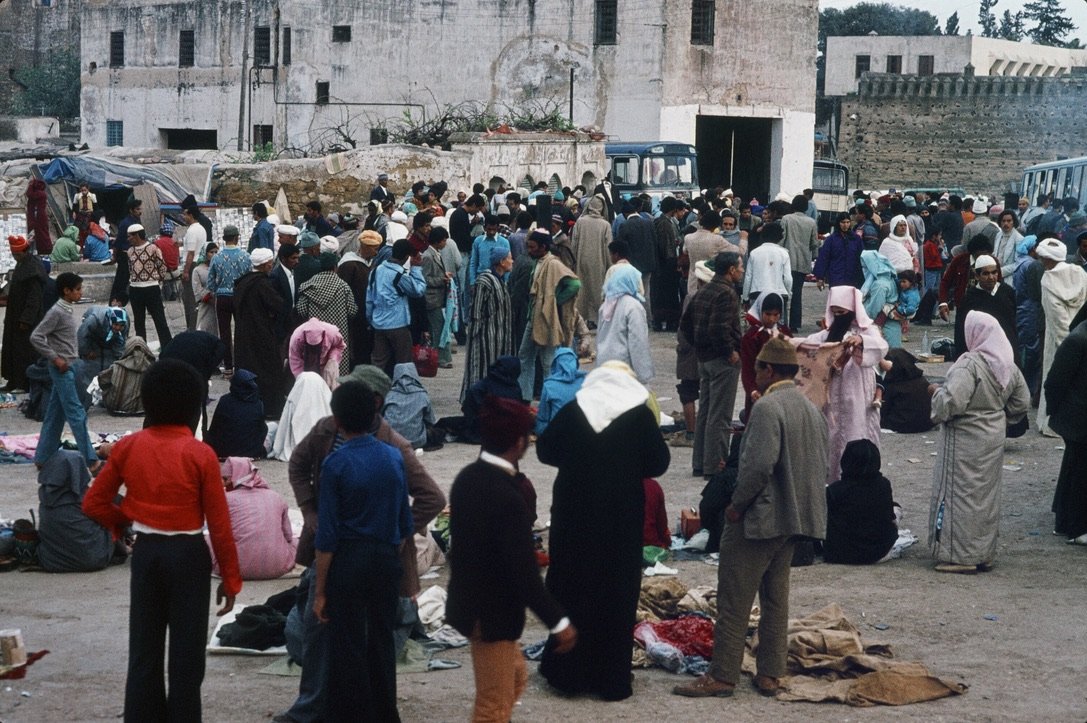
Not too much has changed since 1978. But the men are no longer wearing those knit caps with a pompom.

La Sultana, Marrakech.
“The subtle brickwork brings to life the vaulted ceiling of what was once the granary which provided for the royal family, the imams, and the bodyguards of the Caliph. ”

-
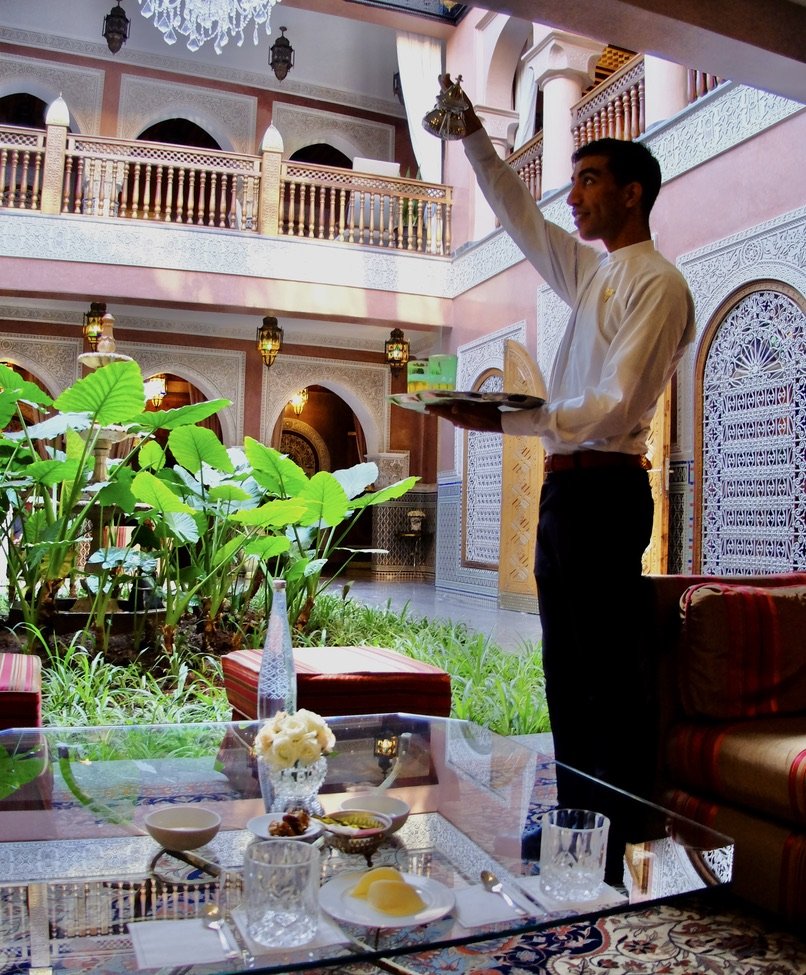
Not surprisingly we were greeted by mint tea & pastries.
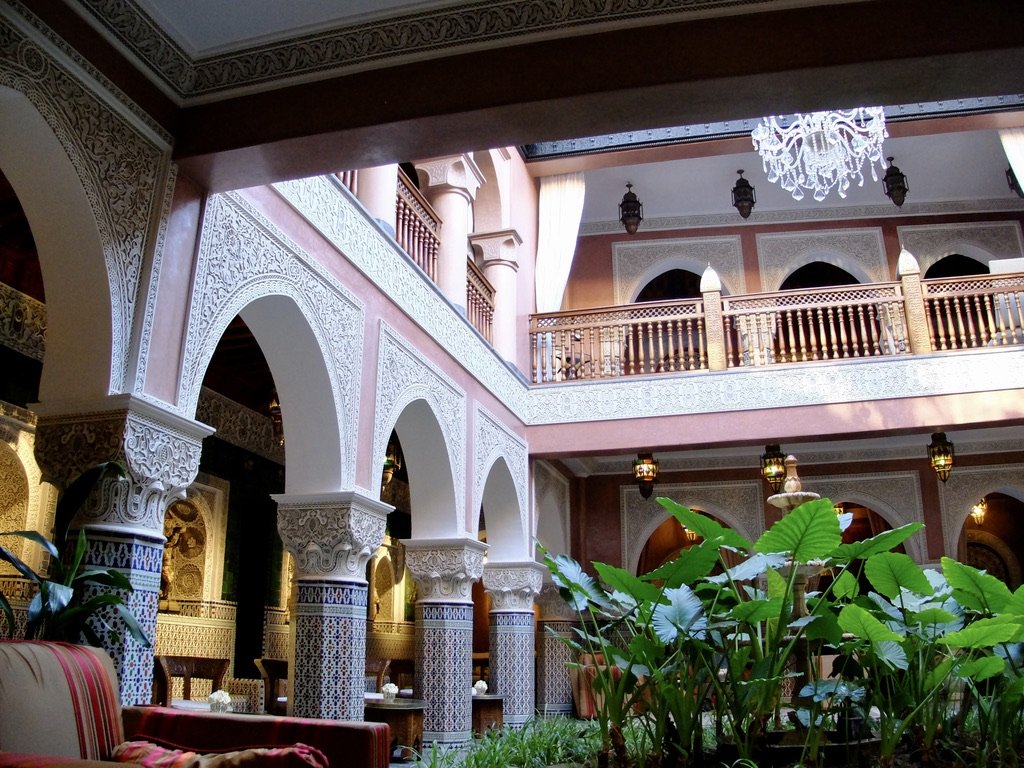
For the the history of La Sultana, Marrakech, go to https://www.lasultanahotels.com/theme/medias/La%20Sultana%20Marrakech%20-%20History.pdf
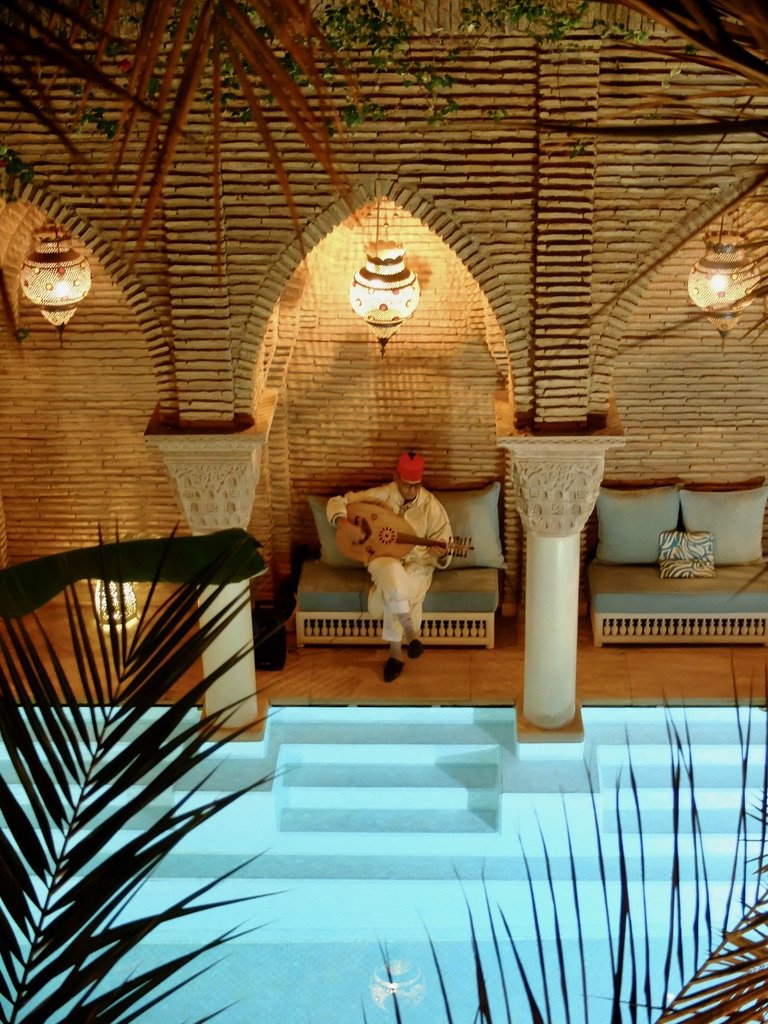
His music. played on his oud, lulled us to sleep each night.
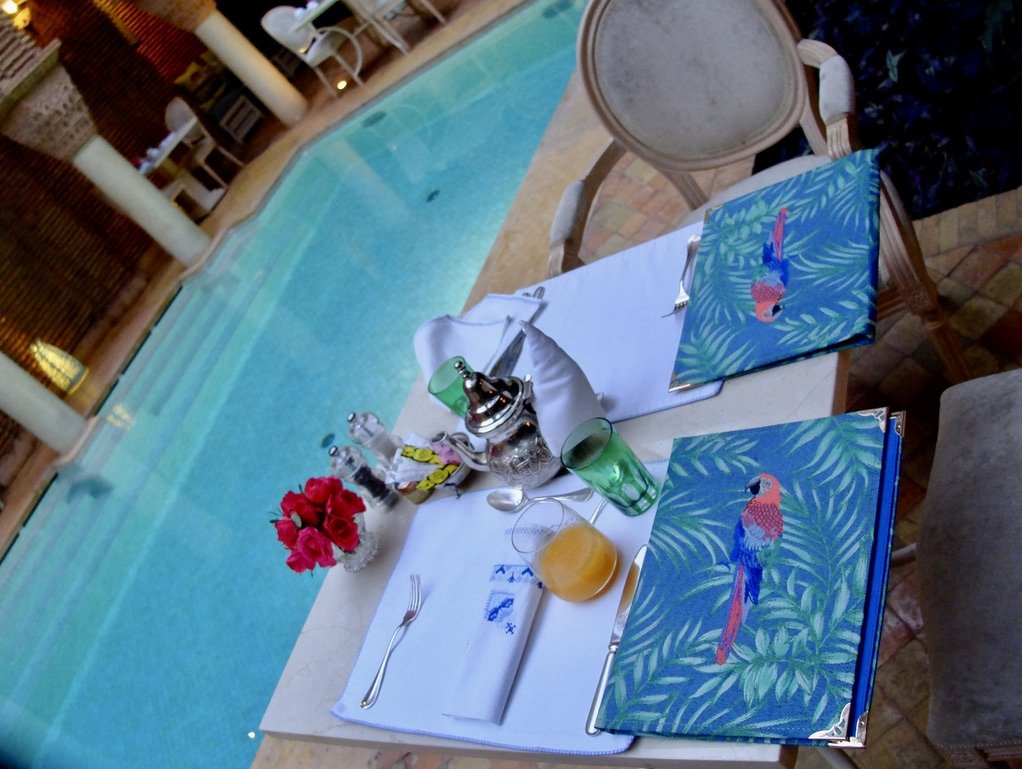
We assumed that there was a long day touring ahead.
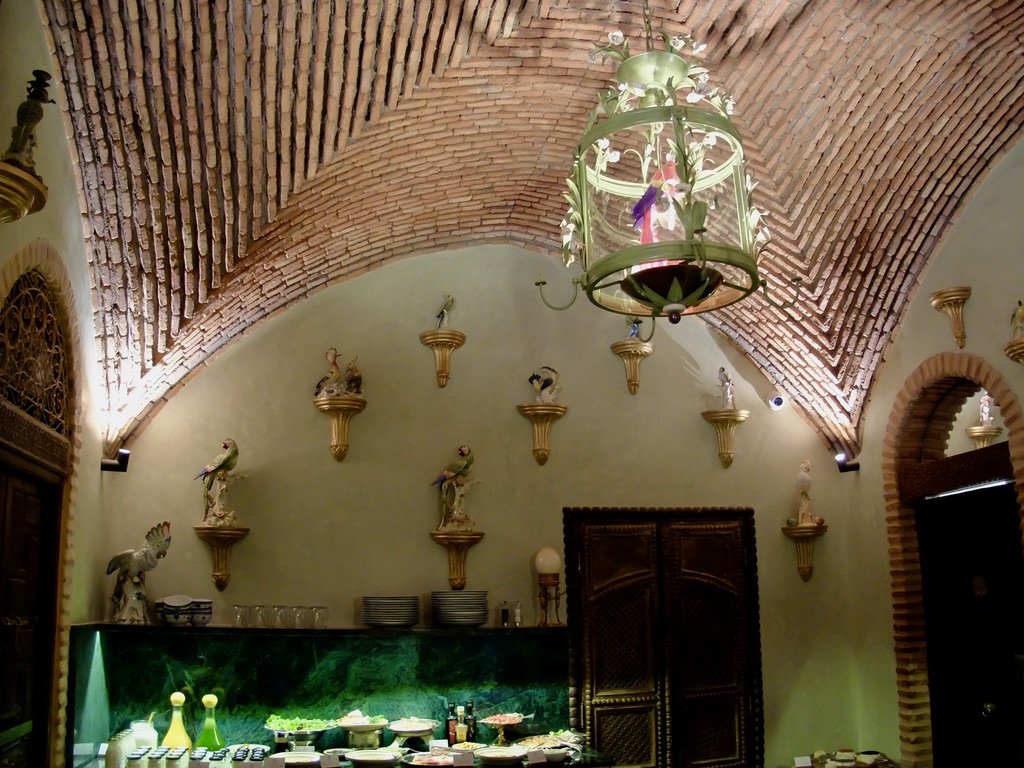
-
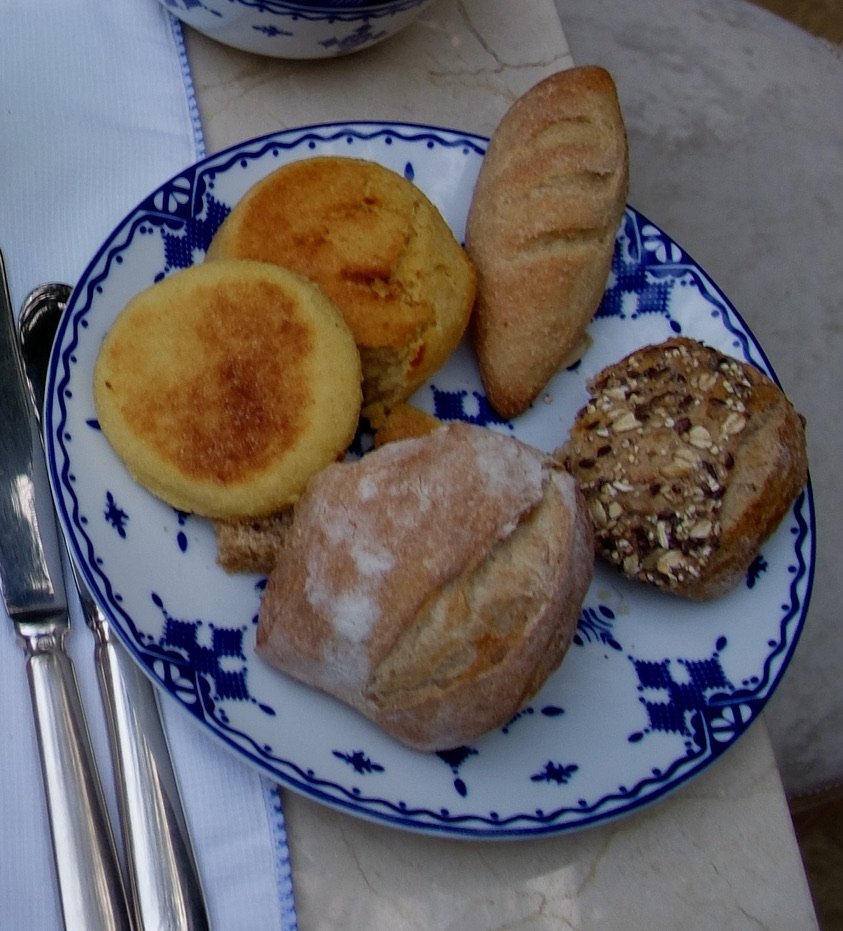
We knew we'd need to have eaten a big breakfast.
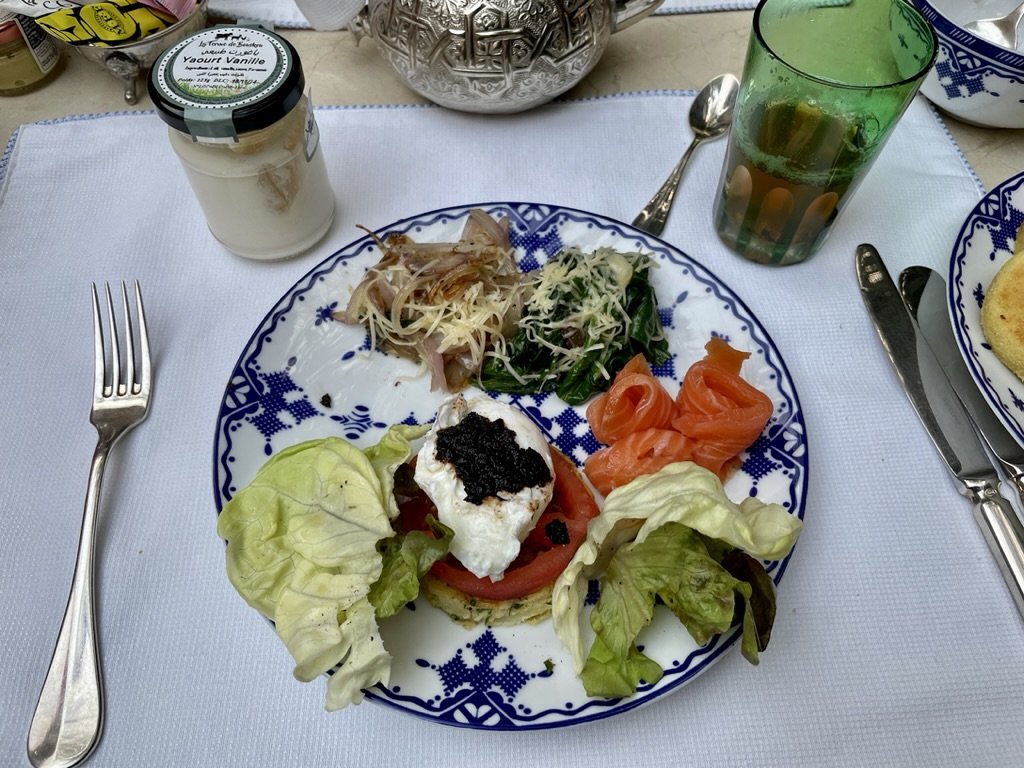
Galettes de makouda aux œufs pochés tapenade légère.
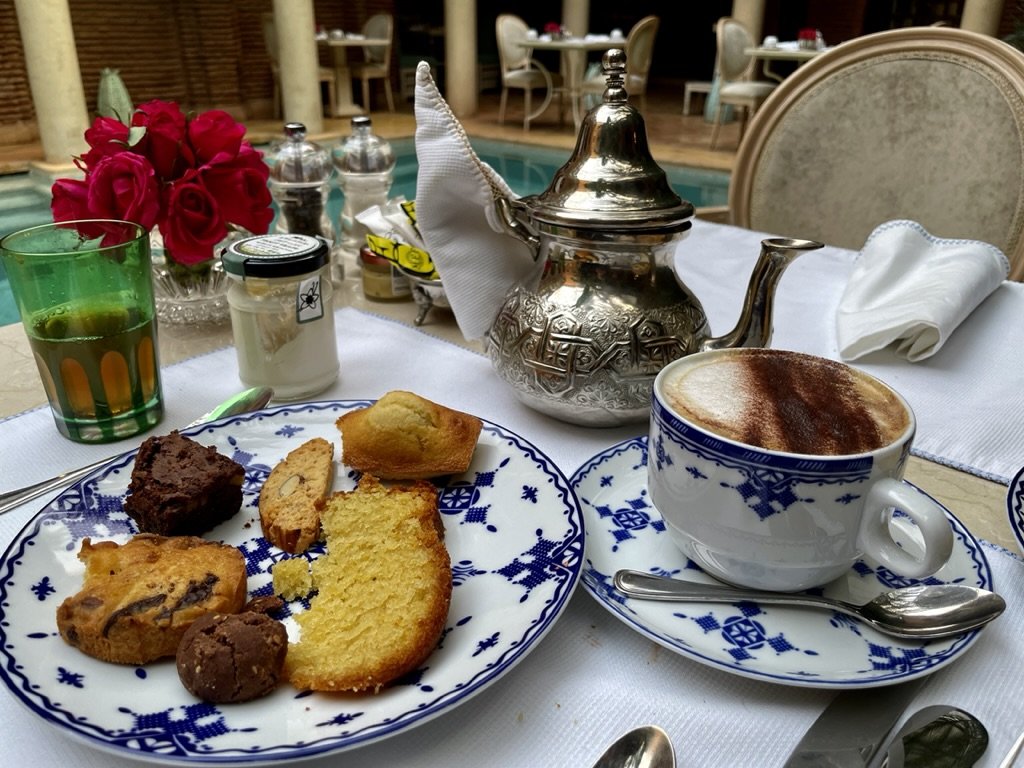
This was not first time that I worked counterclockwise around the pastry plate.
I was getting accustomed to the idea of desert with breakfast.
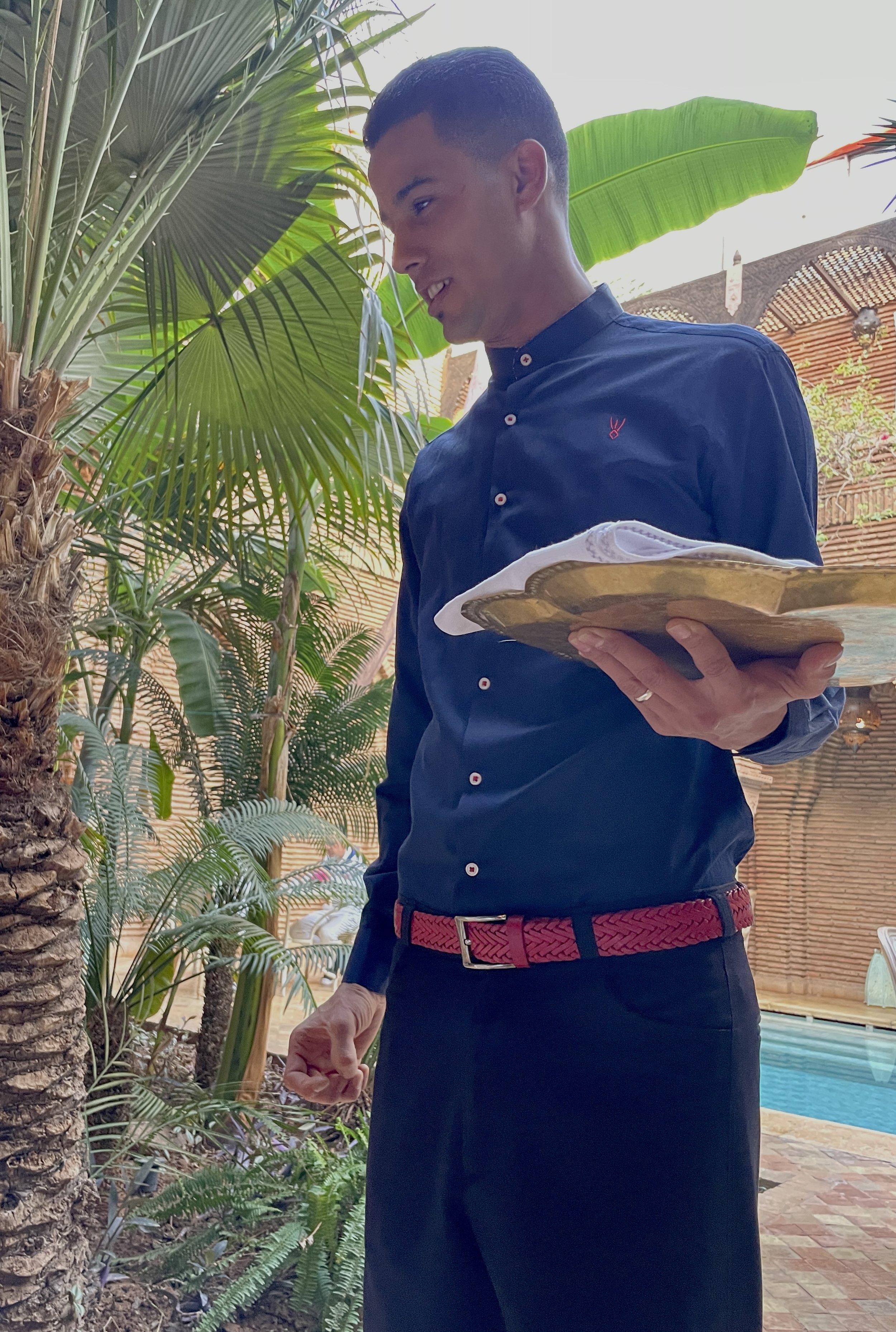
Our server, with the latest style Moroccan belt, was an under 30 y.o.a. married with several children.
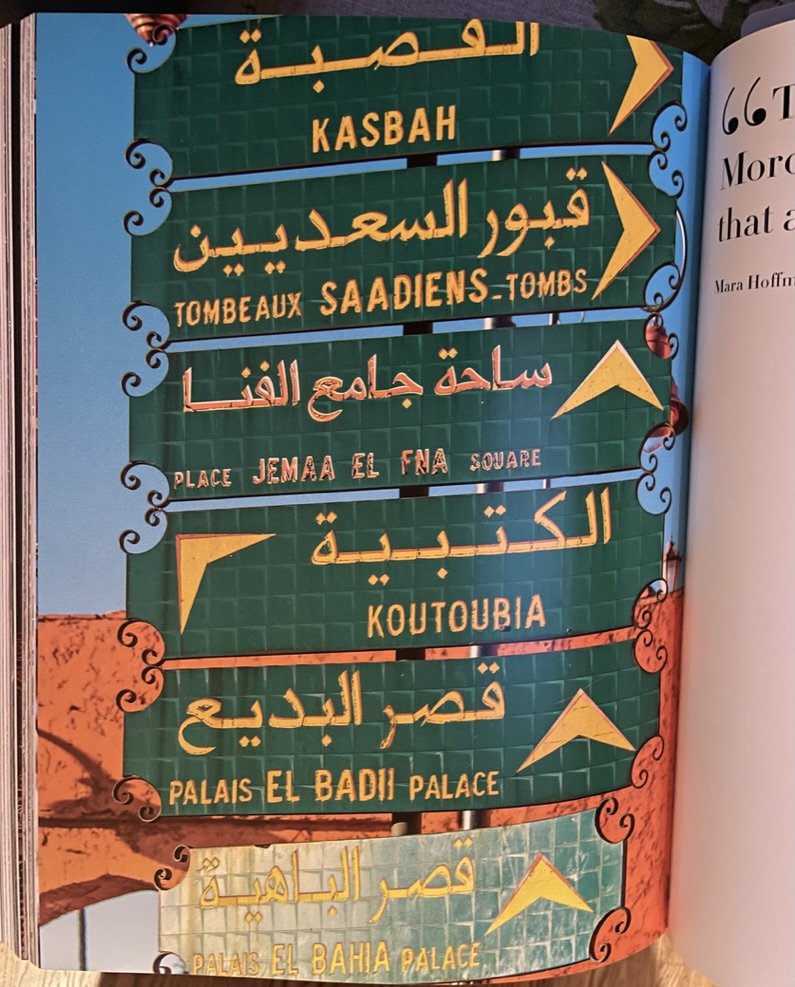
“Come with me to the Kasbah”
So much to see.
Photo from “MARRAKECH FLAIR by Marisa Berenson & Assouline.com
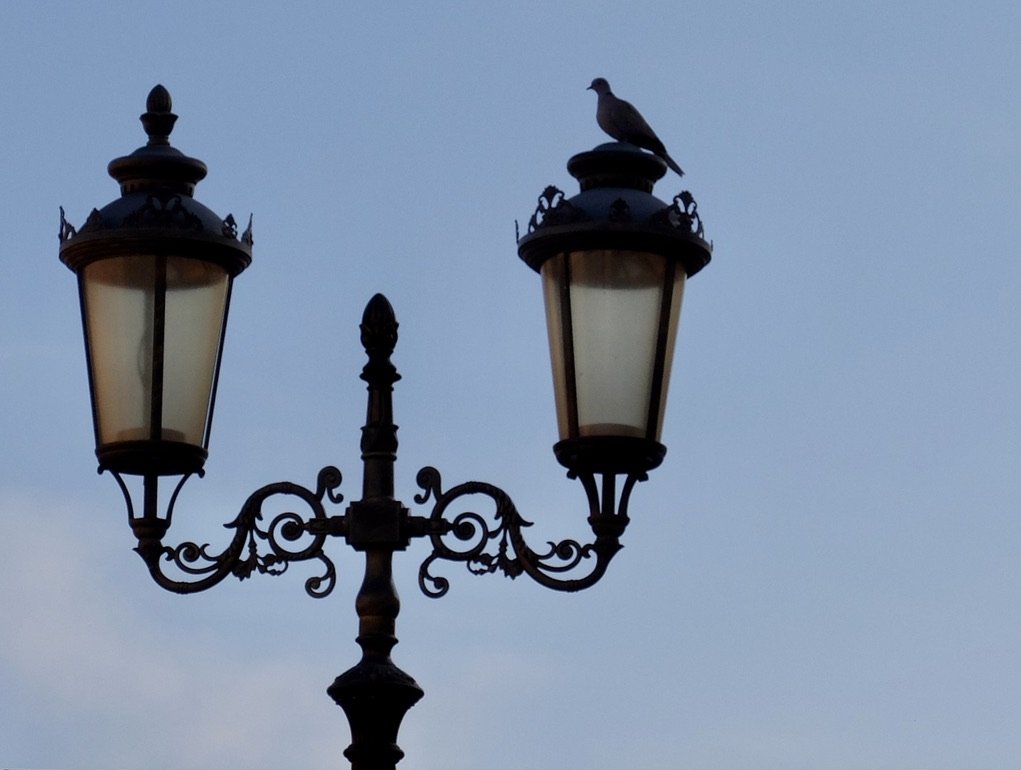
Marrakech pigeons.
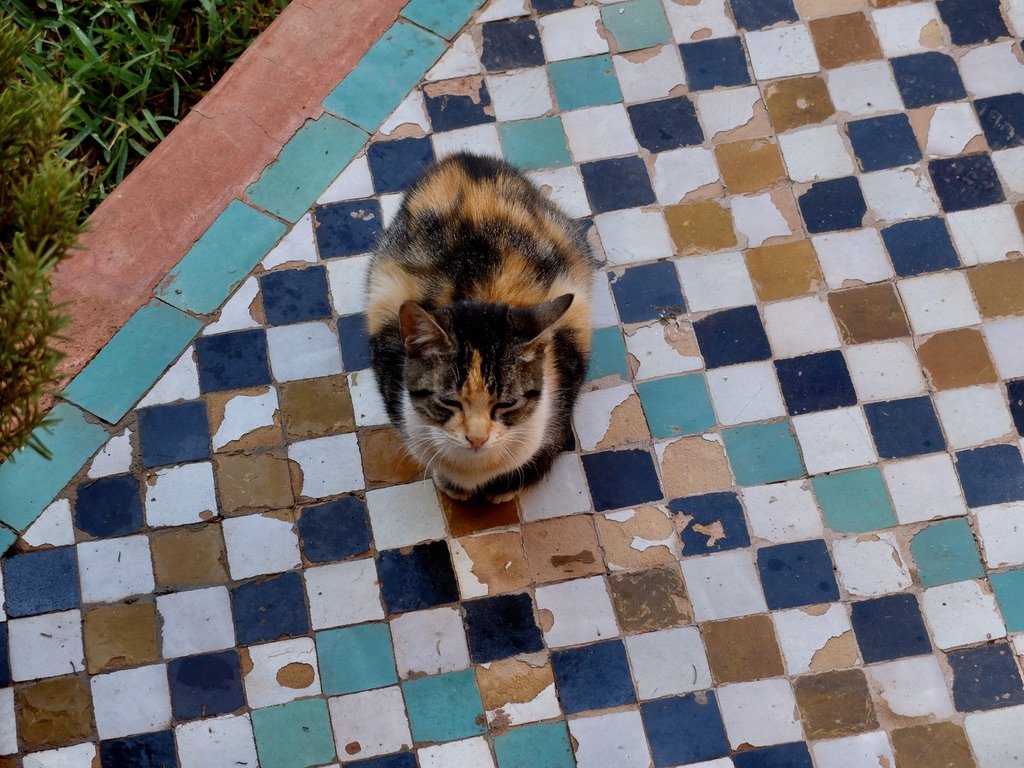
TOMBEAUX SAADIENS-TOMBS...

...are a historic royal necropolis.
The higher the tombstone, the more royal the person buried there. These are outside the chamber so they were not as important.
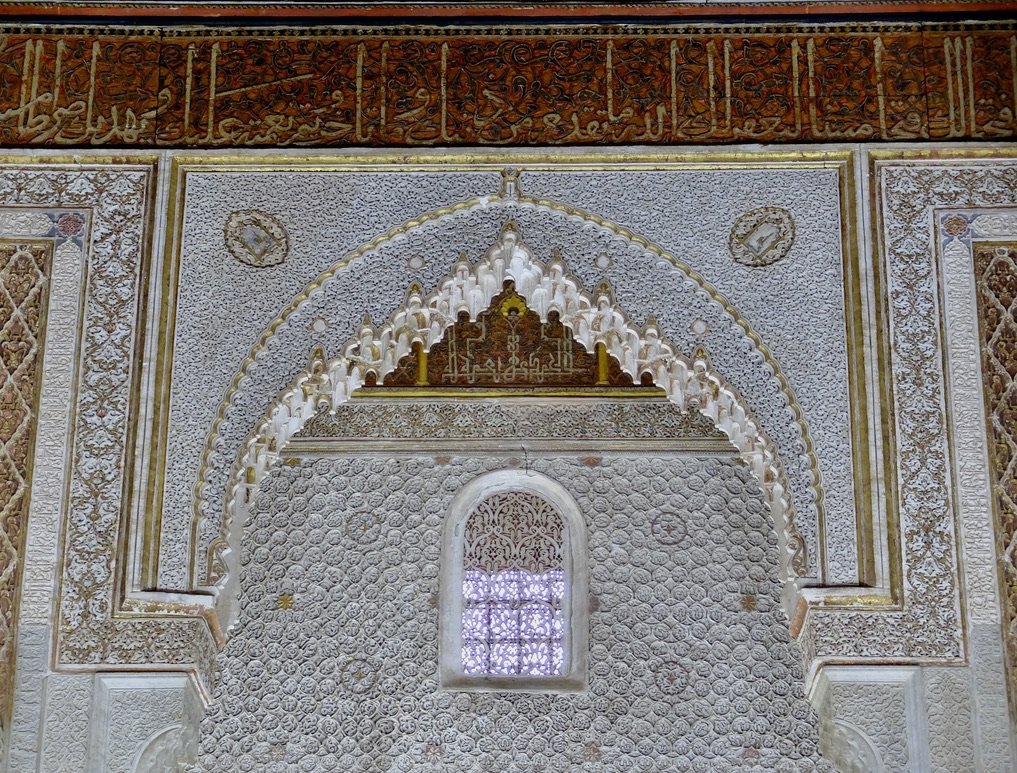
The Chamber of the Twelve Column.
Below is the tomb of Sultan Ahmad al-Mansur. It’s the highest tomb.

Lesser royalty off to the side.
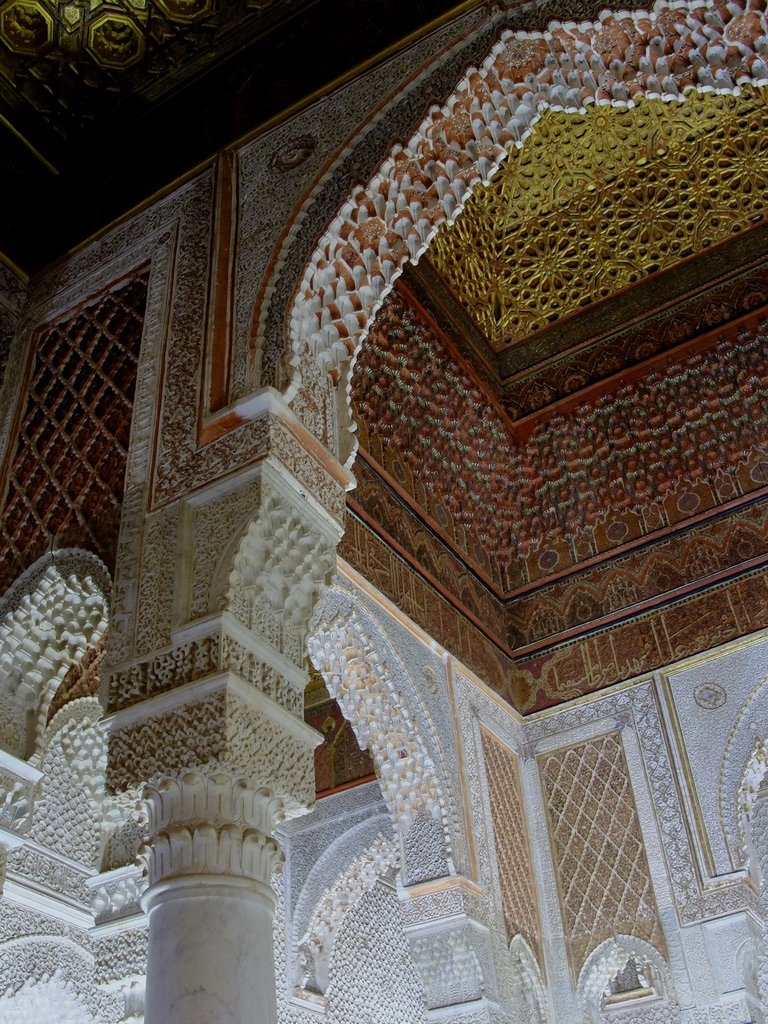
TOMBEAUX SAADIENS-TOMBS.
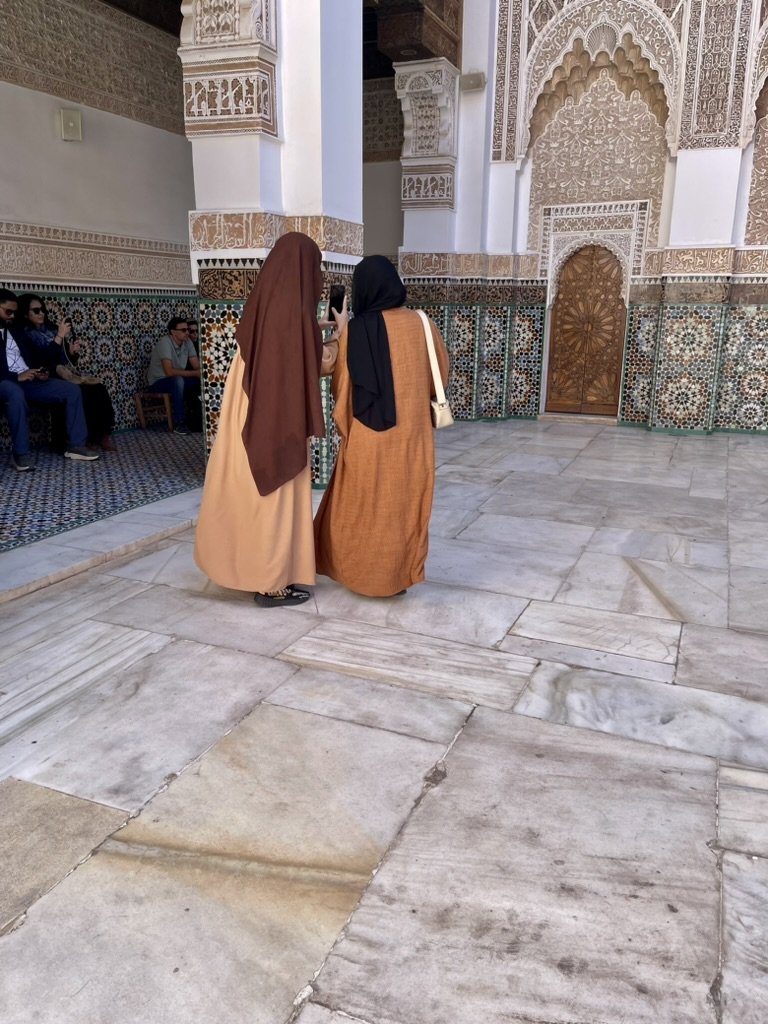
TOMBEAUX SAADIENS-TOMBS.
Photo by Naomi a.k.a. Naima.

-
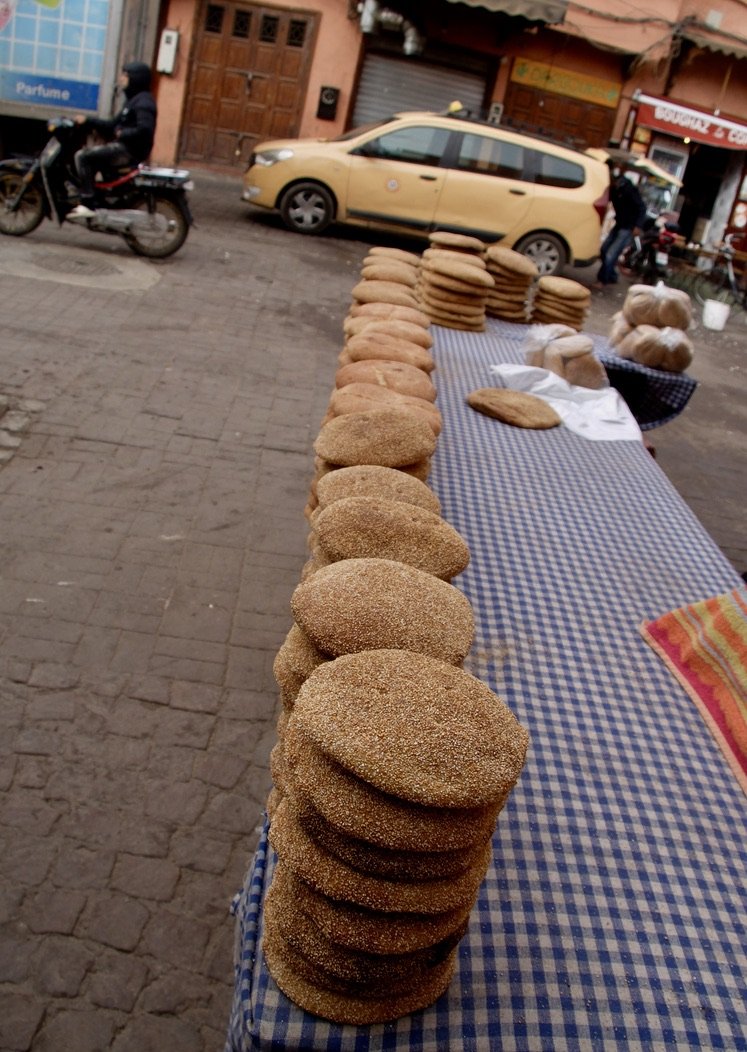
-
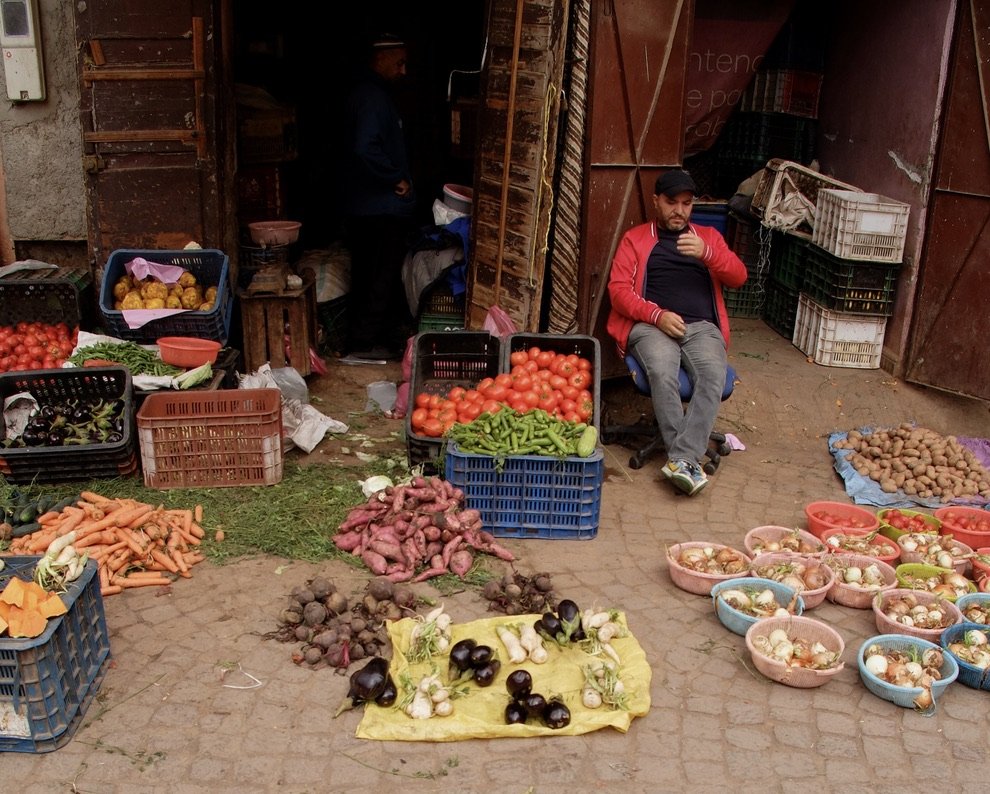
-
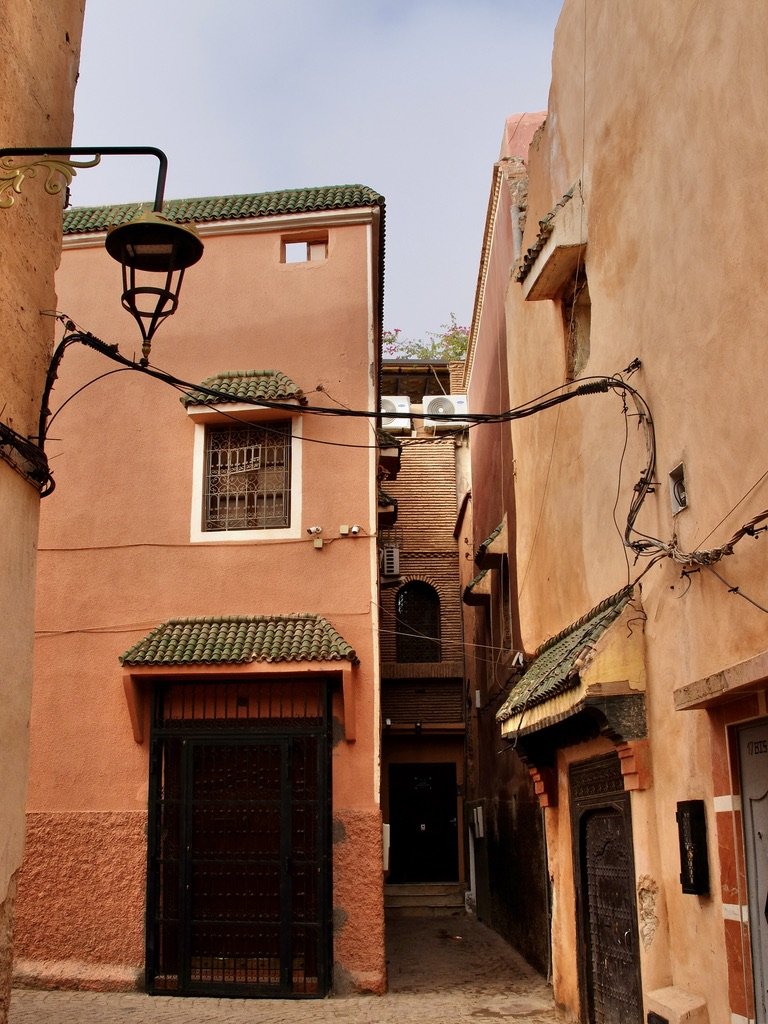
A more upscale area of the Medina.
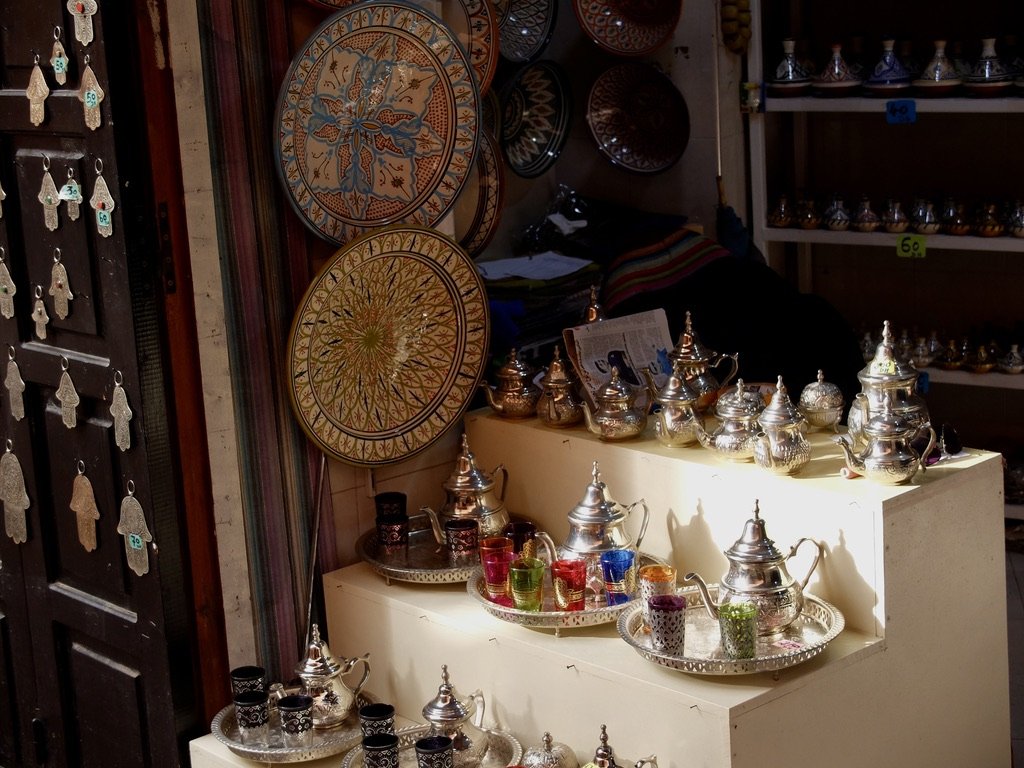
-
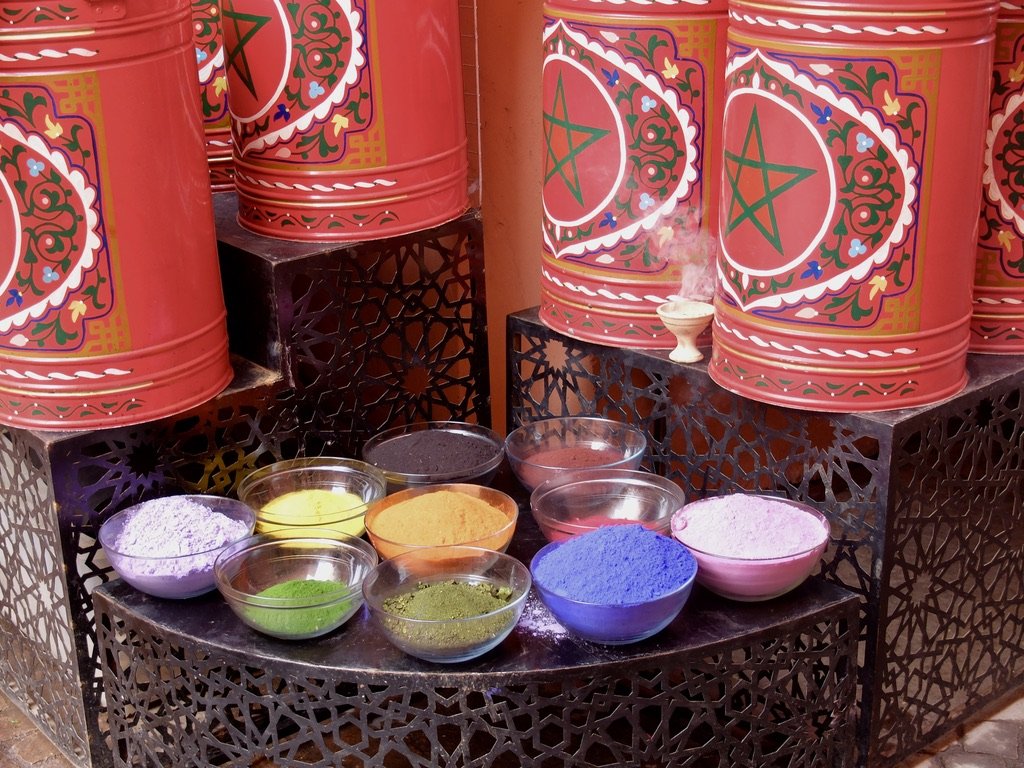
-
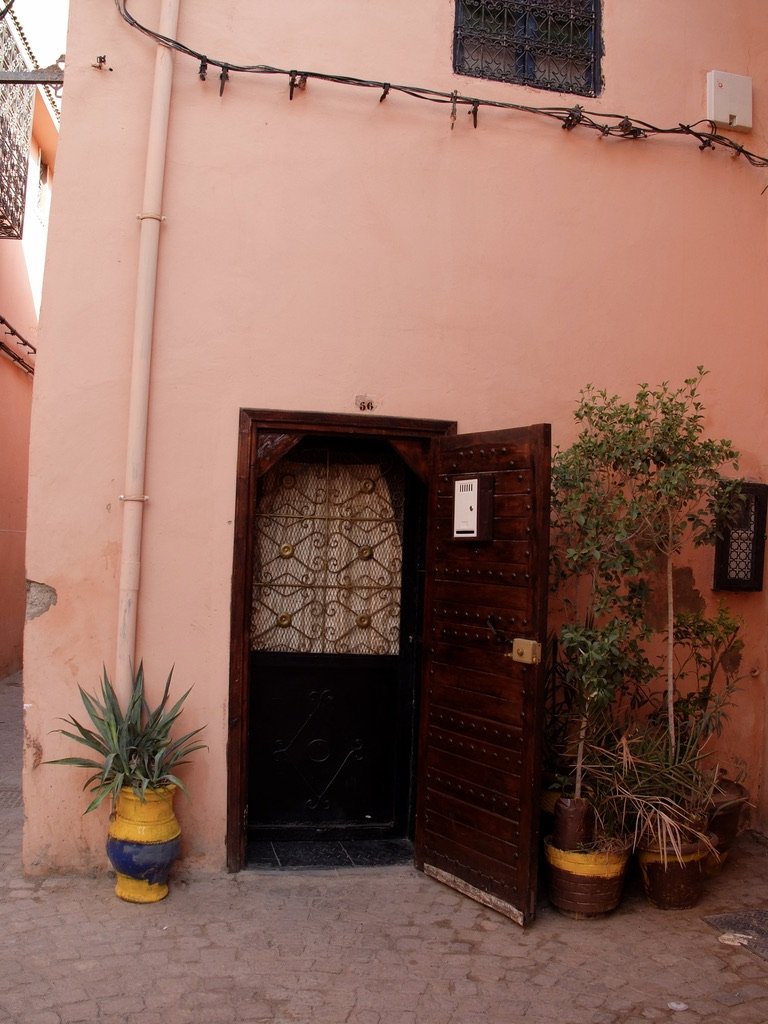
-
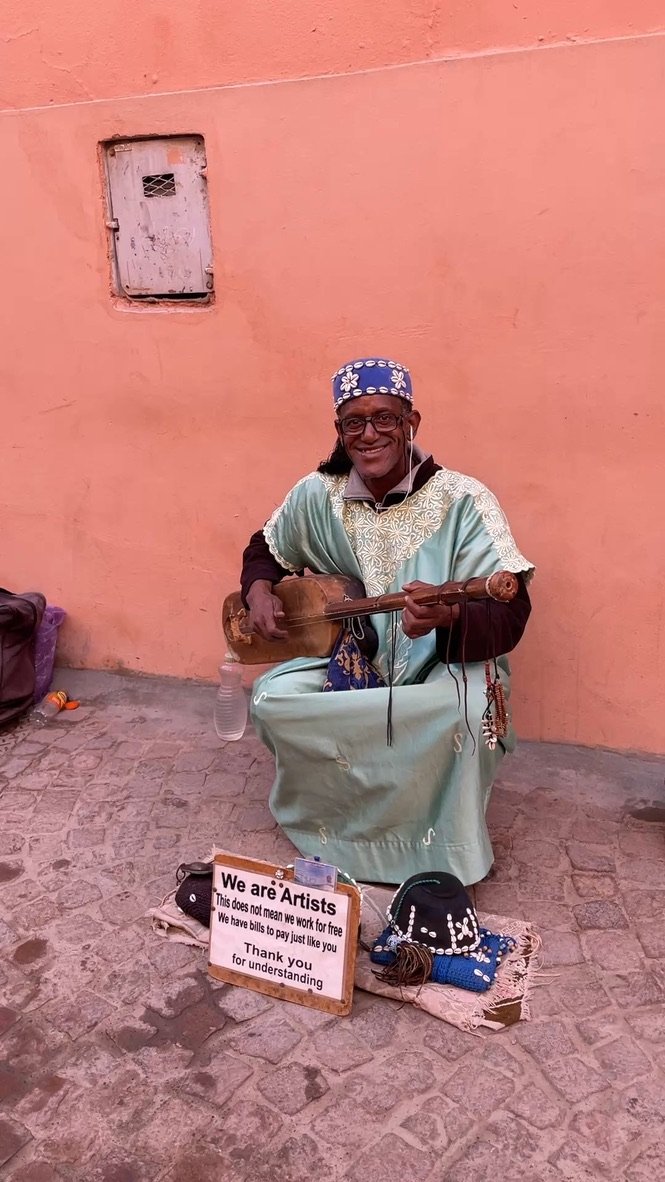
He moved his head to twirl the tassel.

This was or is? the home of a Jewish merchant.
One can recognize that by the architecture, in particular the long vertical windows.
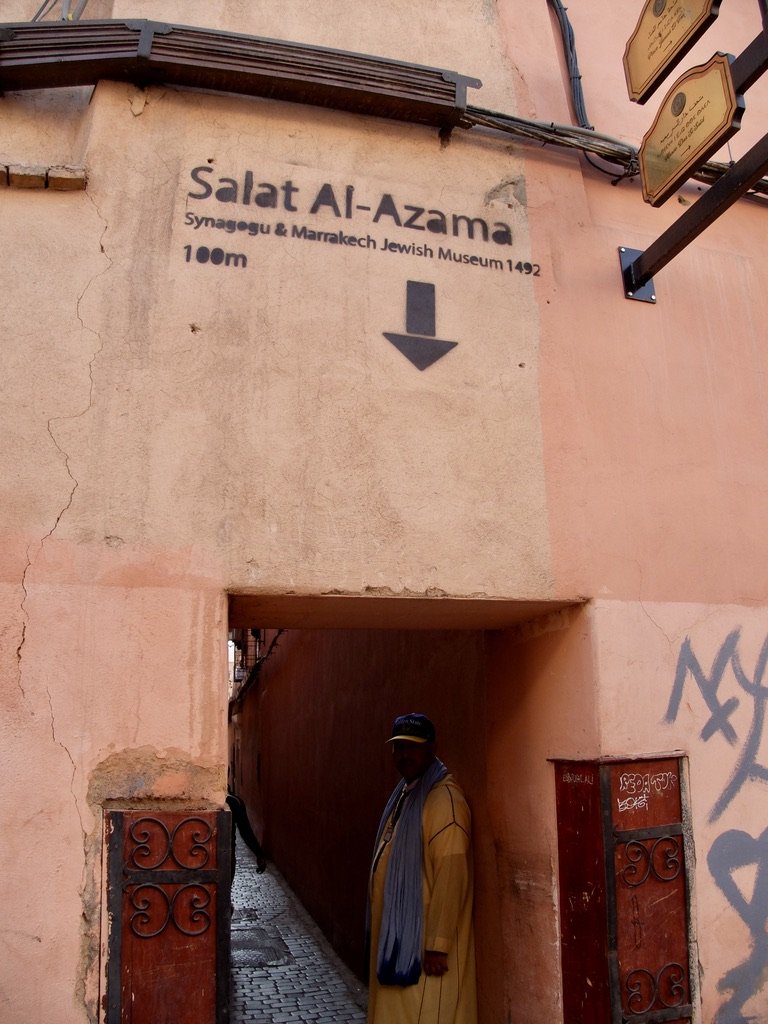
“The Mellah of Marrakesh (Hebrew: מלאח מרקש; Ladino: Mellah de Marrakesh; Arabic: ملاح مراكش), is the Jewish Quarter…It is the second oldest of its kind in the country.”
Ladino is to the Spanish Jews, who fled the Inquisition, as YIddish is to Eastern European Jews. Ladino is an old form of Spanish. In 1492, Jews fleeing Spain were welcomed in Morocco.
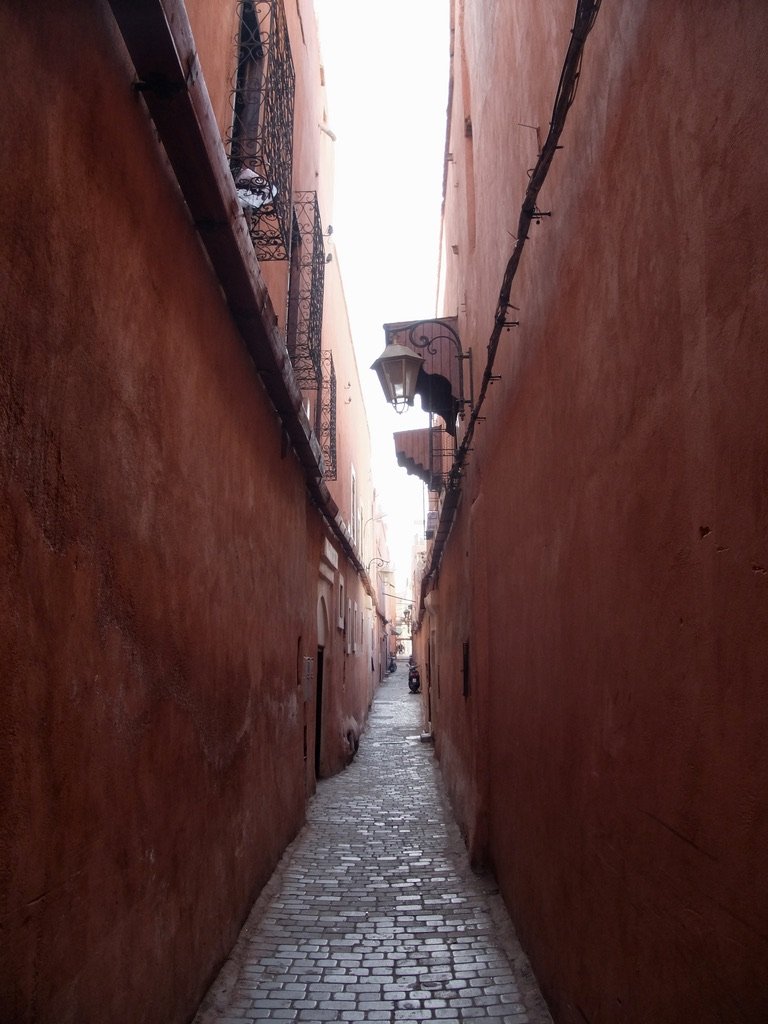
-
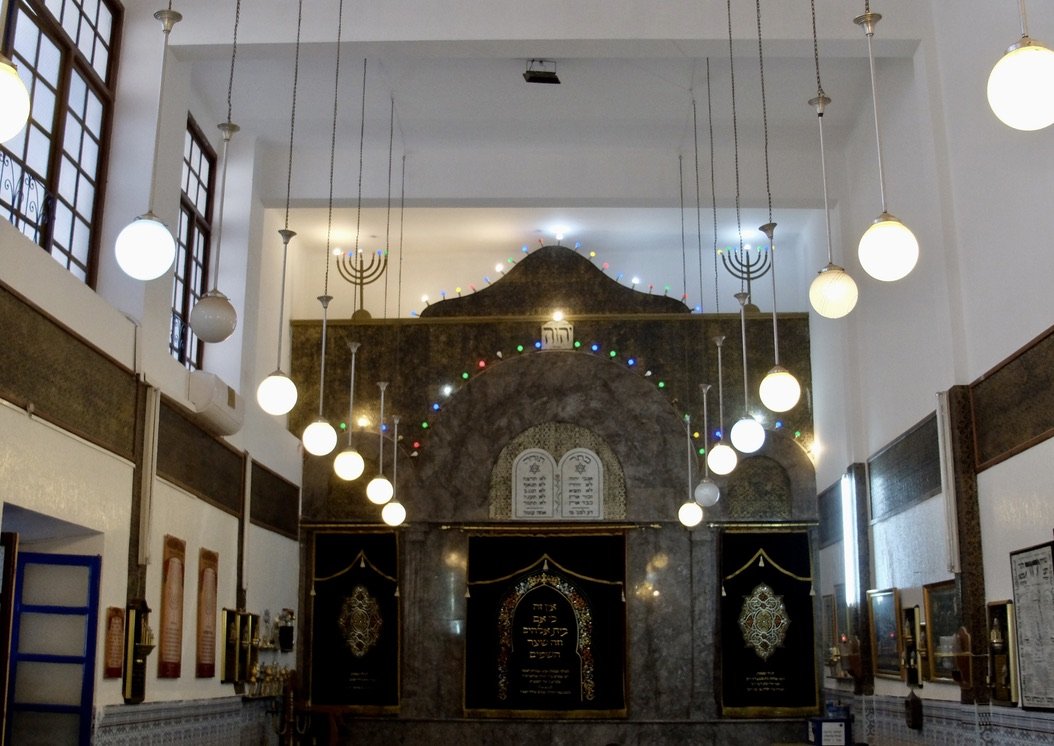
Salat Al-Azama synagogue - 1492.
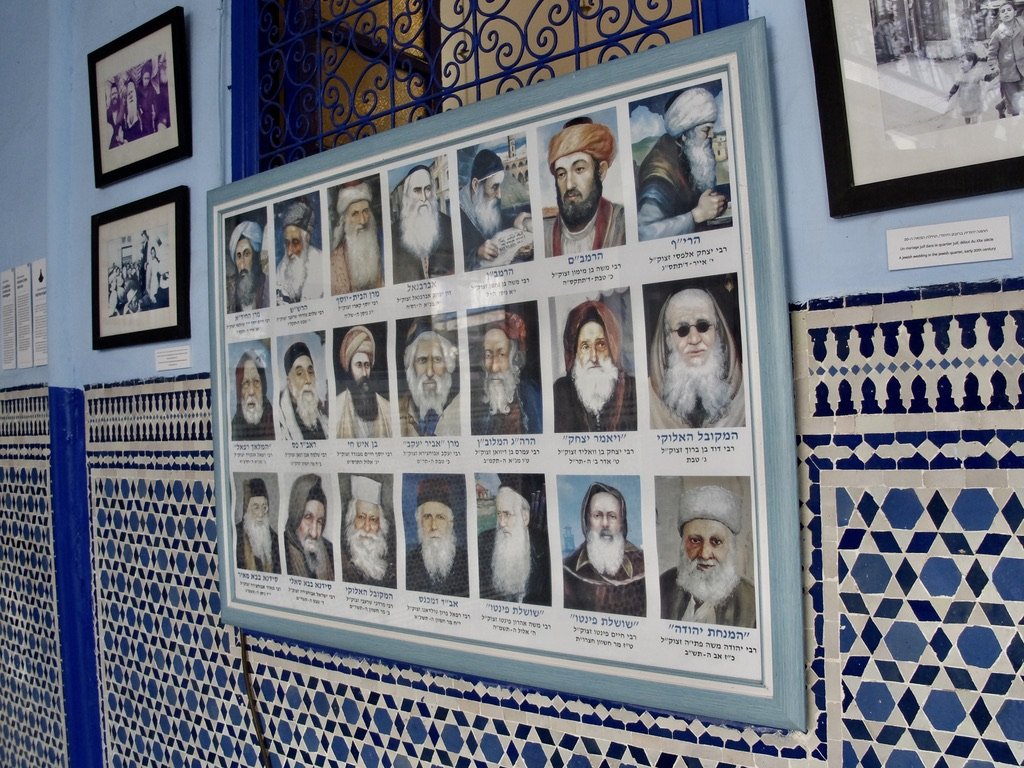
Such interesting beards on the rabbis of the past.
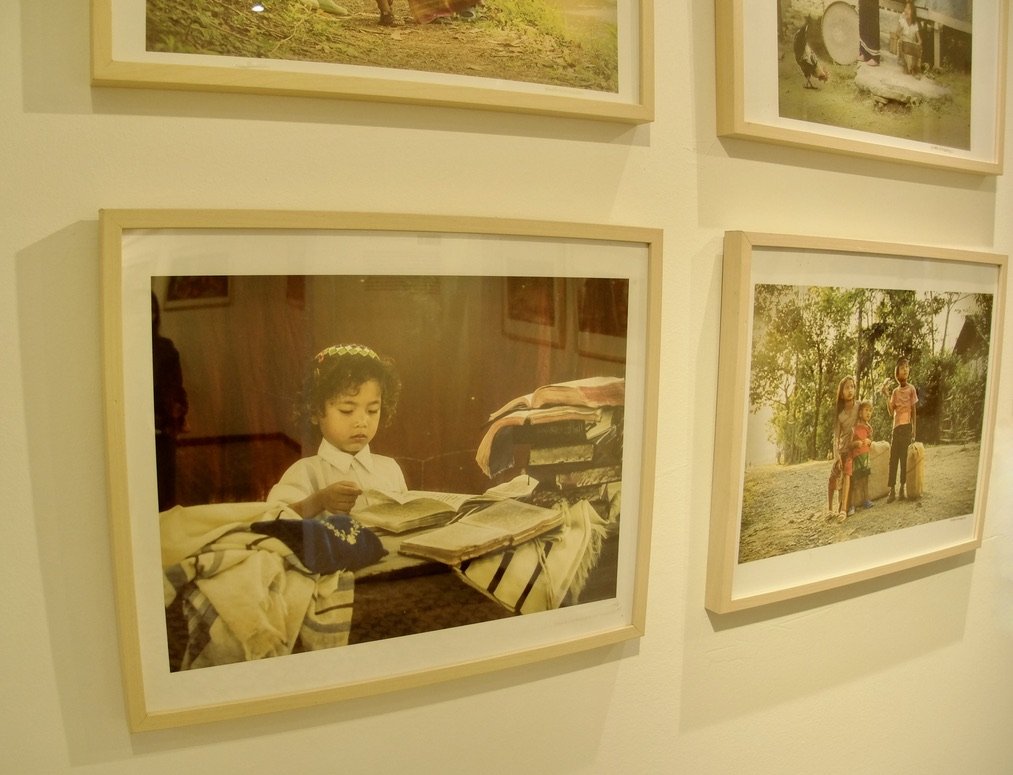
He was probably using one of...
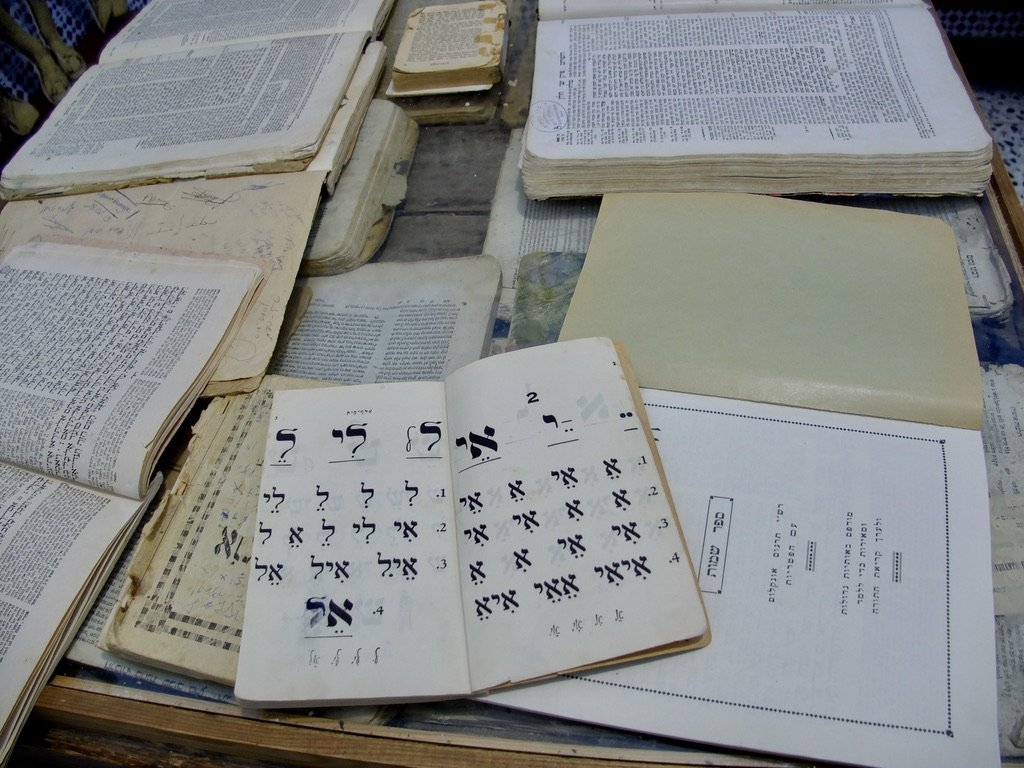
…these books.
They were laying out on a table for visitors to pick up & peruse.
I have an Aleph-Beyt (Like an American A,B,C book) that my grandfather used in his McKeesport, Pennsylvania cheda. (Hebrew school).

Salat Al-Azama
“Traditonal costume of Jewish women in the High Atlas.
A young Jewish Berber woman...1915."

Salat Al-Azama
“A Jewsh Berber boy with an earring, a well-known custom to mark children or expel demons & diseases.”
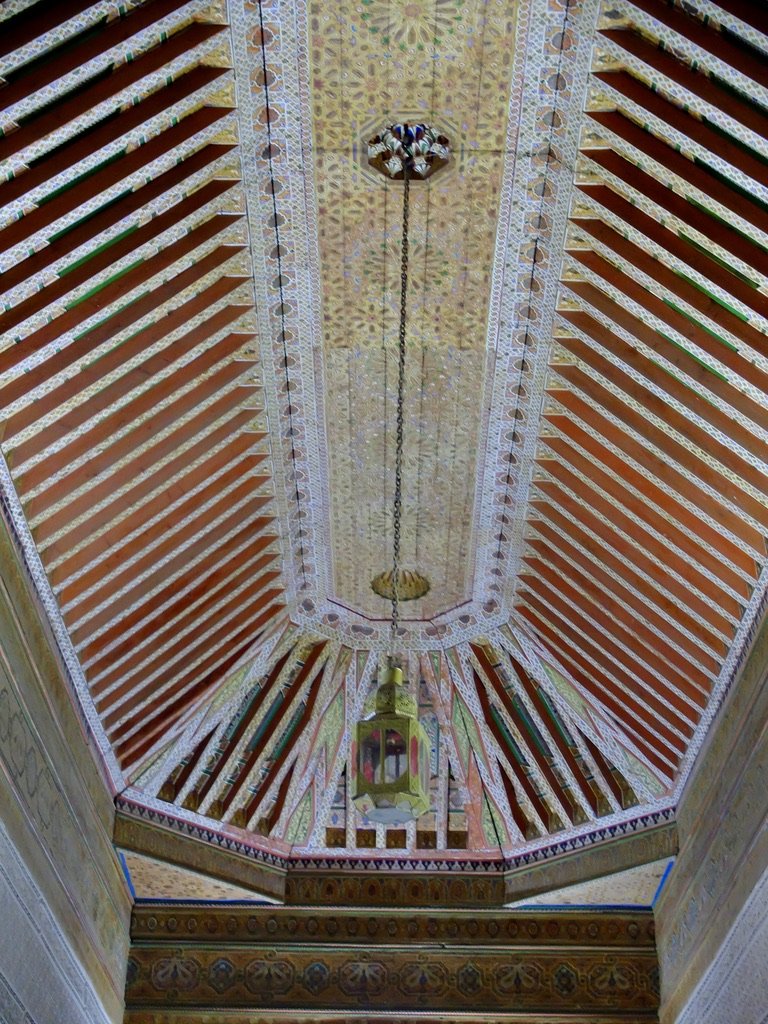
“The Bahaia Palace was built in the 19th century for Si Moussa, grand vizier to the sultan.”
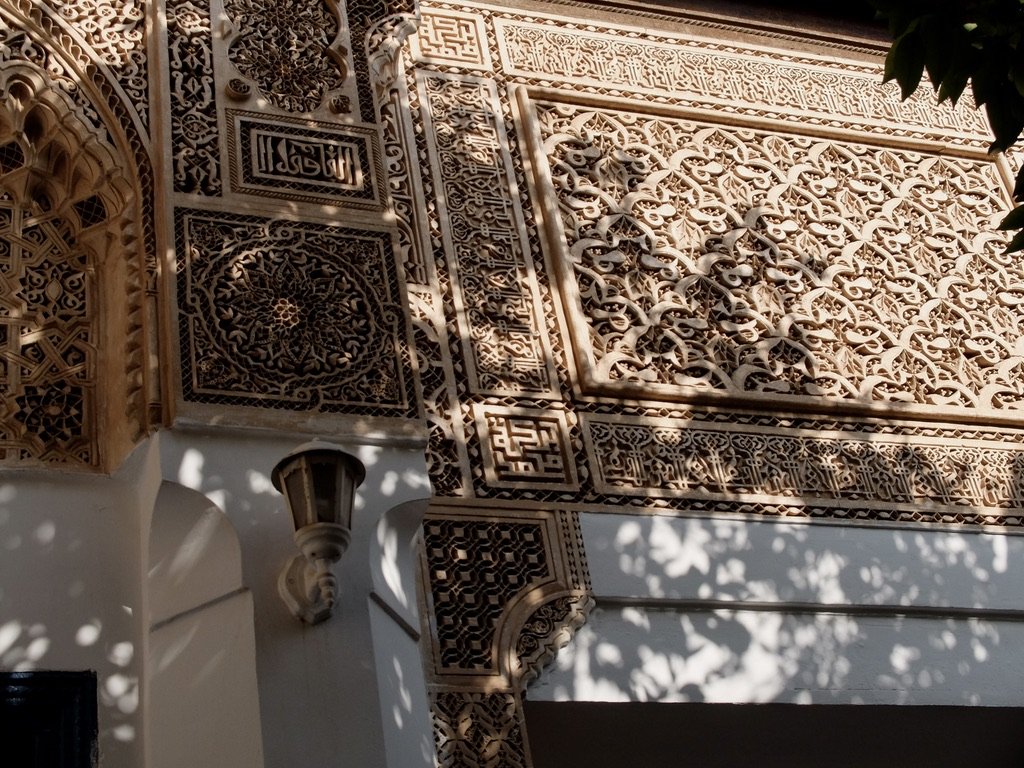

The six pointed Star of David appearing once again.

-

Marrakech has an airport & large railway station.
“…Would you know we're riding On the Marrakesh Express?
They're taking me to Marrakesh…”
There were tourists from all over the world. We met a Dutch couple who had come down for the weekend.
Folks dressed up & it was a fashion show on the streets & alleys. We saw one woman, walking in the Medina, with a fascinator hat.

We did some damage in this jewlery shop. Our guide, Youssef, had never been in it.
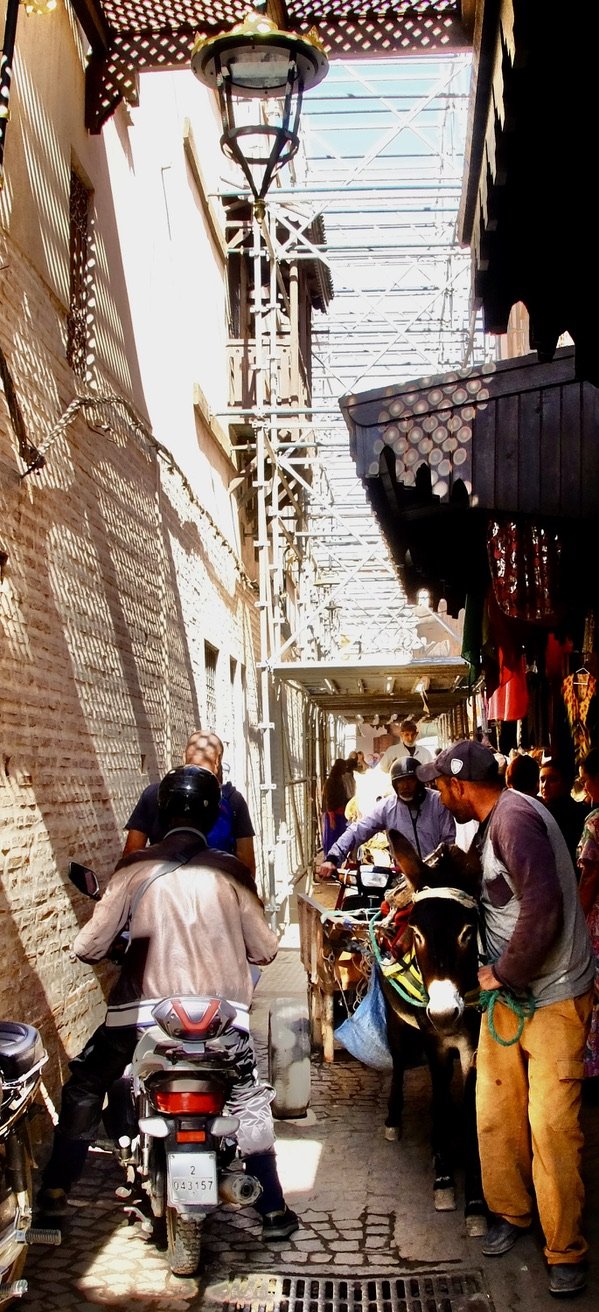
Ancient & modern transport. At tight squeeze in a Medina alley.

-
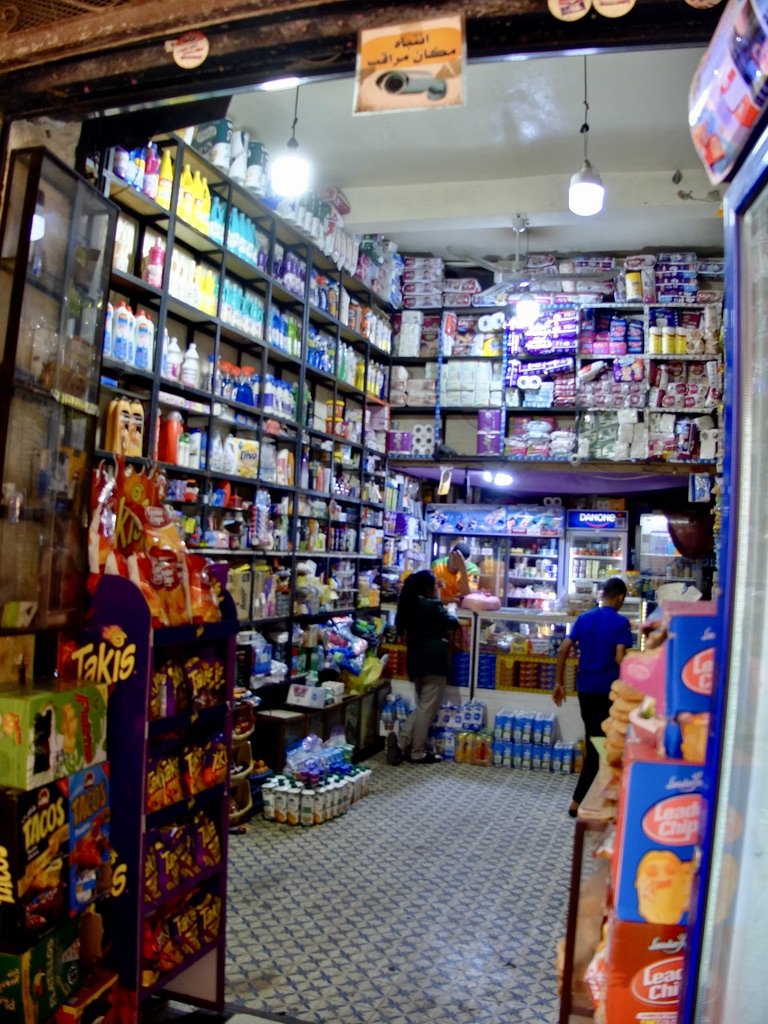
-
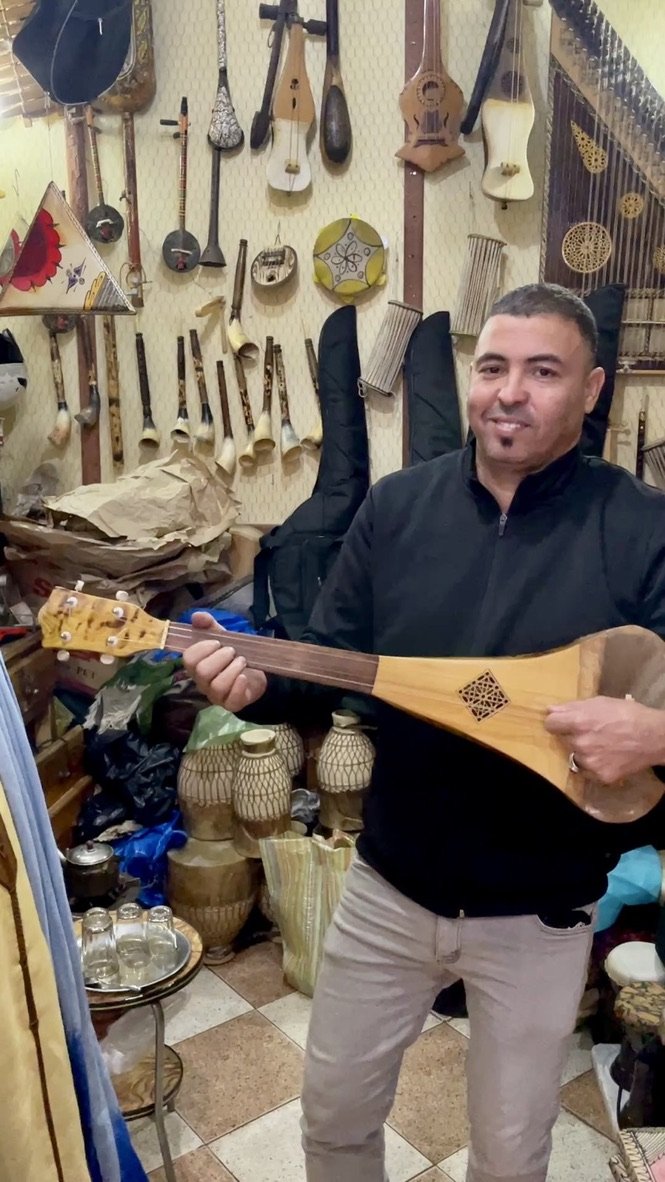
He made this instrument.
It was four strings so I tried it but it wasn’t tuned like an ukulele!

Youssef said that we should sit here. Well, okay. He ordered.
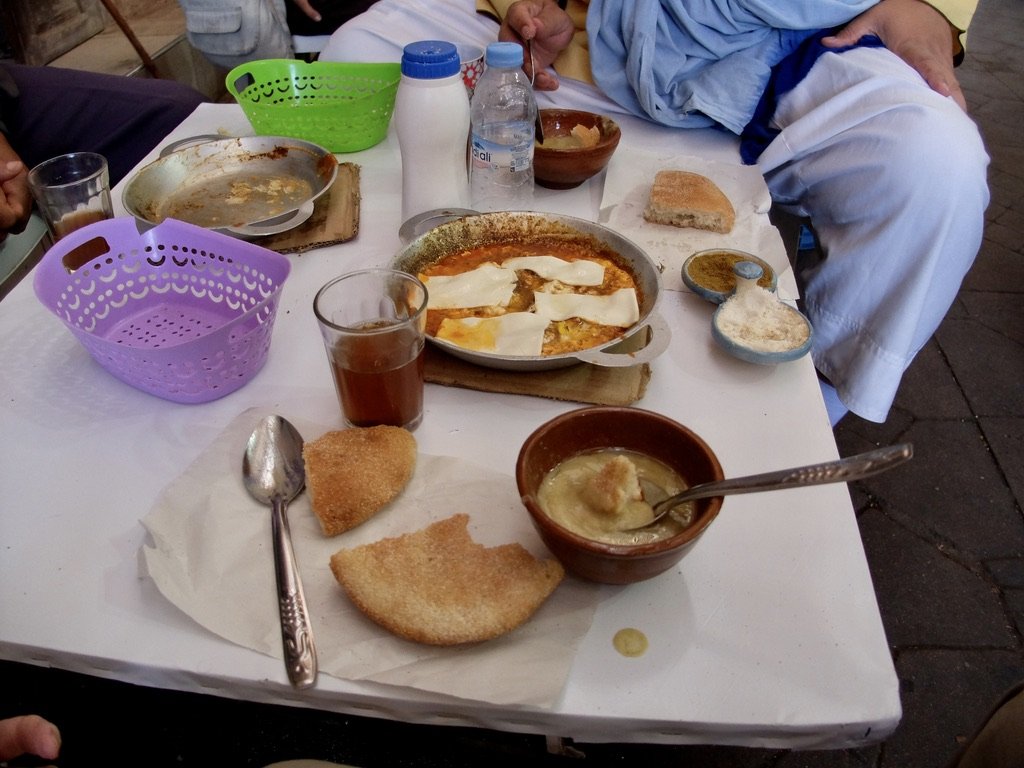
Nomi wasn’t feeling well. She looked at the bean soup (bessara) & thought “no!” Youssef said that she should have it as it would make her feel better. It worked.
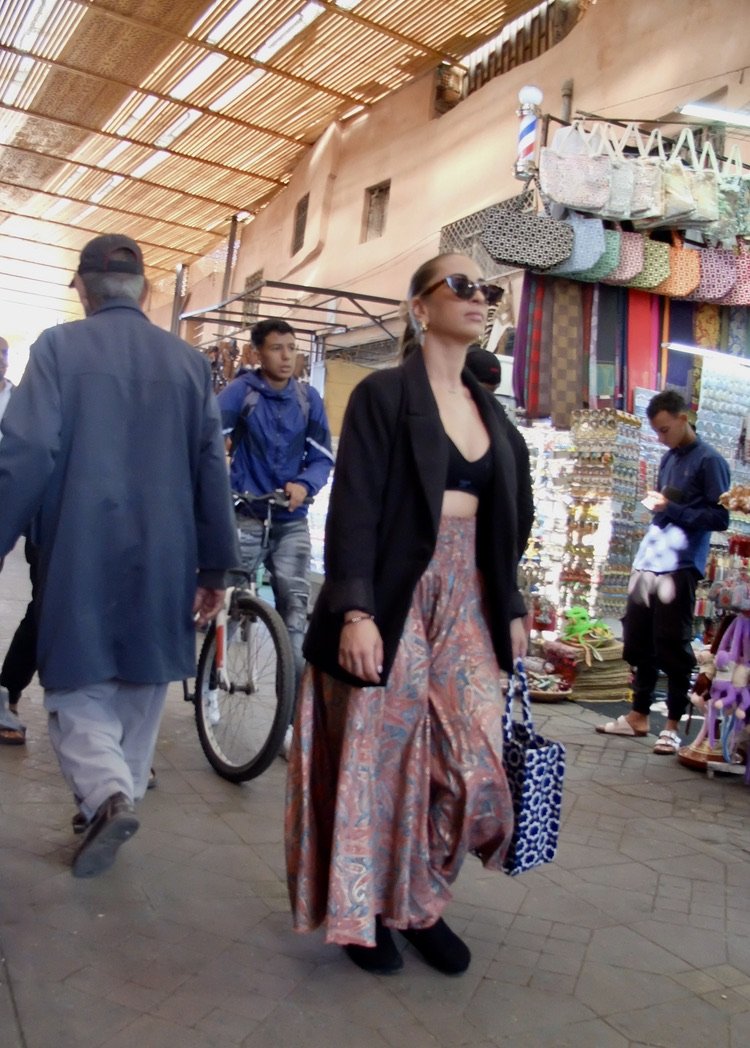
-

These metal painted signs were a thing here.
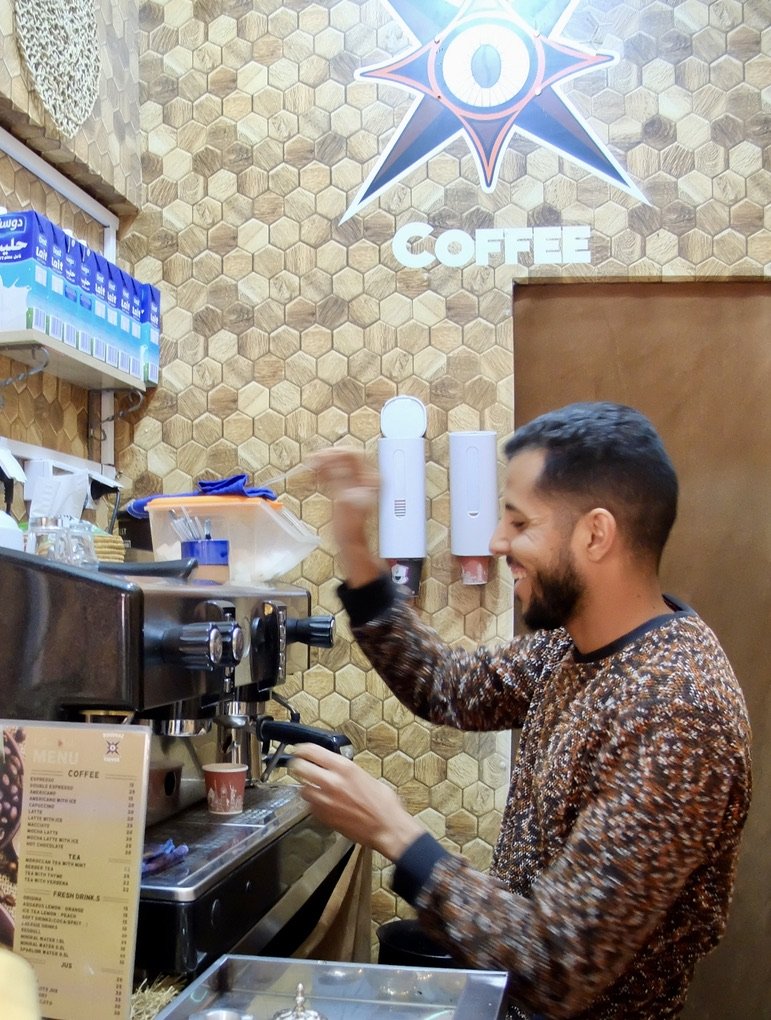
This barista made a lovely coffee.
Zoom in & you’ll note that most of the coffee drinks were 20 dirham or about $2-.

-
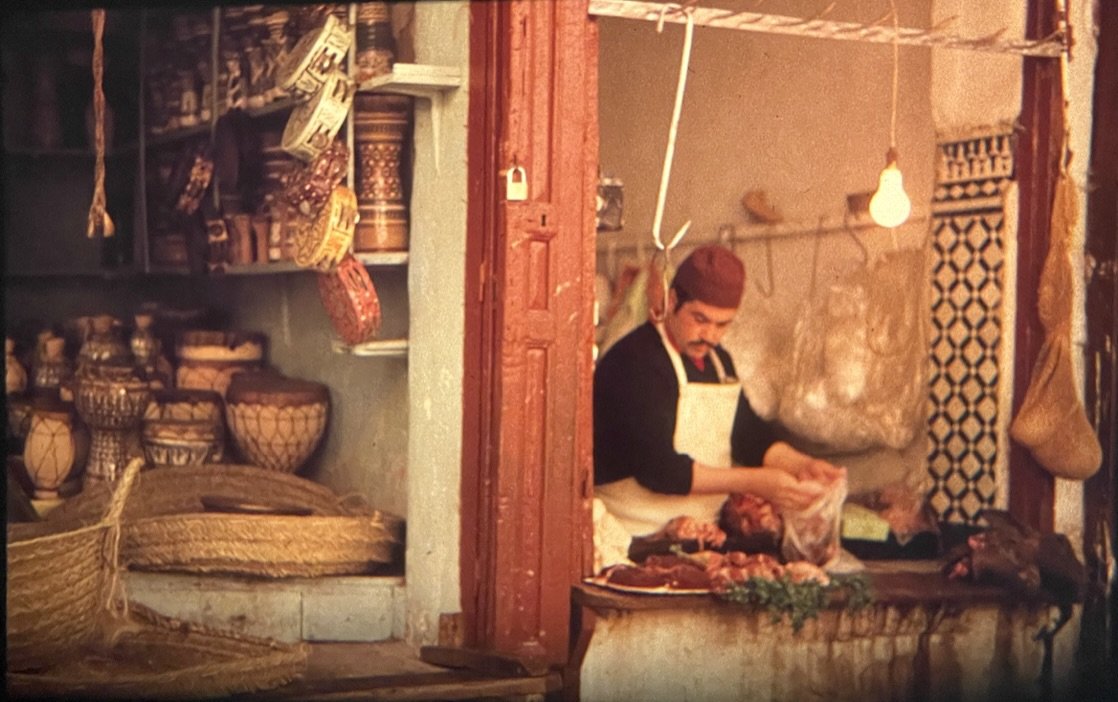
1978 in the Medina, Marrakech.
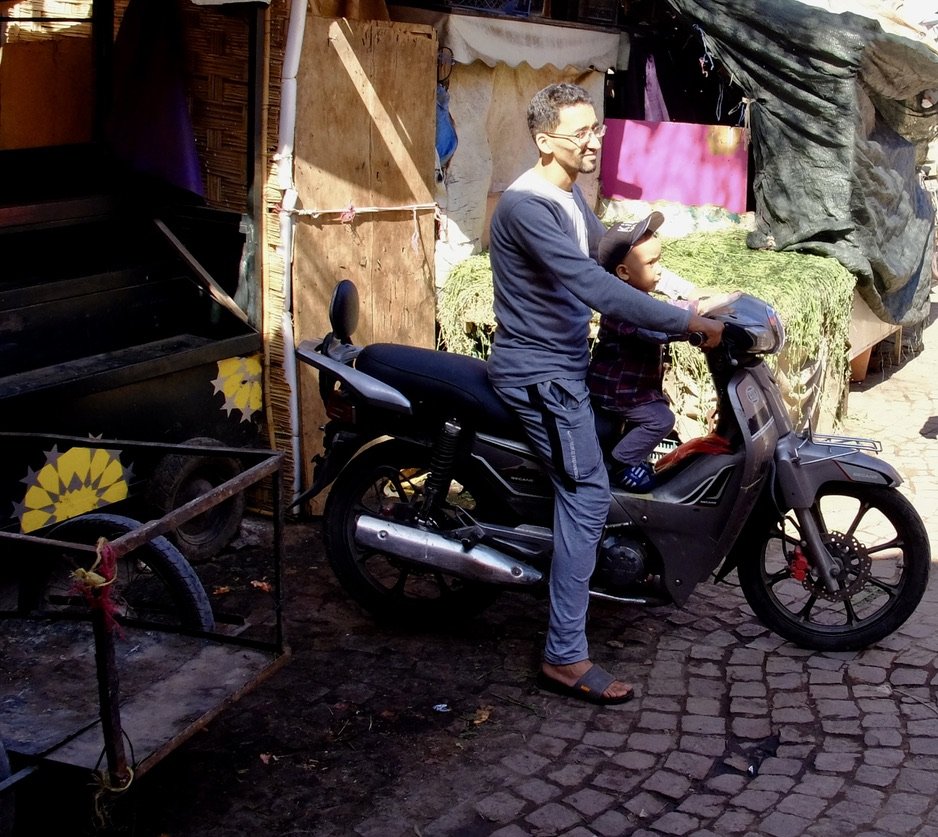
Dad put a helmet on before they took off but not on his son.
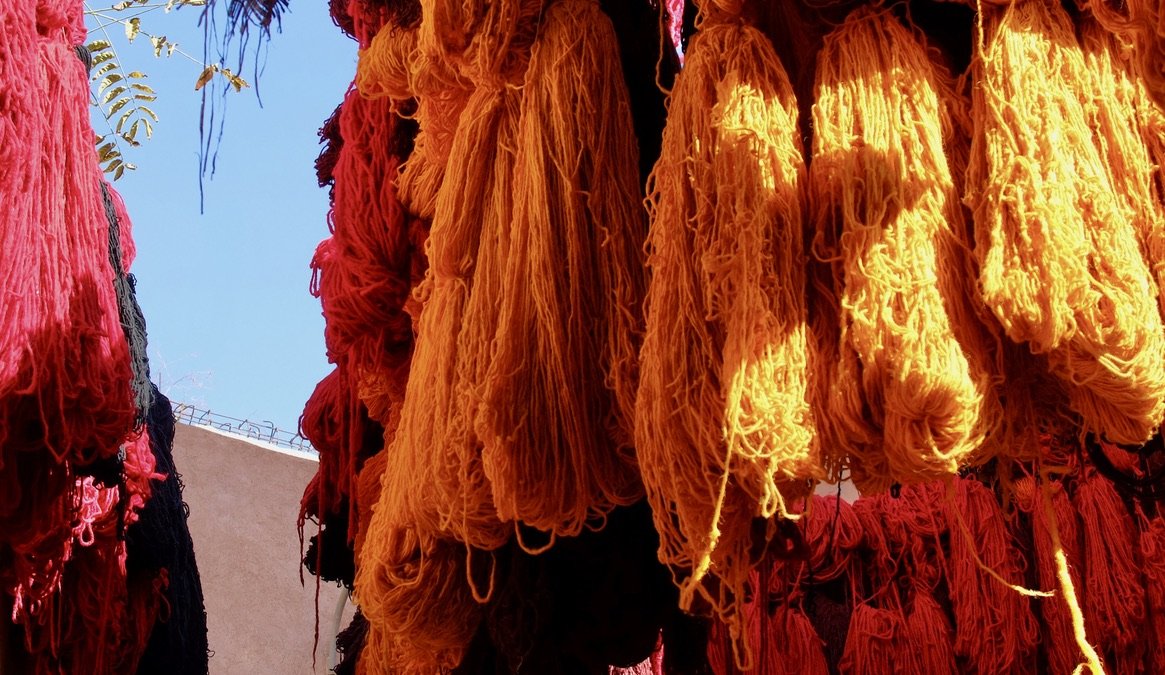
-
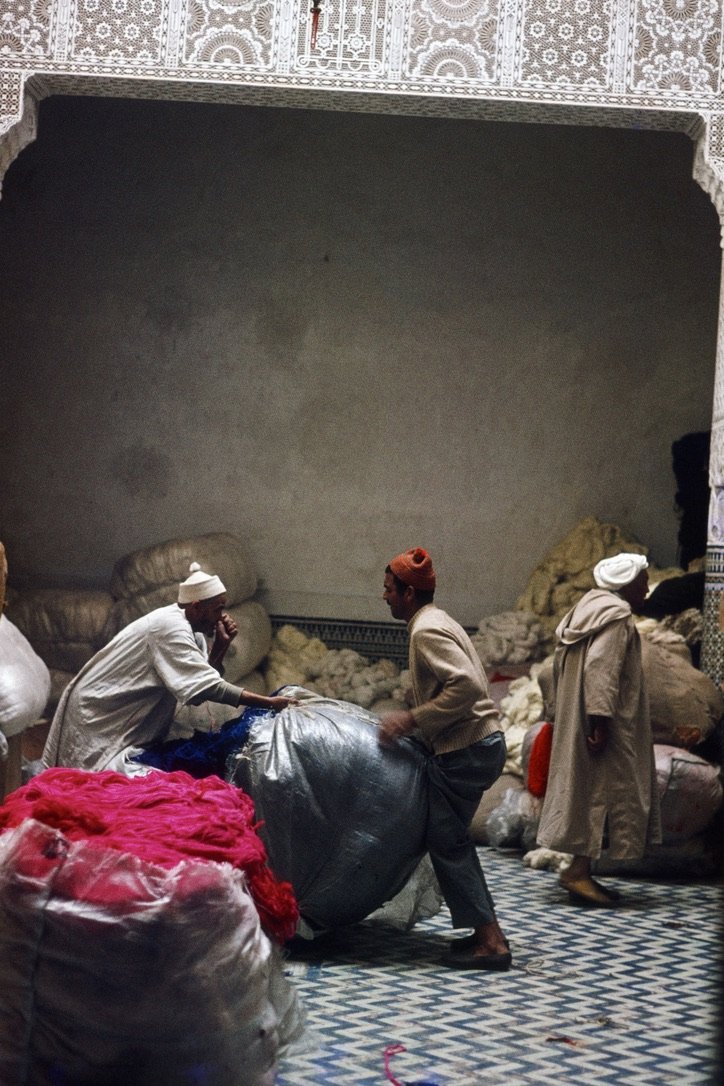
Wool market 1978.
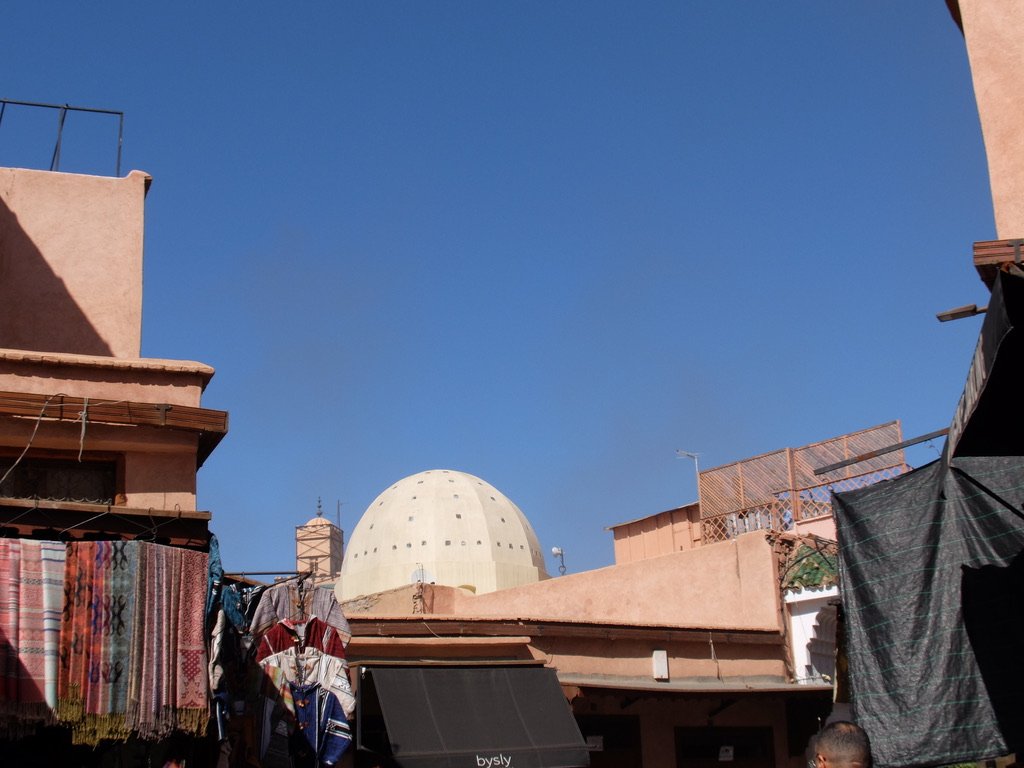
-
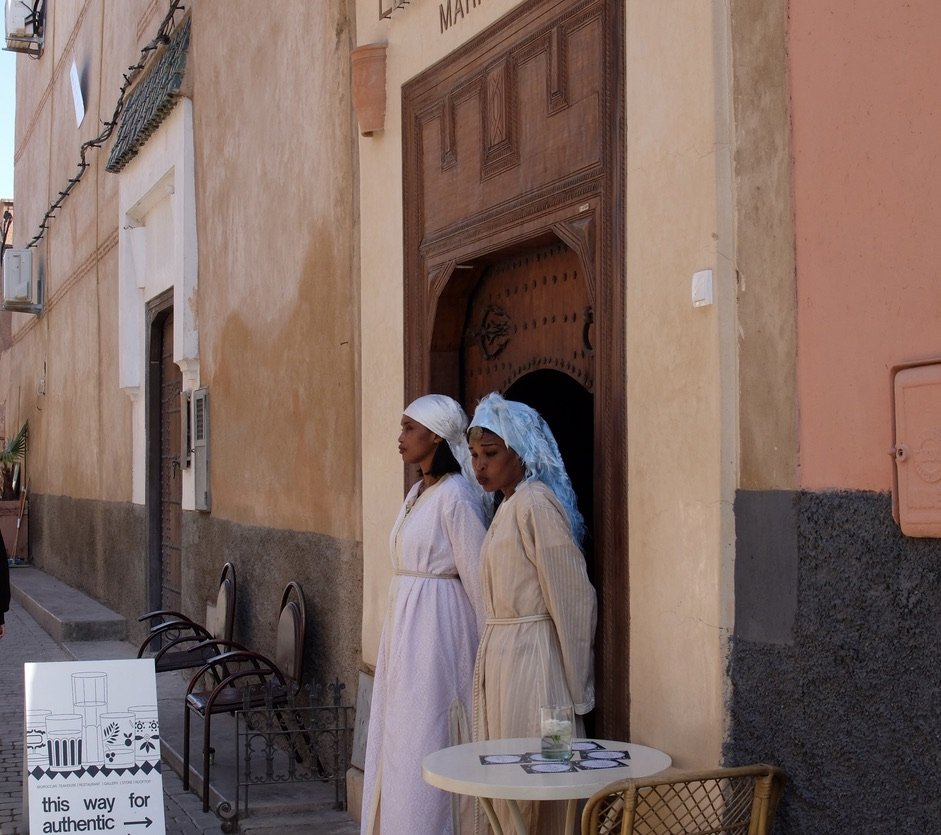
-
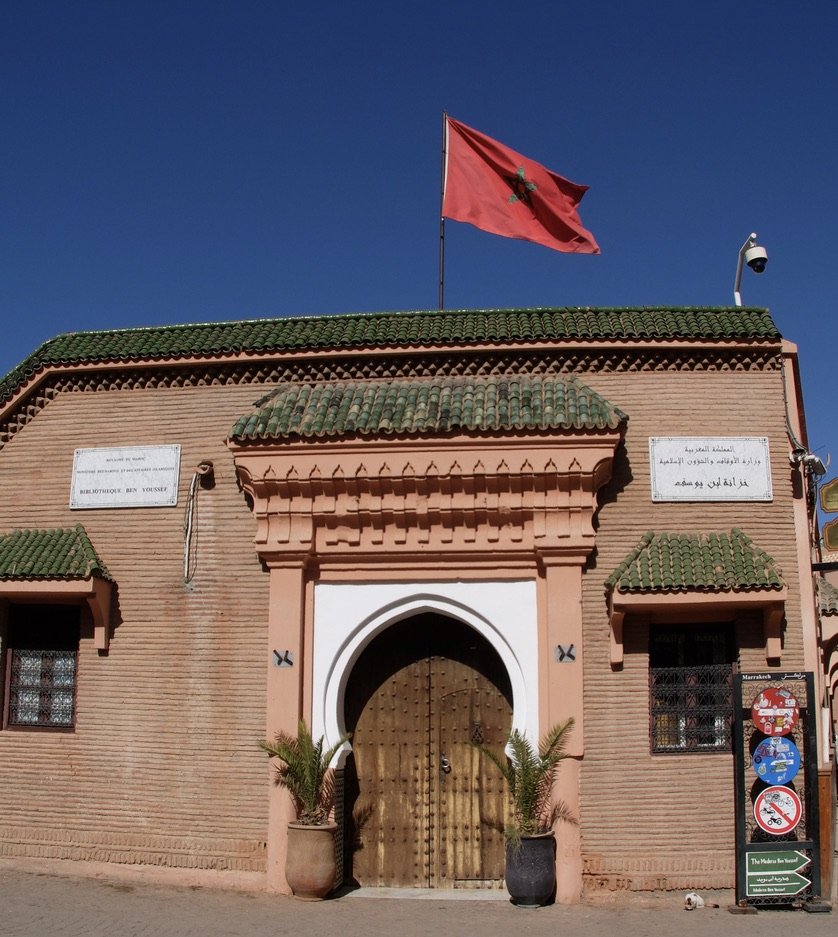
BIBLIOTHEQUE BEN YOUSSEF.
There is some scant evidence that before the French Protectorate, the Moroccan flag had a six pointed star like the Star of David.
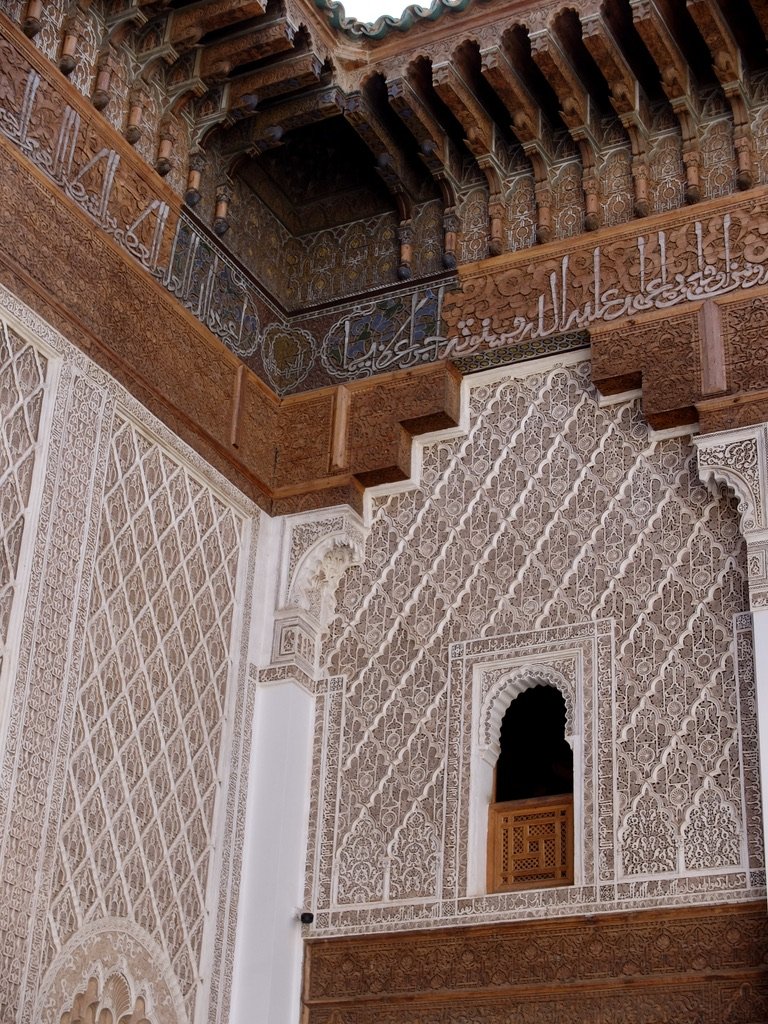
Madrassa Ben Youssef.
“Madrasa means ‘school’ and the first school founded on this site was in the 1300s, though that building was later replaced by the one you see today….commissioned in 1564 … At its height, it accommodated 900 students and was the largest Islamic college in the Maghreb (Northwest Africa). It contains over 130 rooms and students lived, studied and prayed in this building.”
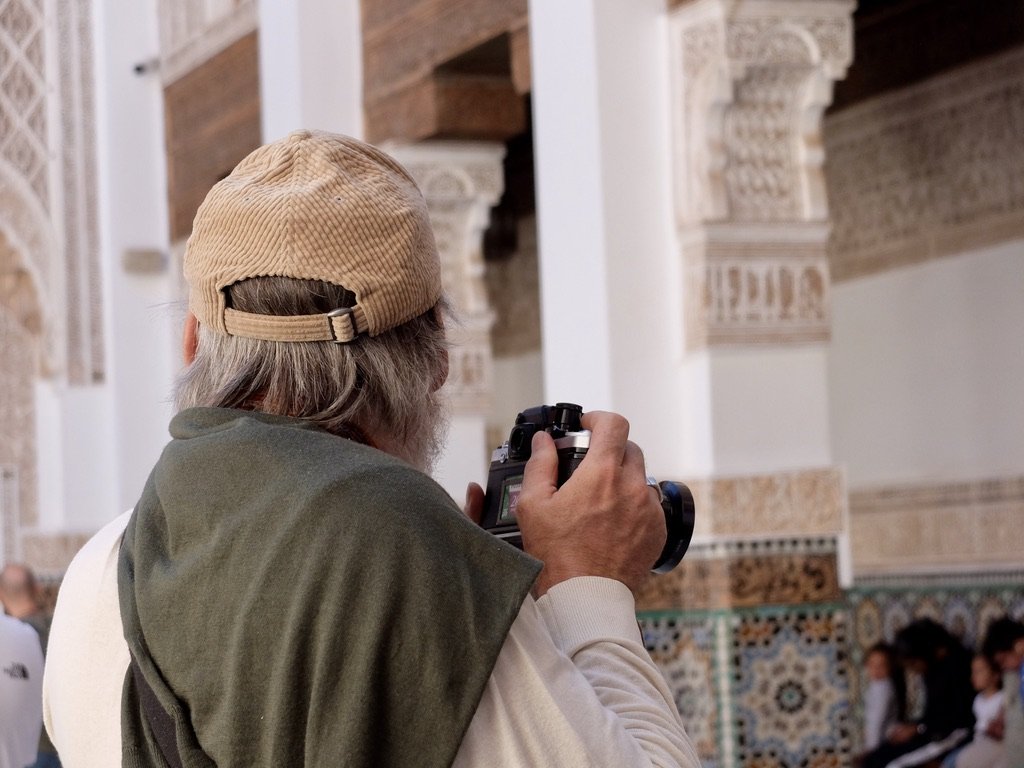
For the photgraphers, note that he’s photographing the madrassa using FujiFiim in a film camera.
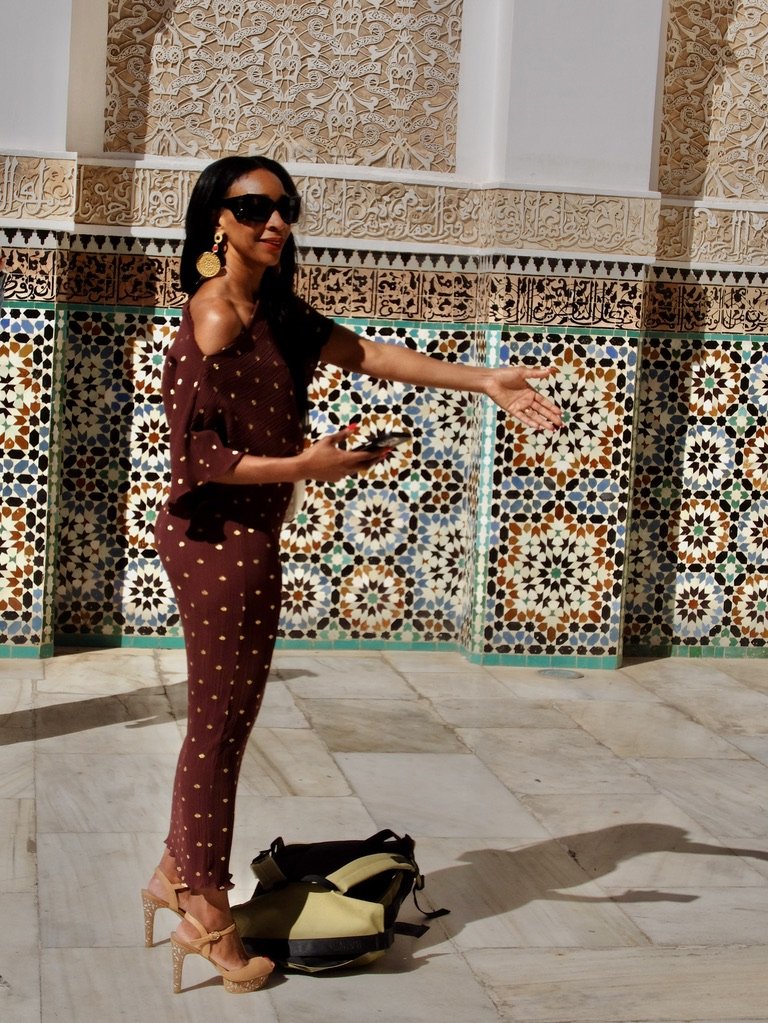
-
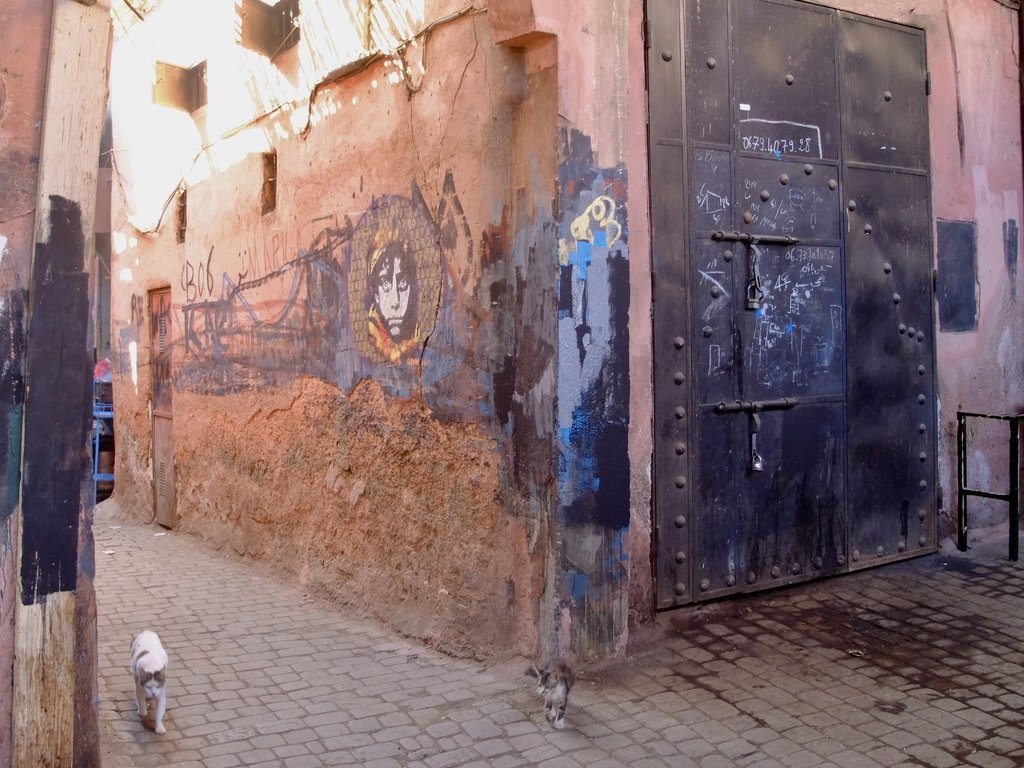
-
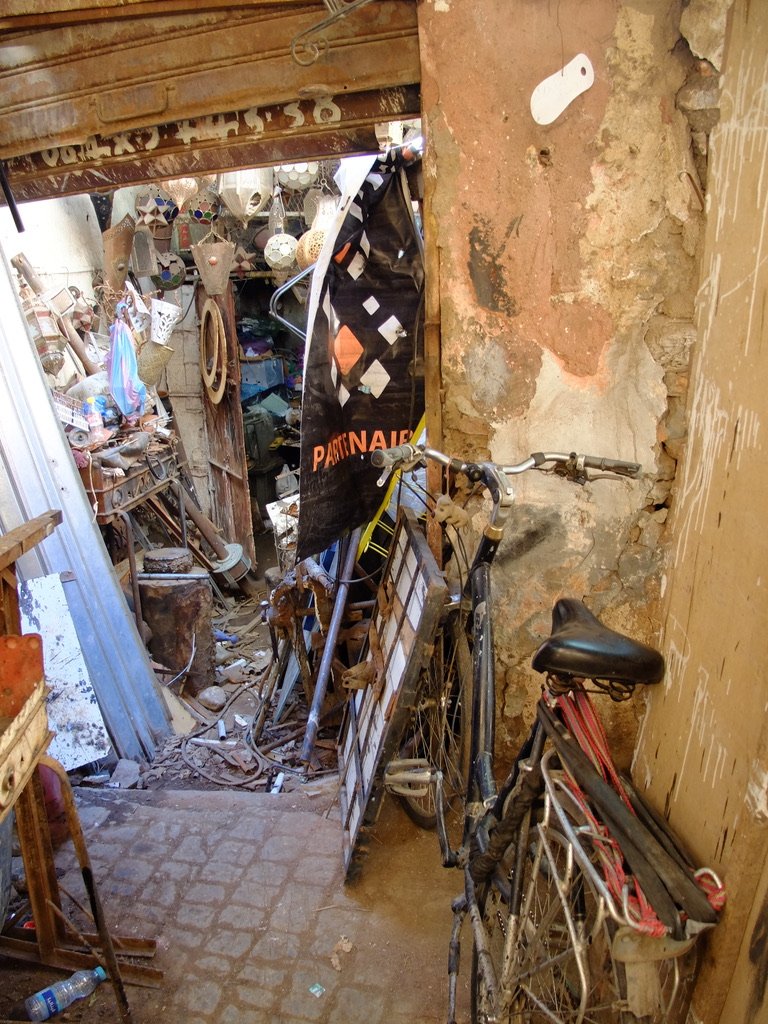
A mess but right near by...

-
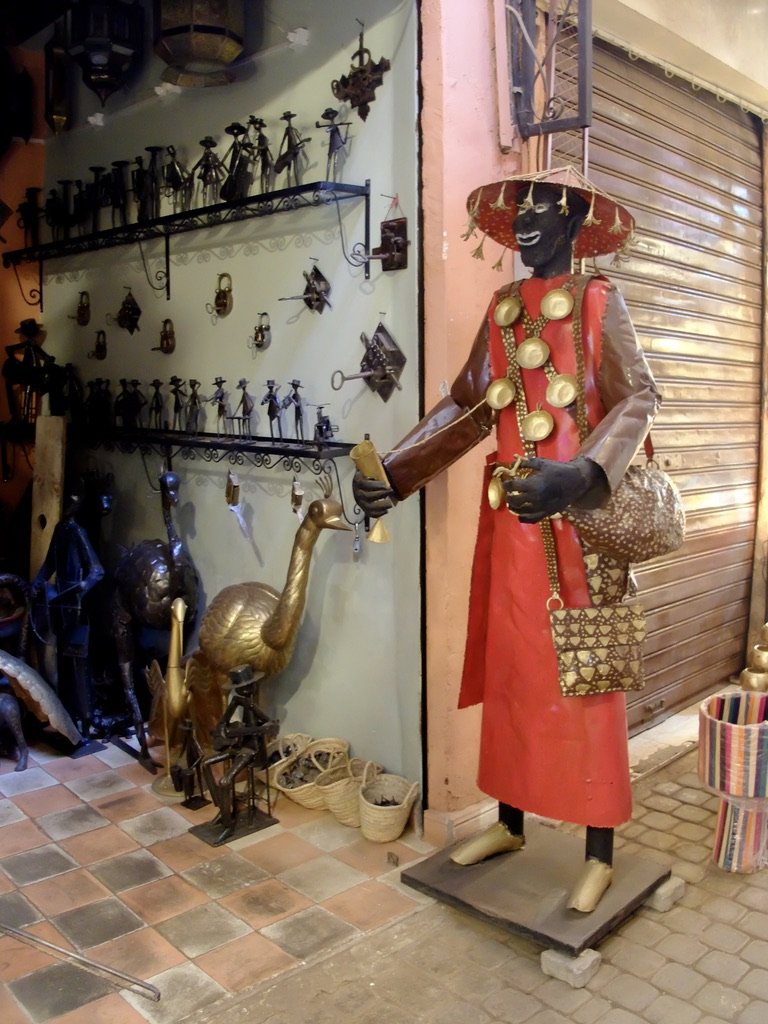
I got a photo of a water seller, garrab, without having to pay him.
They still ply their trade in the Jemaa el-Fnaa (main square) but they are becoming extinct because of folks carrying around bottled water.

-
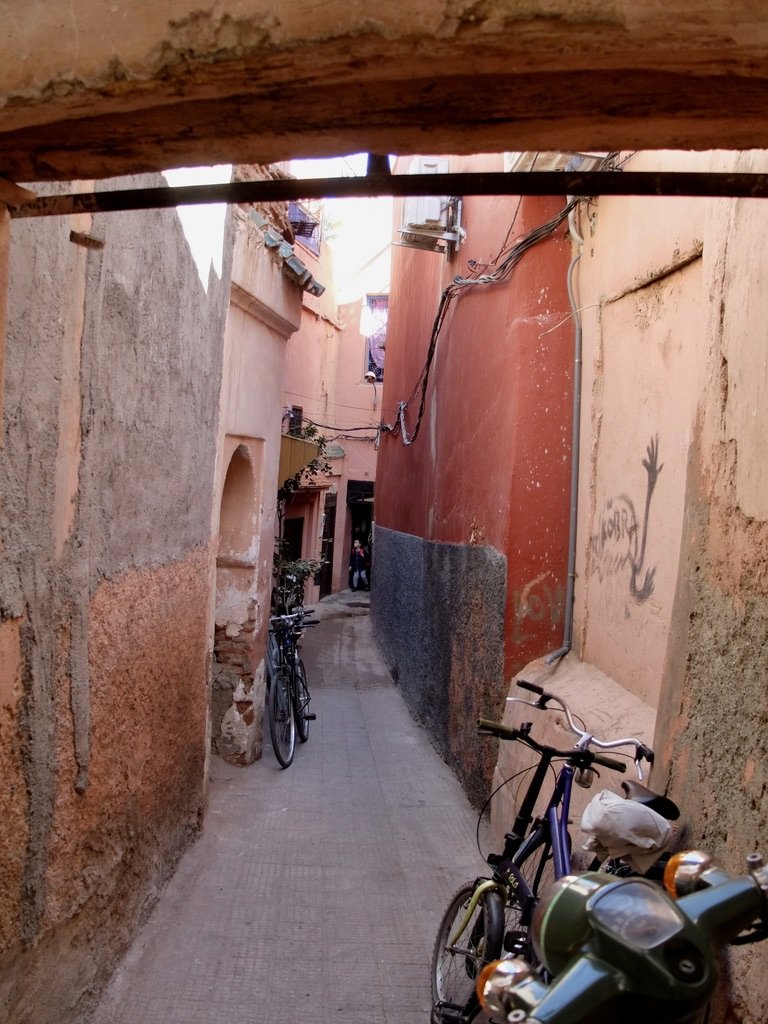
-
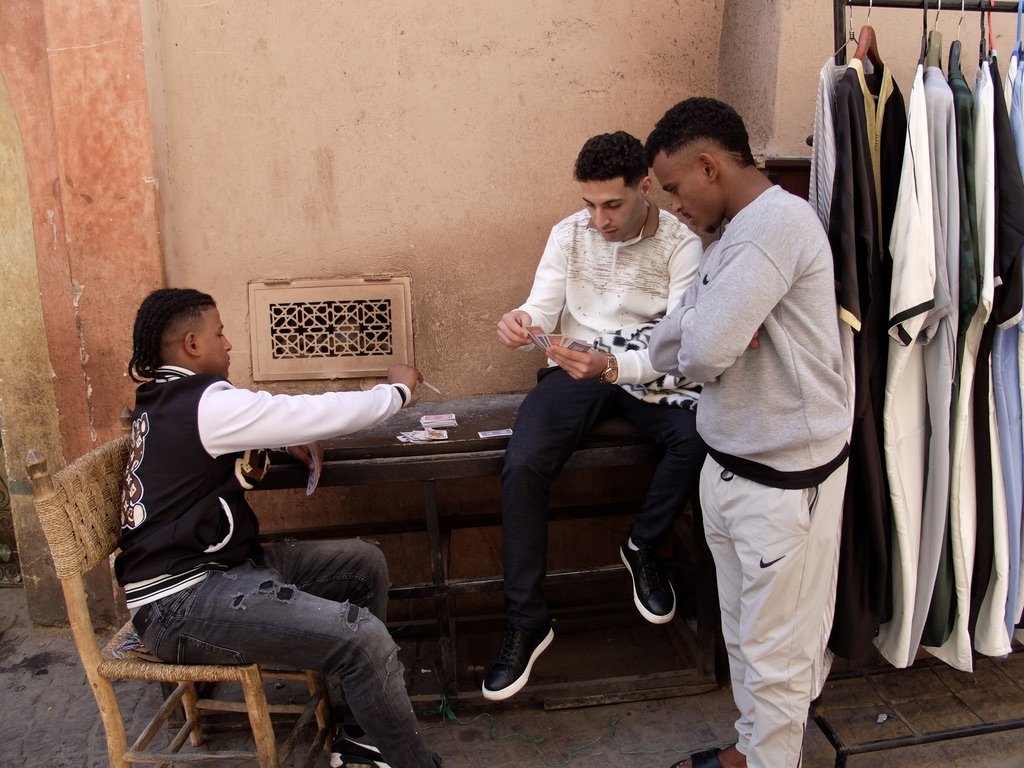
-
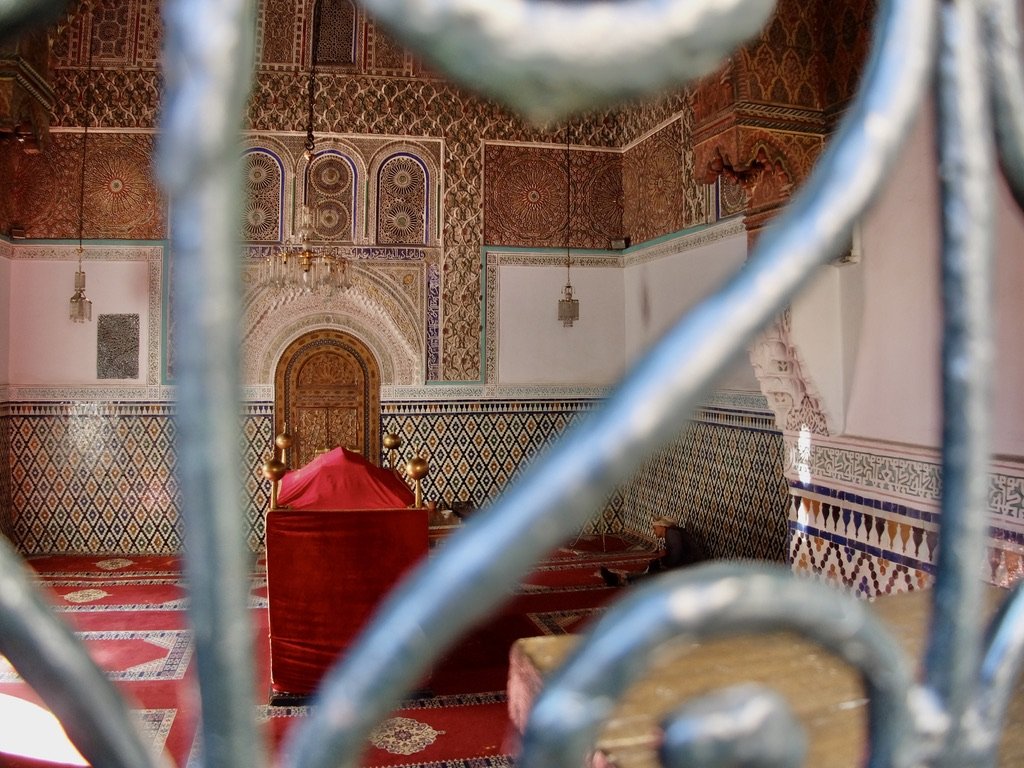
Some famous person's tomb with a caretaker.
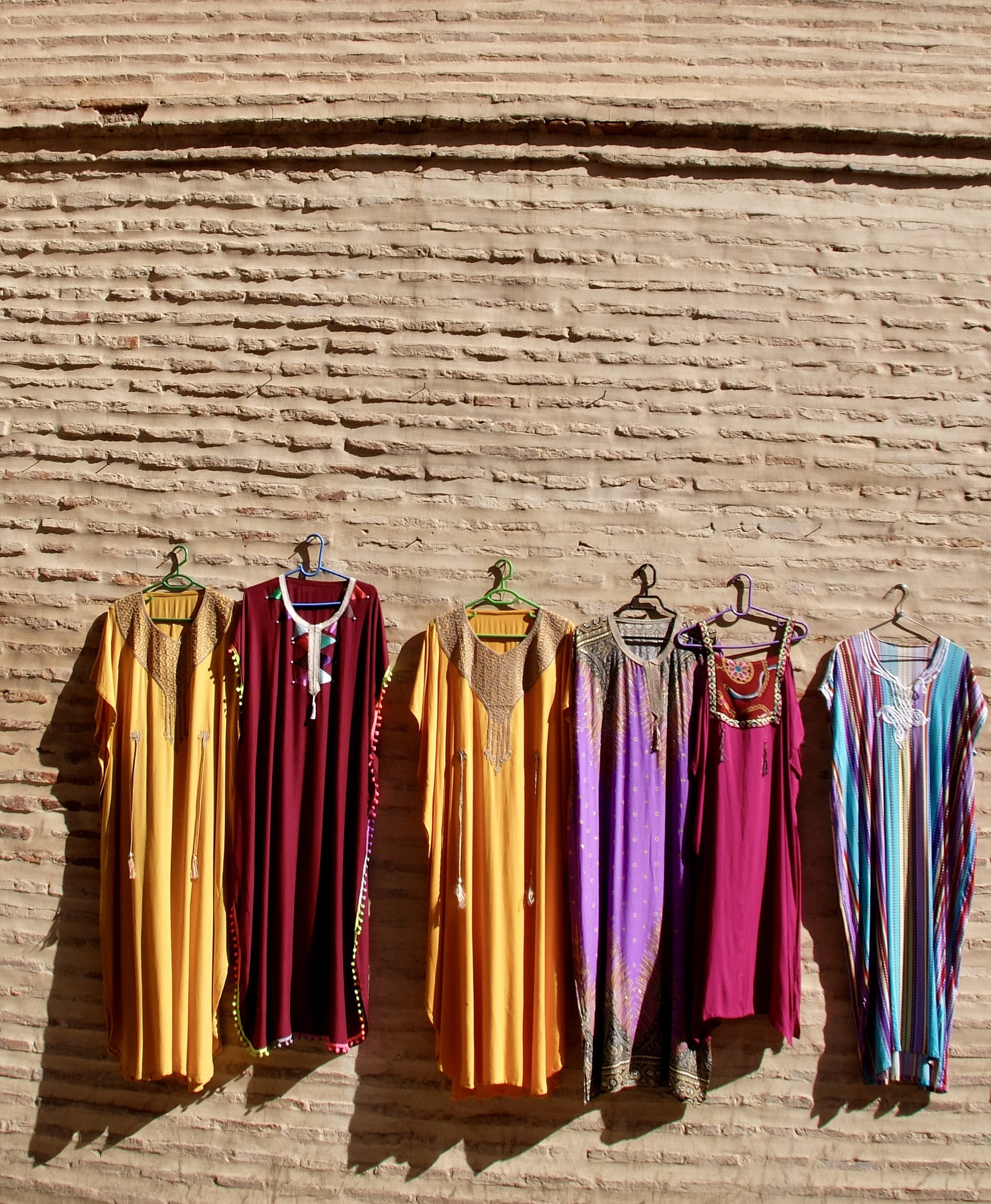
-
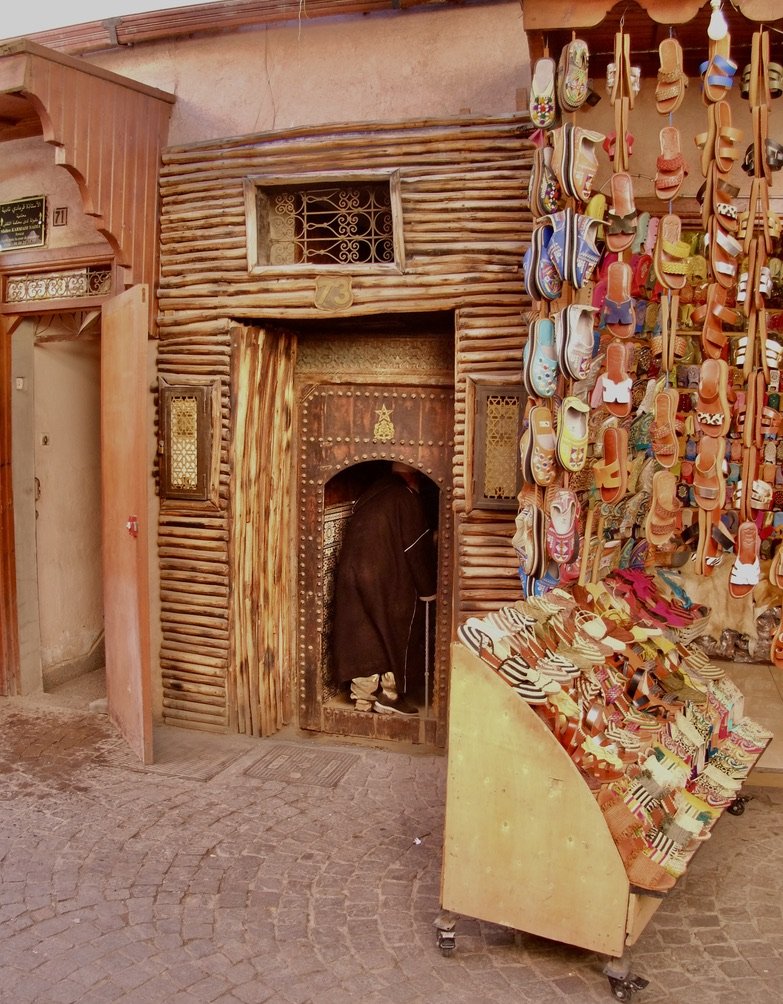
Home sweet home.
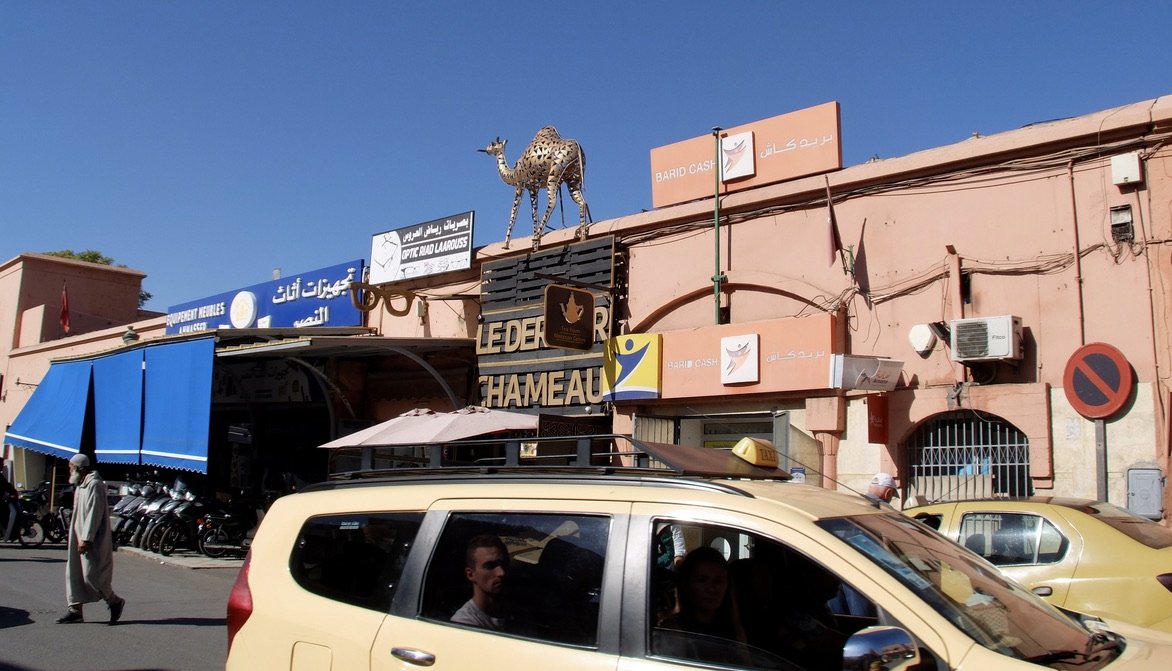
Near the Jemaa el-Fnaa.
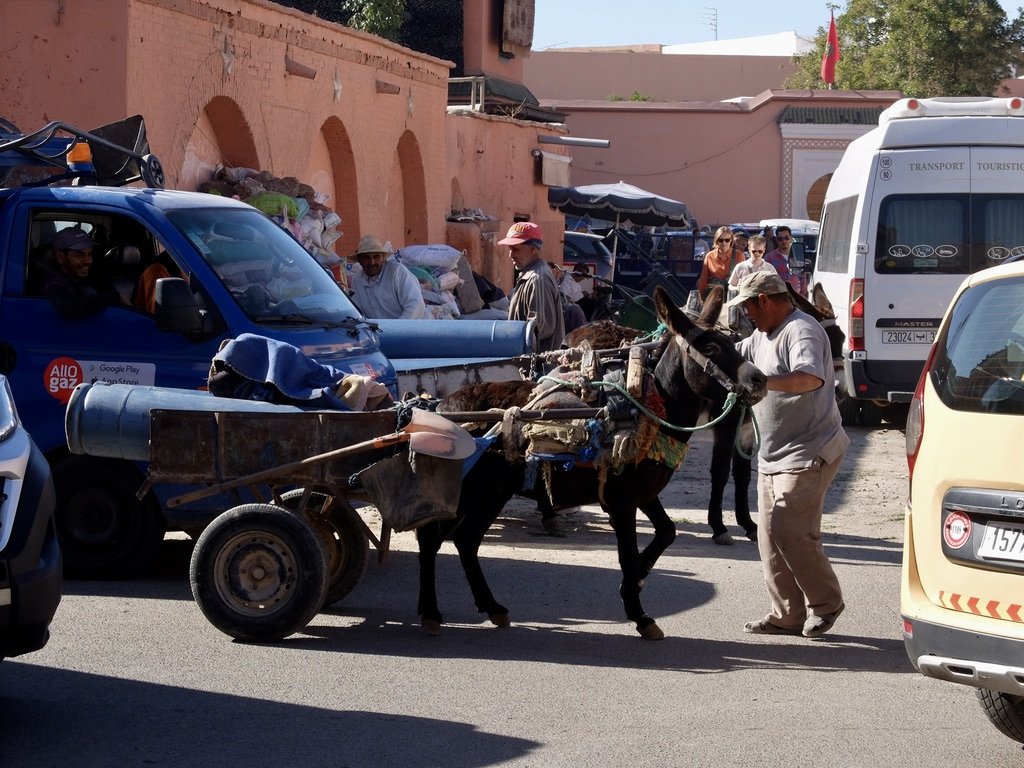
Near the Jemaa el-Fnaa.
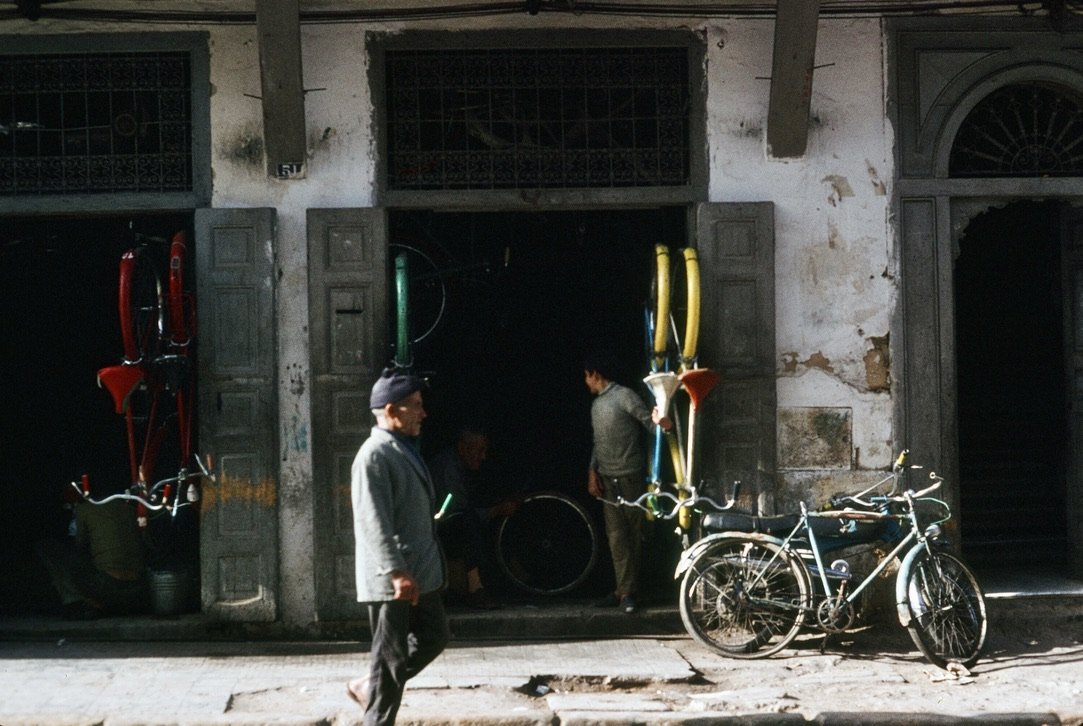
Bicycles are plentiful in Marrakech but I hadn’t seen a bike shop like this one I saw in 1978 until near the Jemaa el-Fnaa.
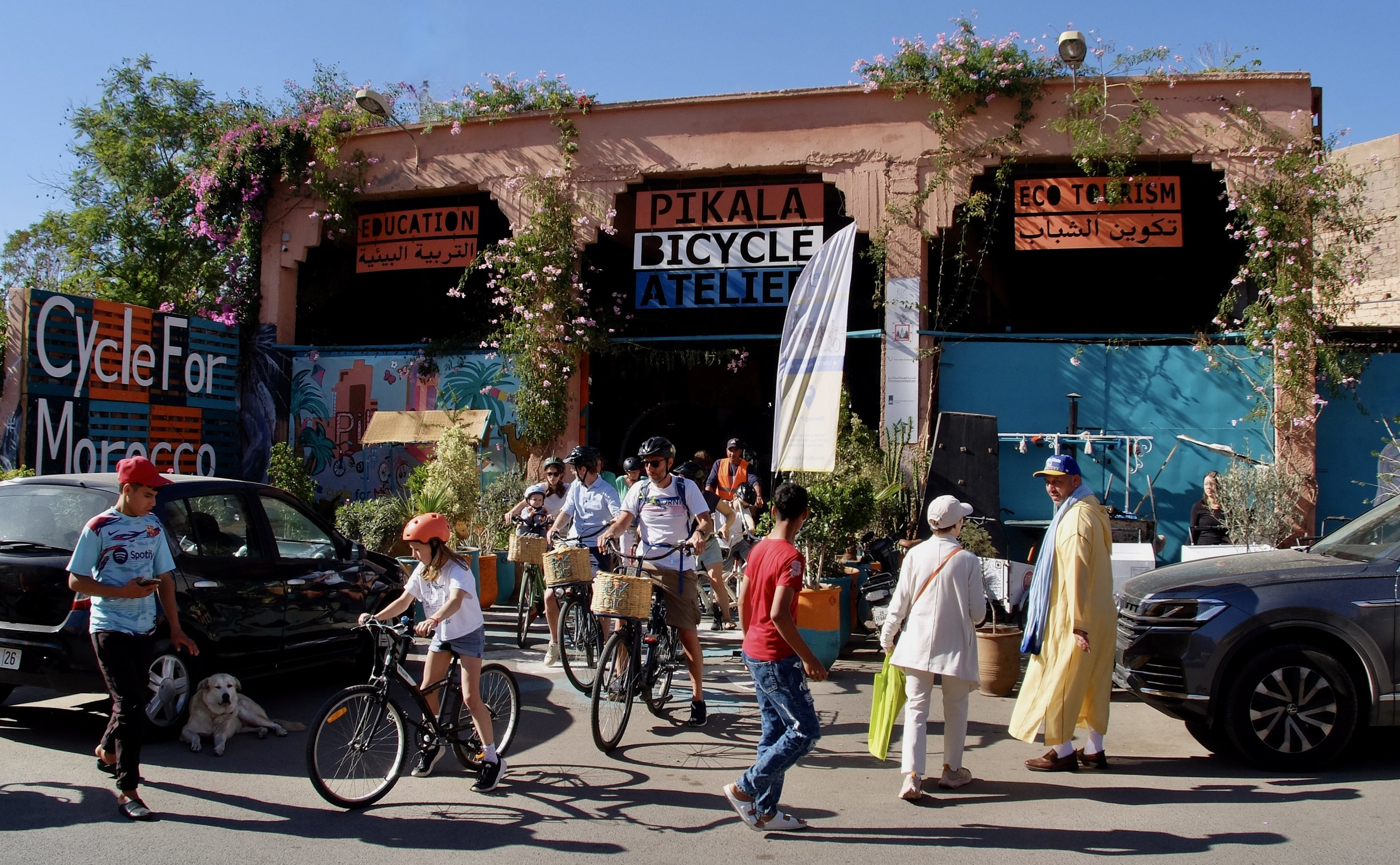
Some brave souls embarking on a bicycle tour of Marrakech.
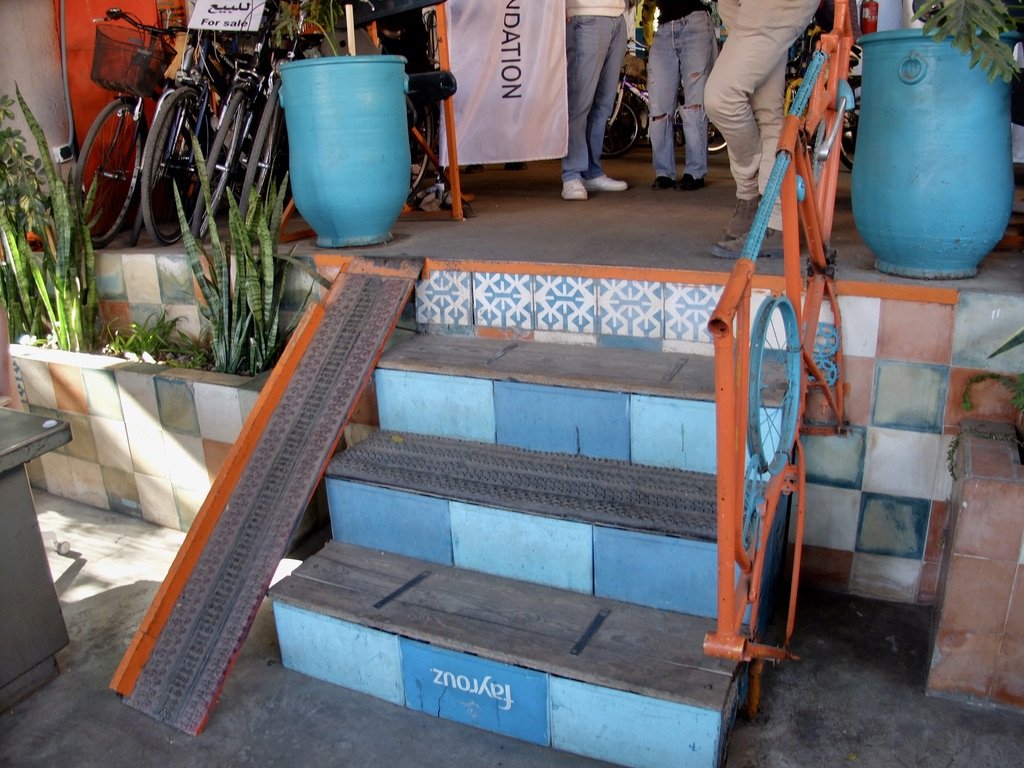
The ramps are neat as they are covered with bicycle tires to make better traction.
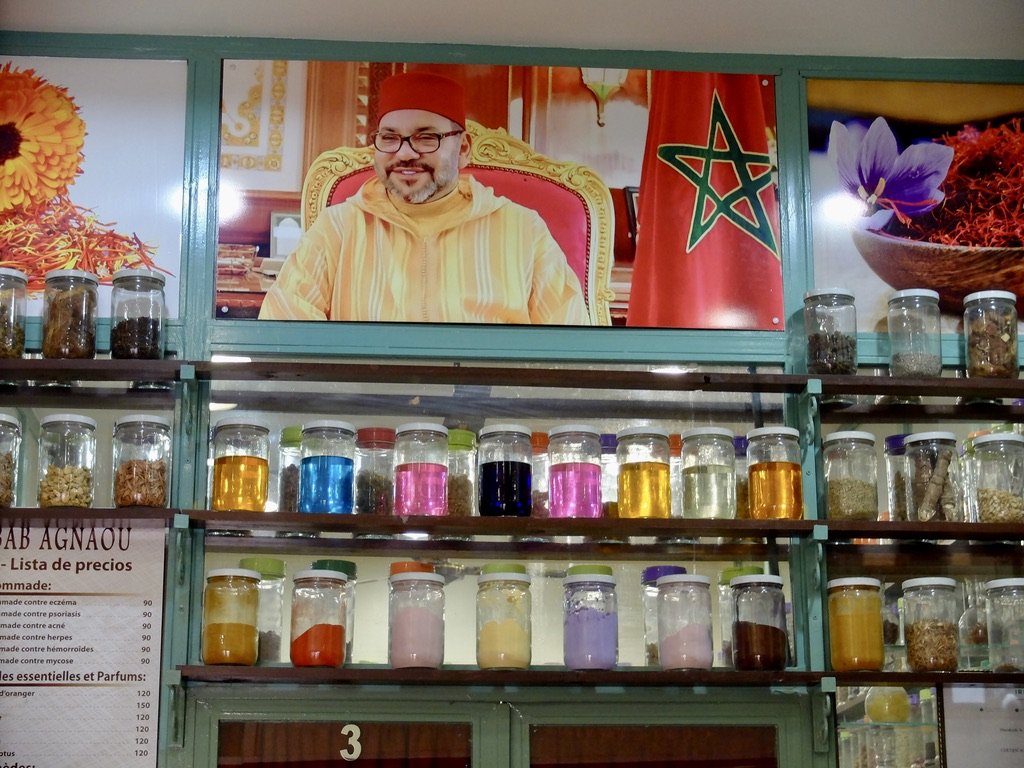
Herboristerie Bab Agnaou.
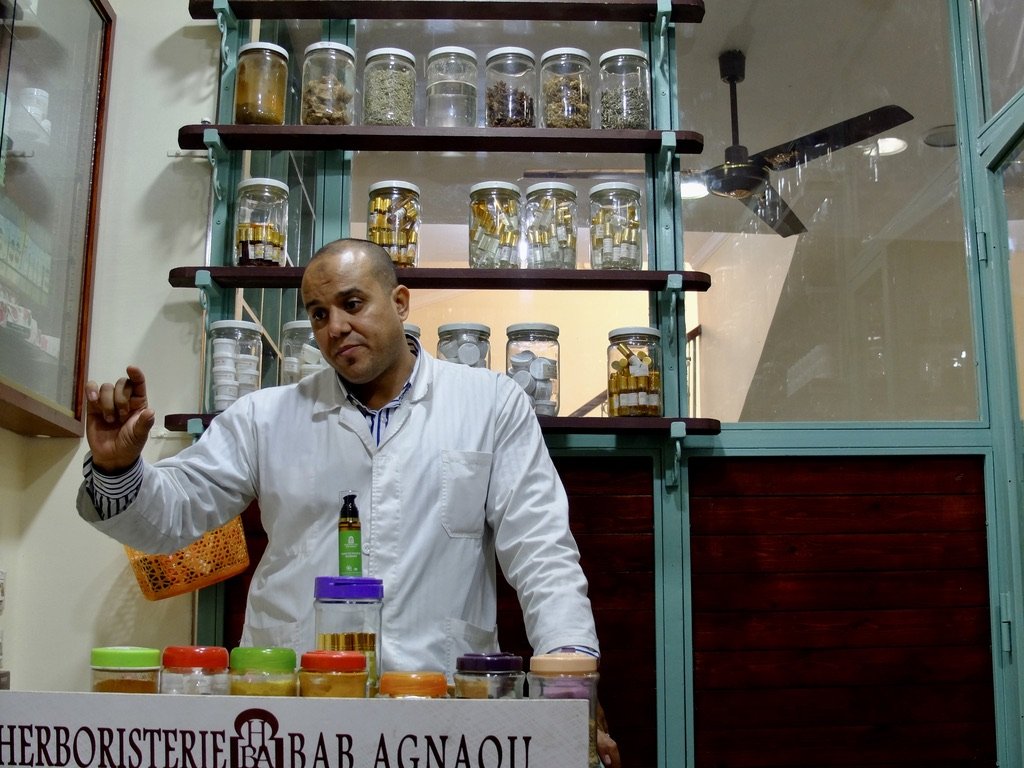
Herboristerie Bab Agnaou.
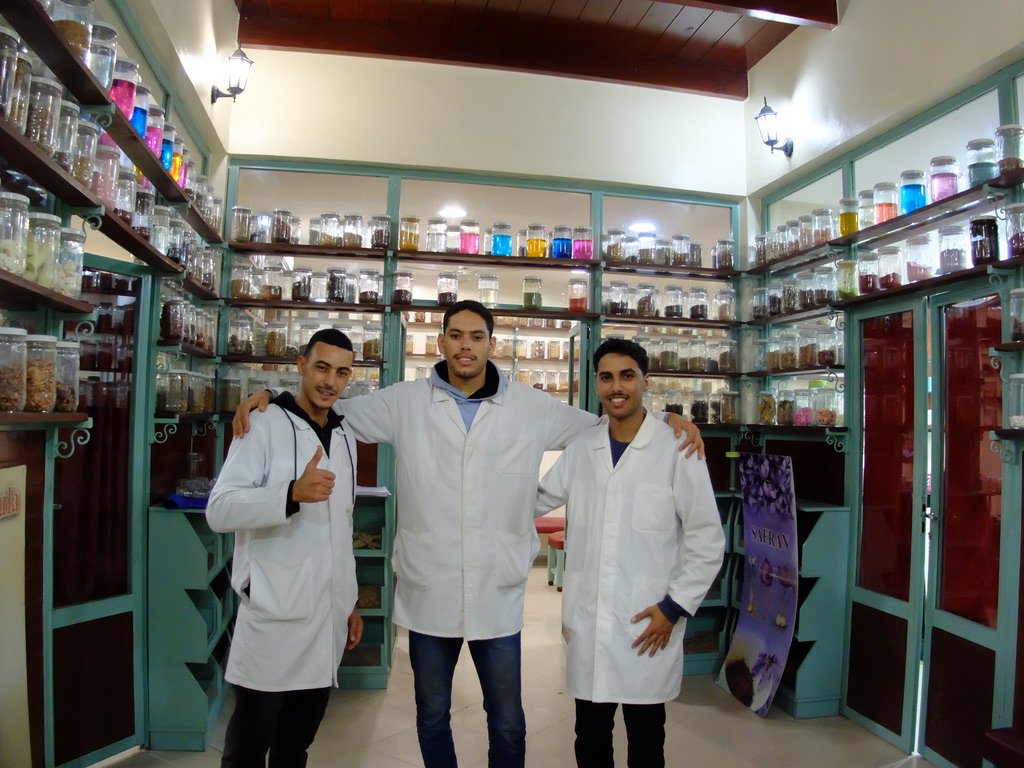
Herboristerie Bab Agnaou.
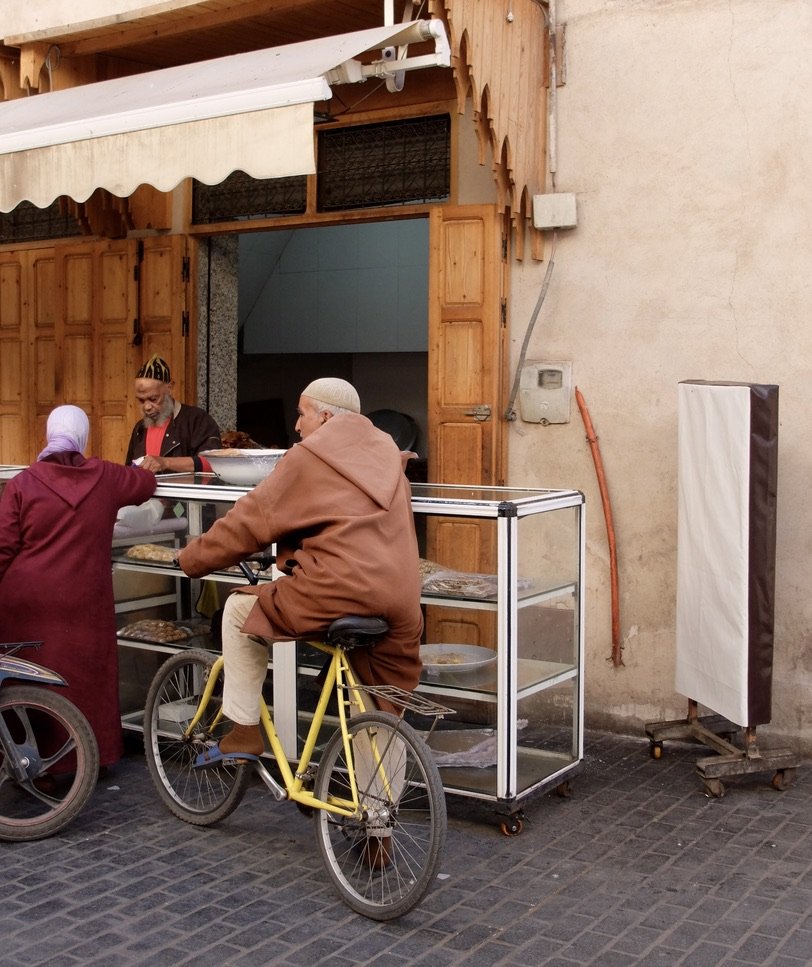
-
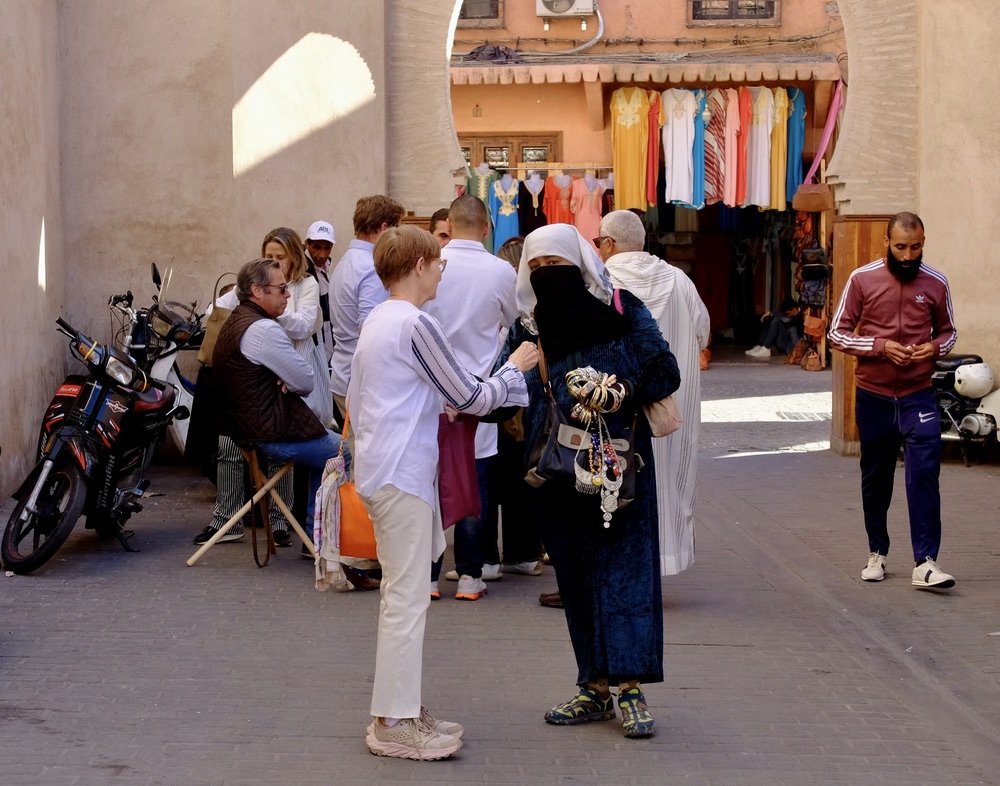
All Naomi (Naima) did was to acknowledge this woman & next thing you know Naina’s walking away having bought two bracelets.
Next time, more care!!
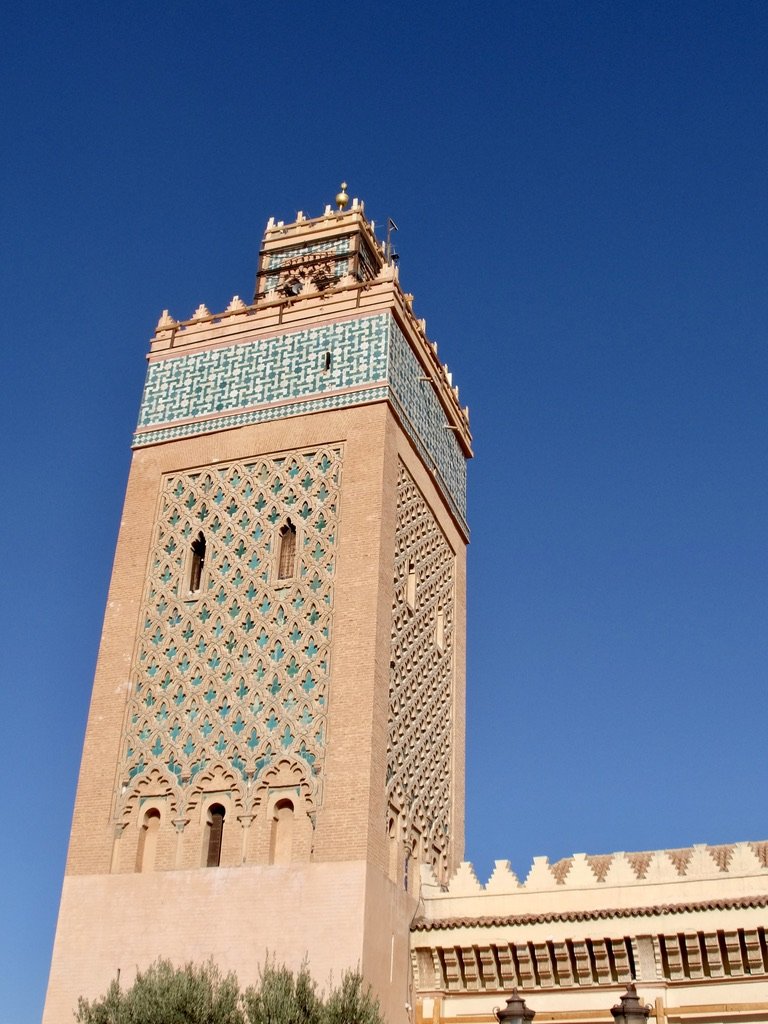
-
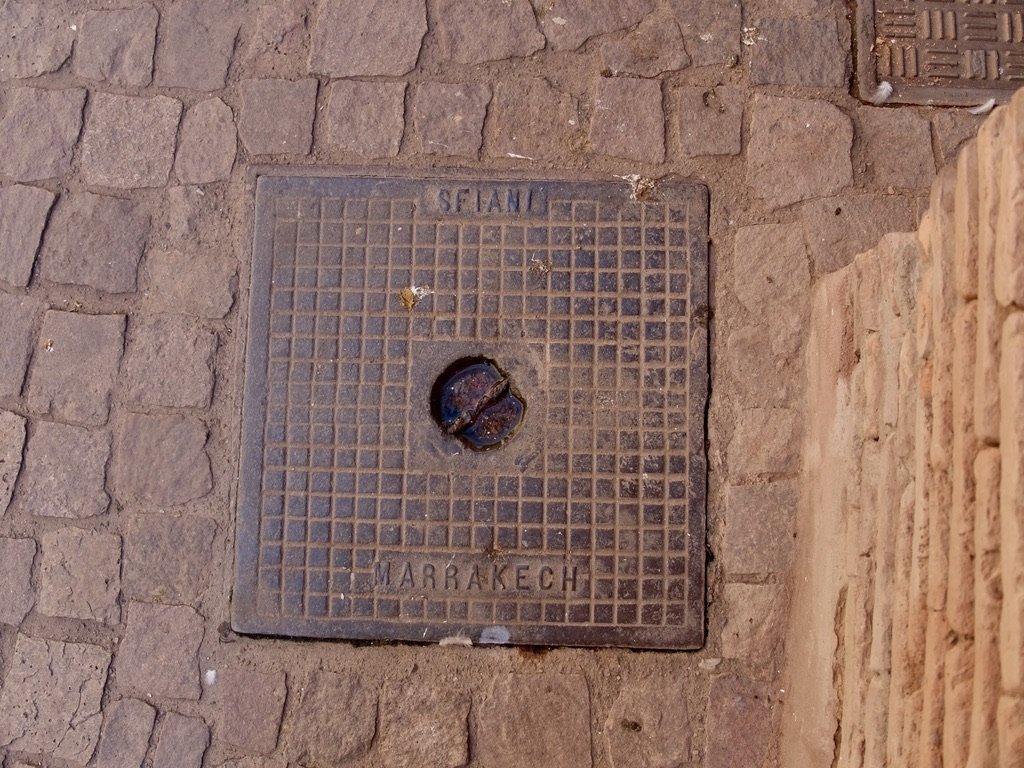
I finally saw one with Marrakech.

The two-in-one door. The middle knocker is for friends & family & the small, middle door will be opened for their entrance. The upper right hand knocker is for tradespeople. The larger door opening allows the ingress of large items.
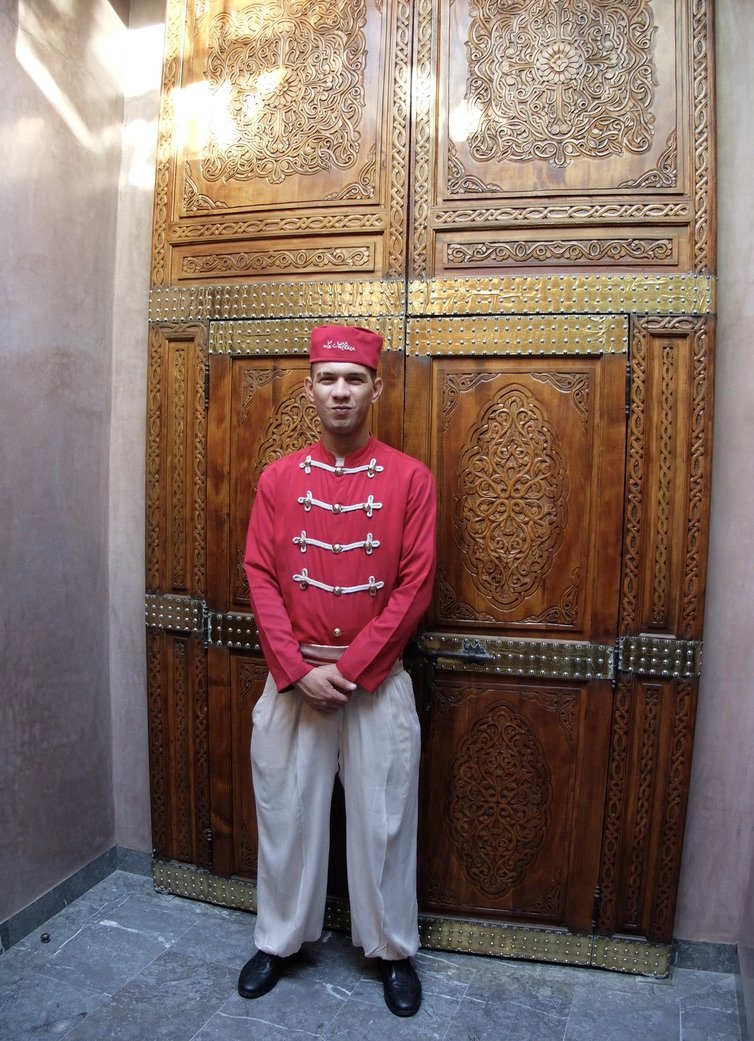
La Sultana.
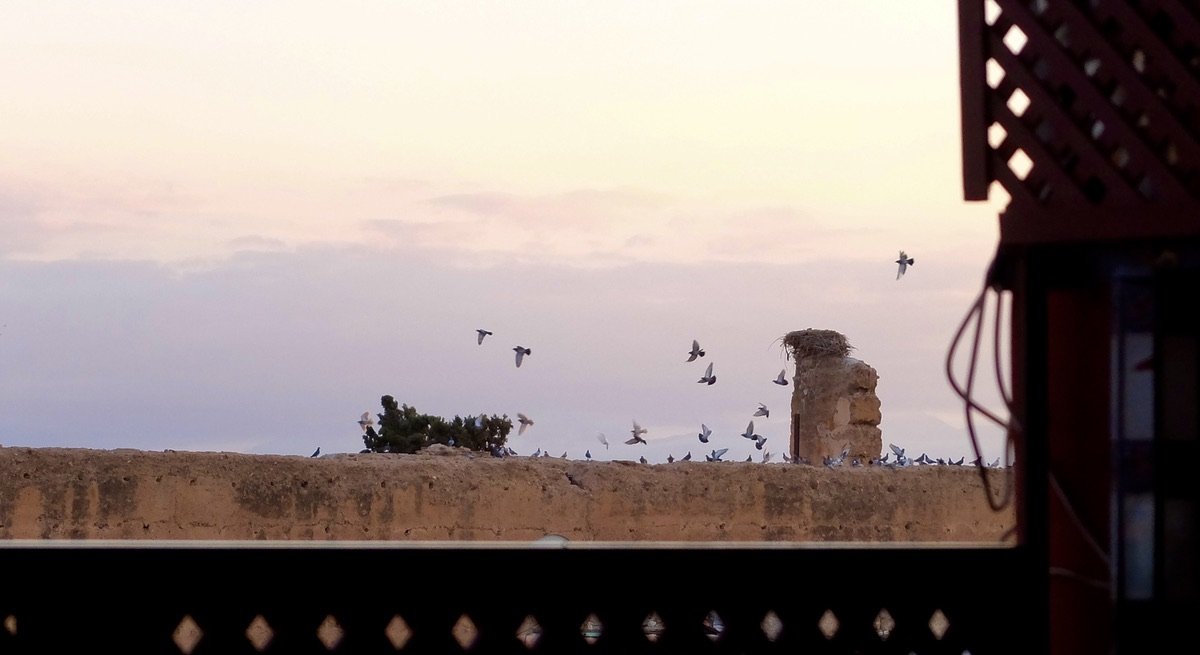
We had hardly seen any birds. This is from the rooftop of the Dar Touareg Café Restaurant at sunset.
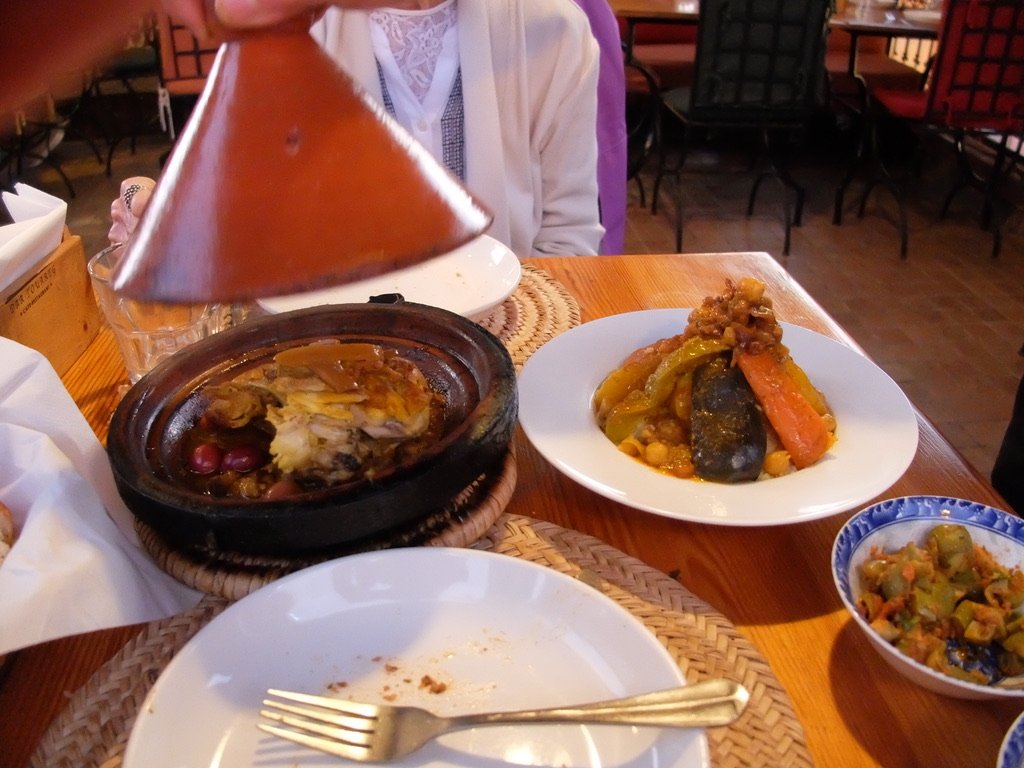
Dar Touareg Café Restaurant.
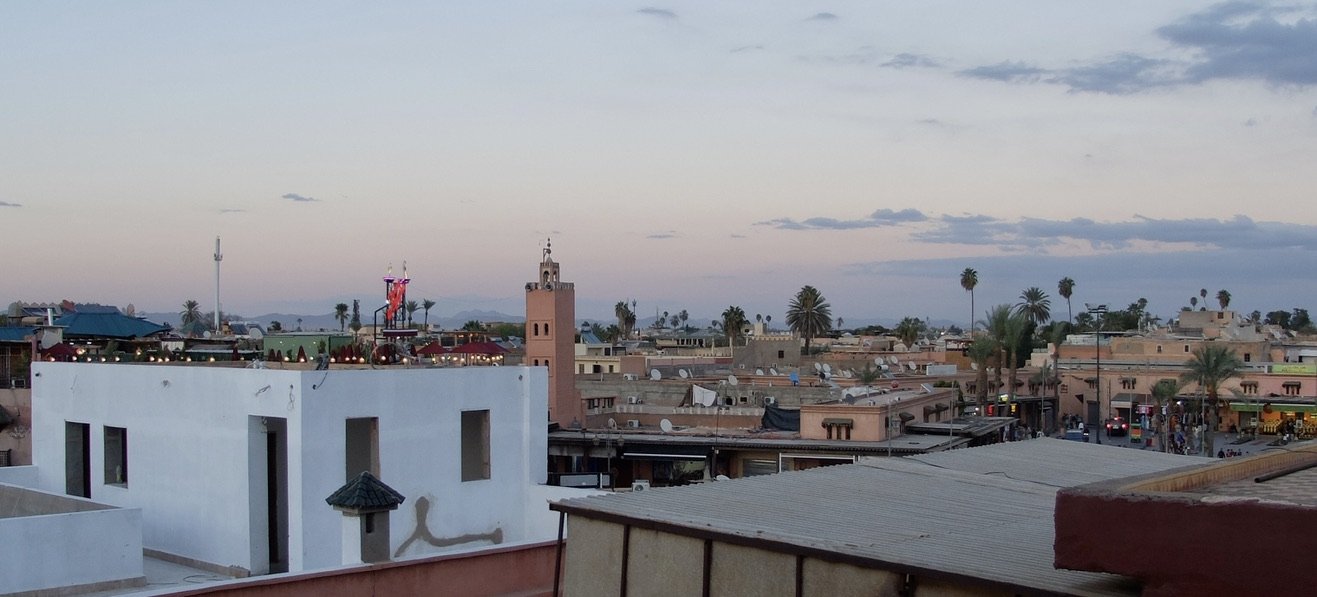
View from Dar Touareg Café Restaurant.
“The city, with its red hue, is a sight to behold. The reddish color comes from the use of a local material called red earth, or Tabia.”
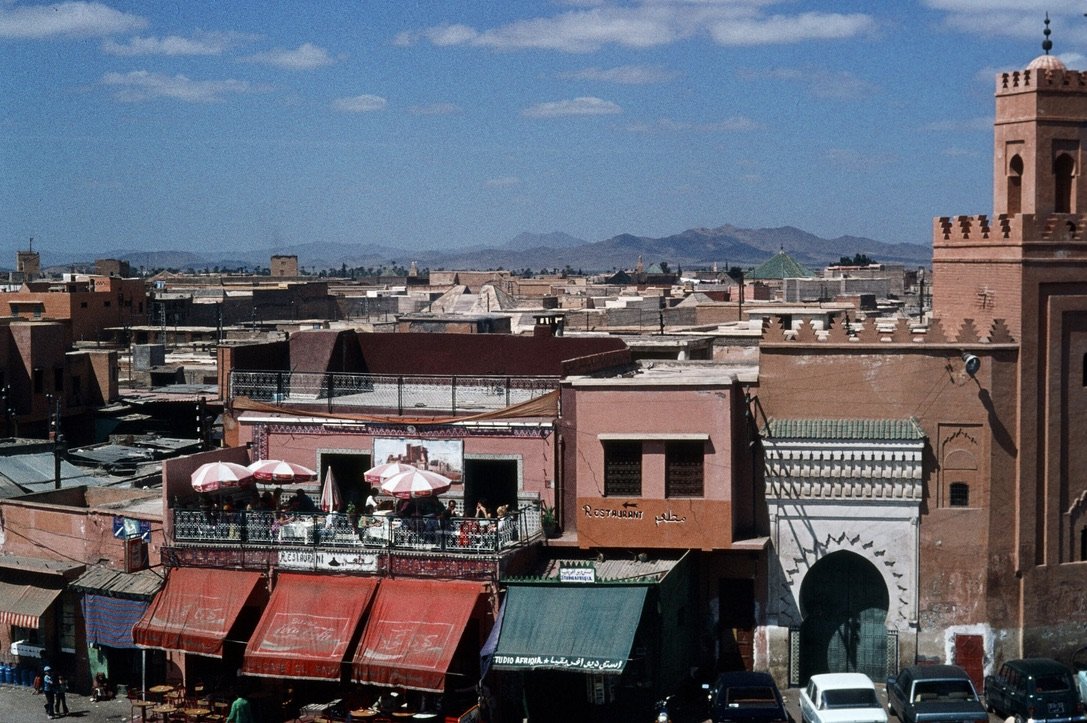
Marrakech from a rooftop in 1978
“The color red has long been associated with Morocco and is said to symbolize the country’s warmth and hospitality.”
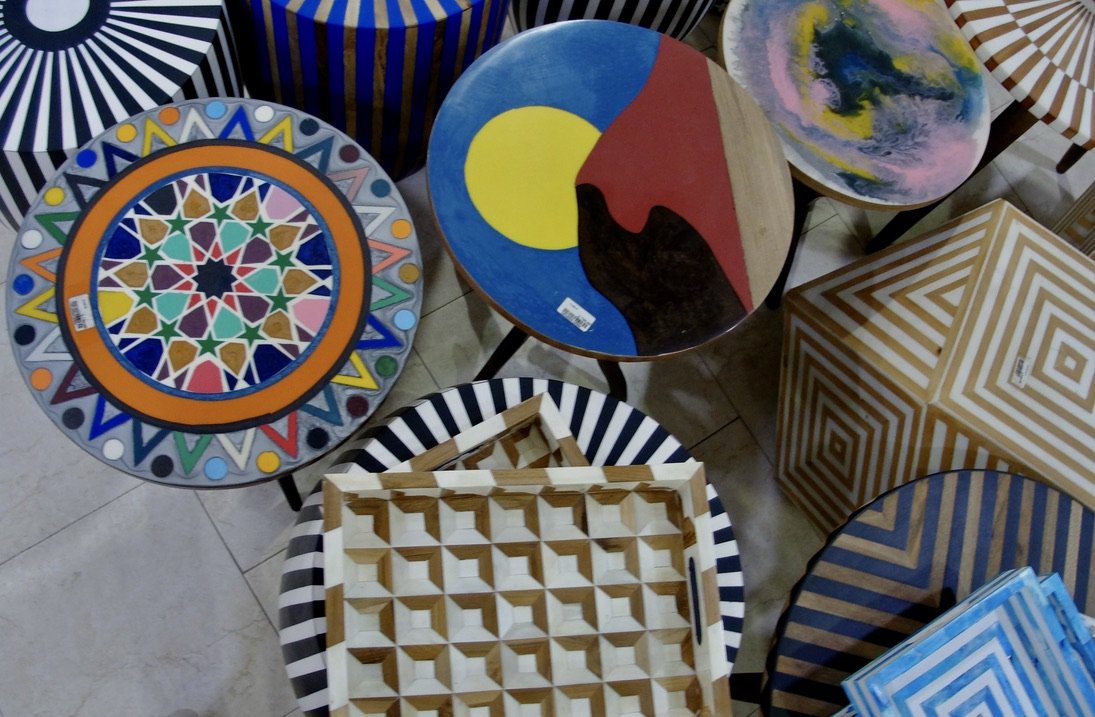
“At Dar Bouchaib, we are more than just a shop. We are a reflection of the rich cultural heritage and artistic traditions of Morocco.”
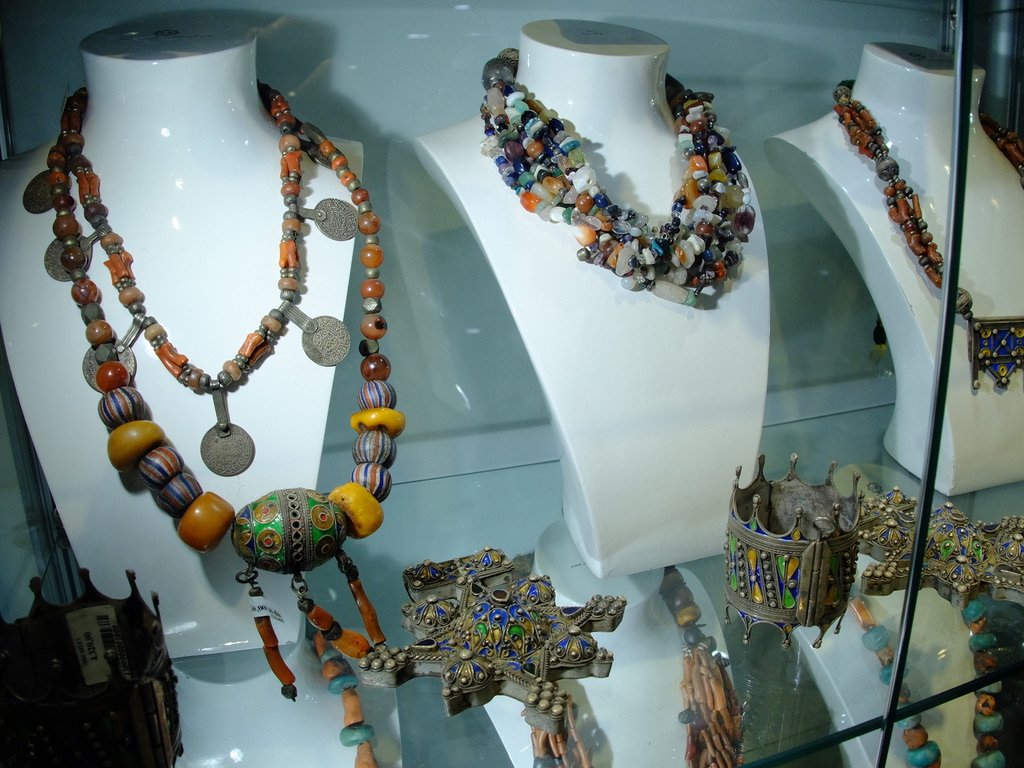
Dar Bouchaib.
Youssef suggested that we look in here on our own. The prices were non-negotiable. Items downstairs might be in our price range & upstairs the museum quality pieces might be beyond us, but we should look.
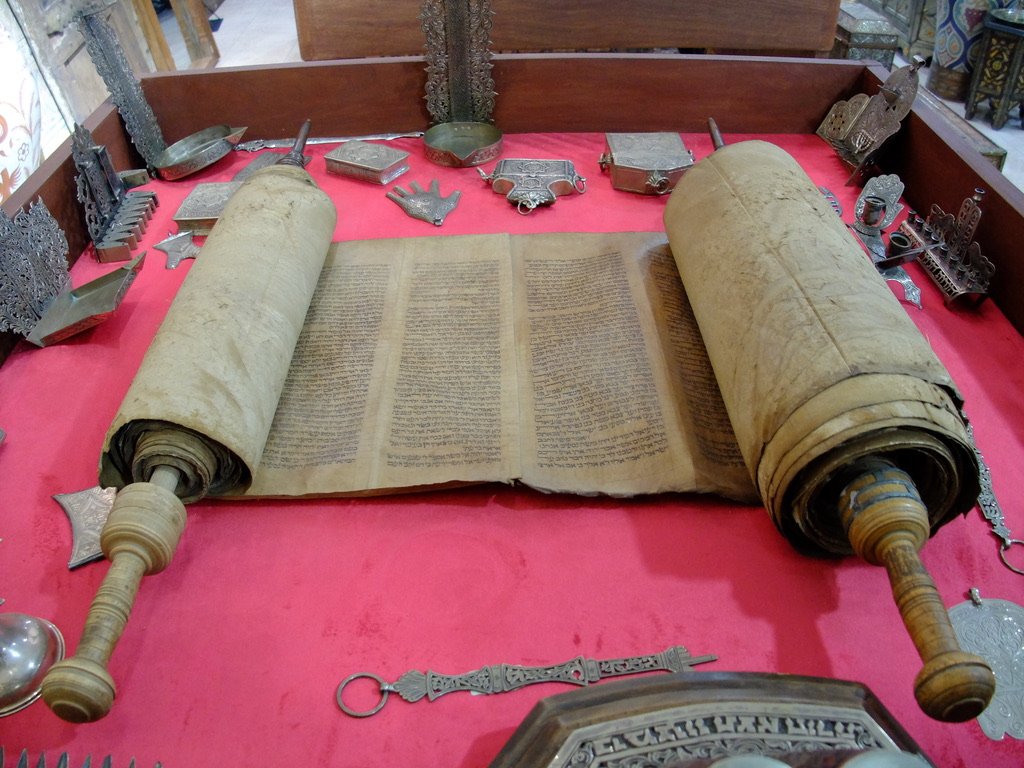
-
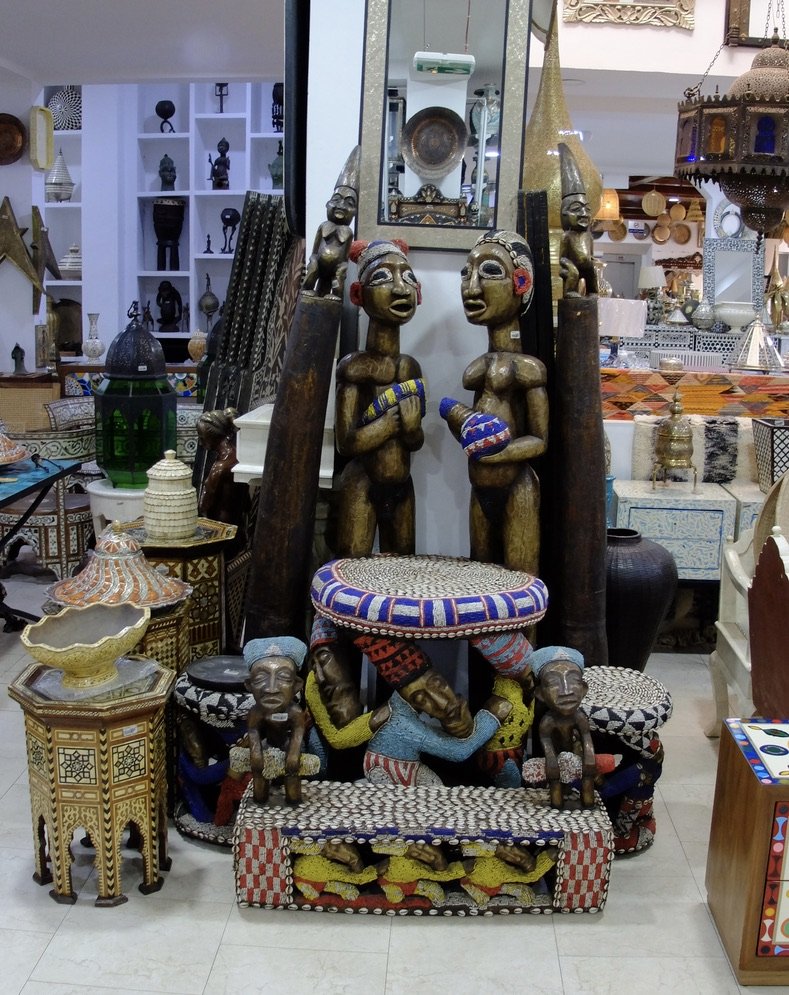
We bought a few little items downstairs & there were cashiers like in a supermarket.
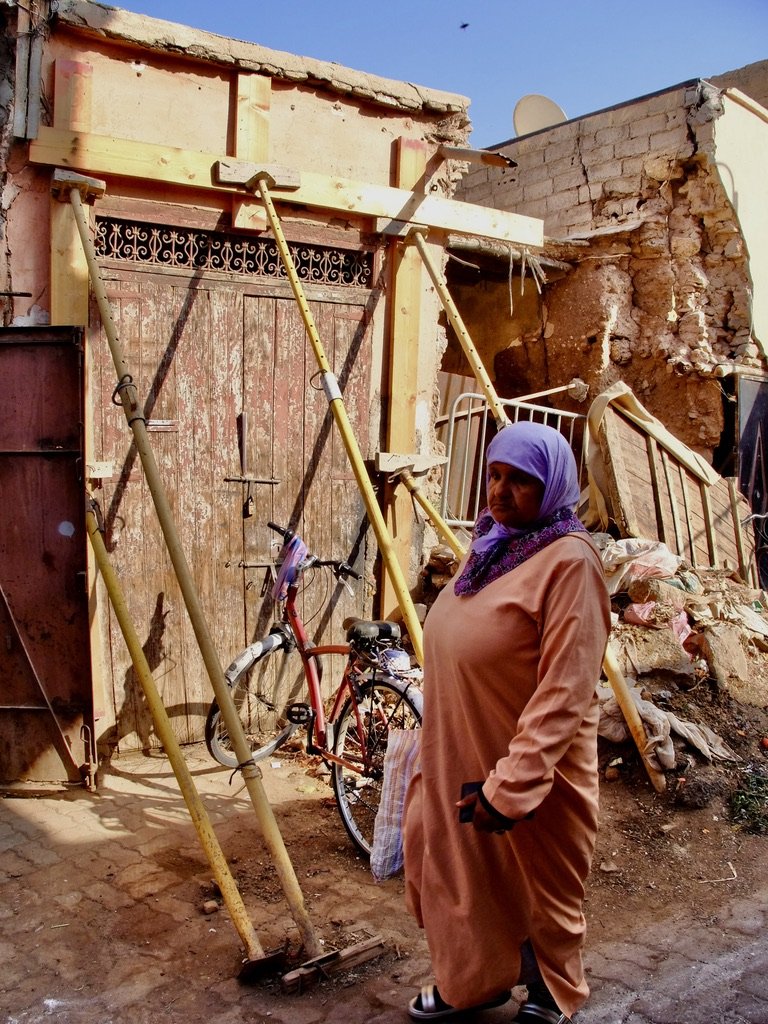
Throughout the medina we often saw walls supported like this.
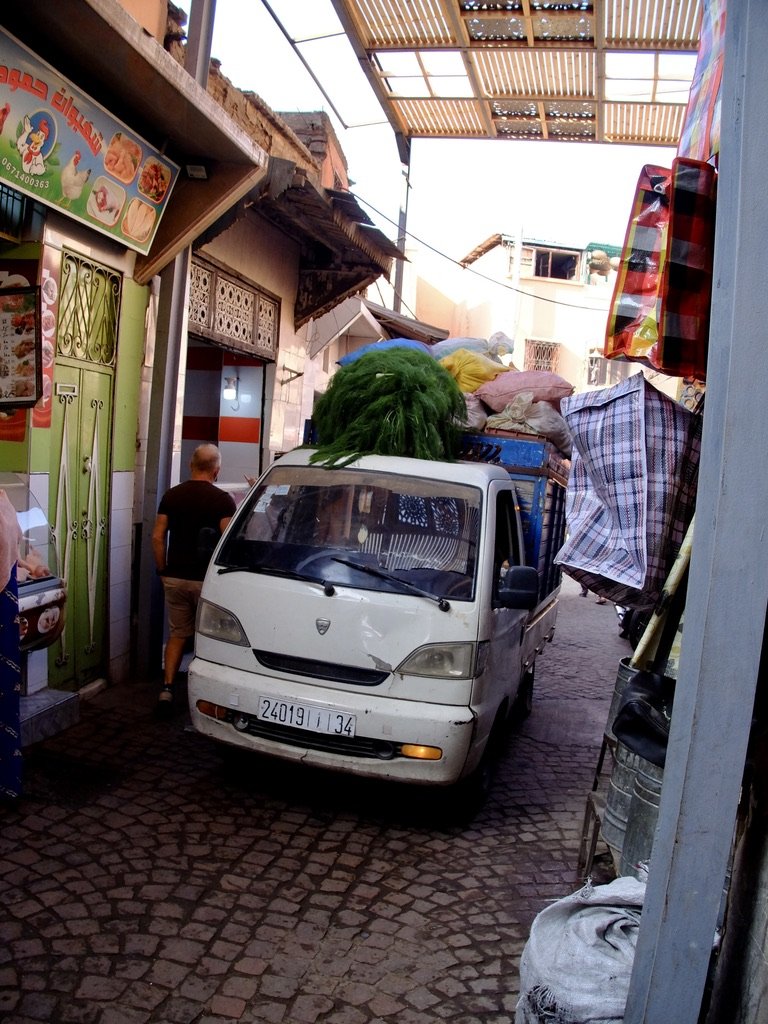
Another tight squeeze.
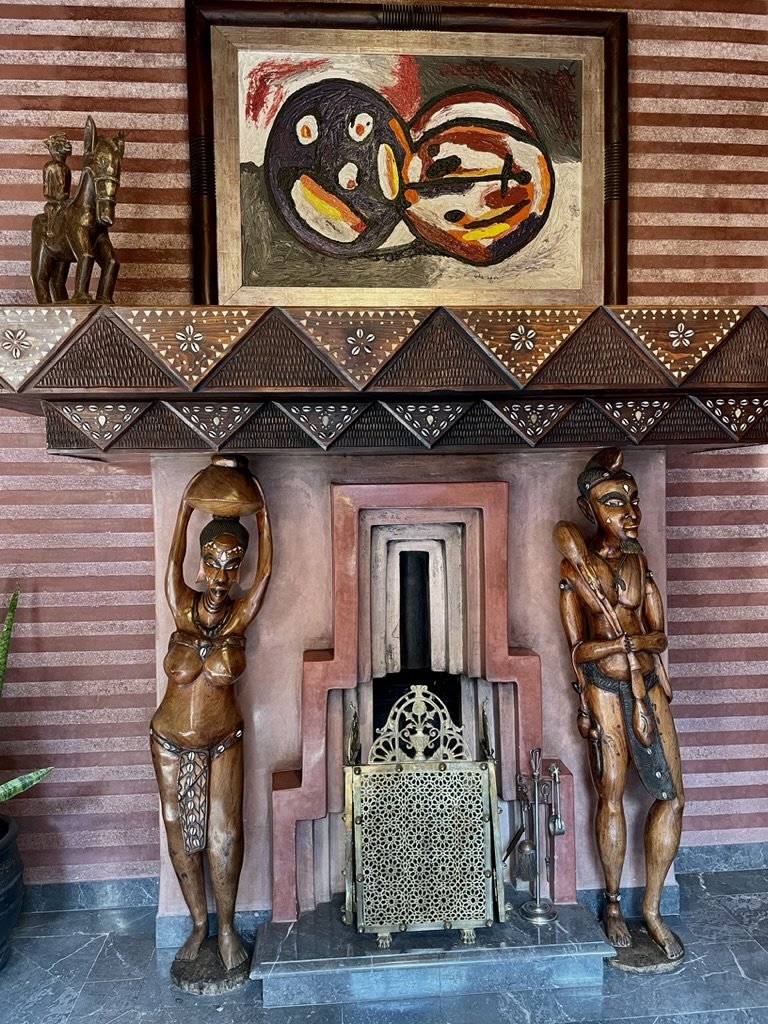
La Sultana.
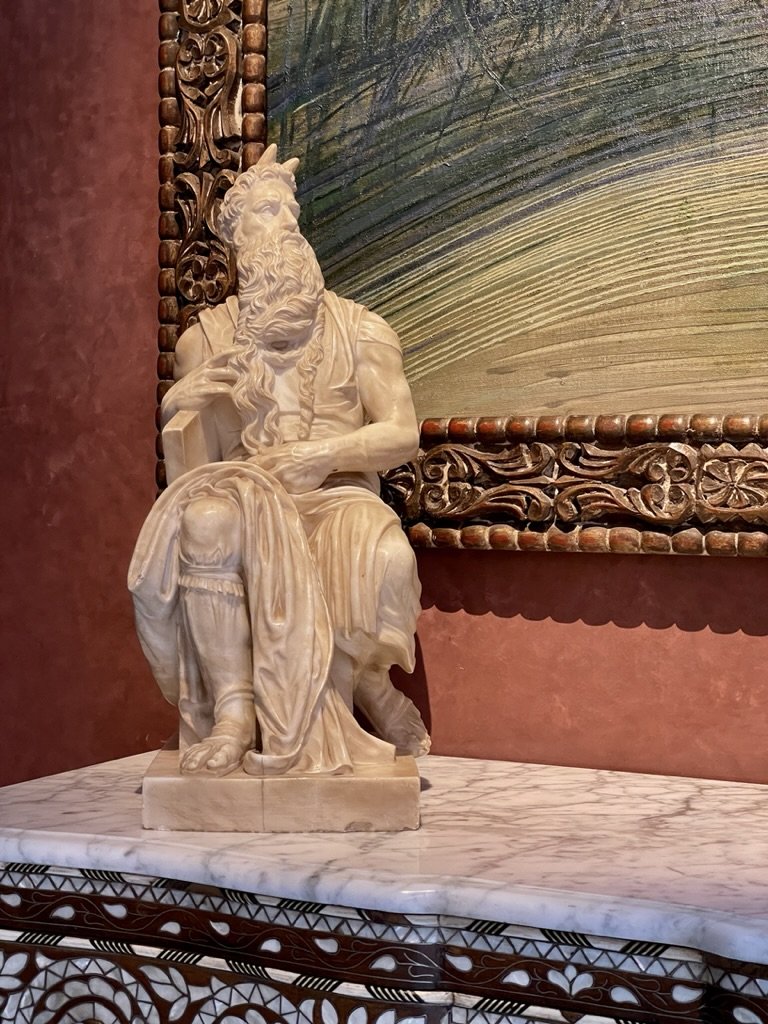
La Sultana - "The Horns of Moses are an iconographic convention common in Latin Christianity whereby Moses was presented as having two horns on his head, later replaced by rays of light. The idea comes from a translation, or mis-translation, of a Hebrew term …Moses is said to be ‘horned’, or radiant, or glorified, after he sees God who presents him with the tablets of the law in the Book of Exodus."
I had a friend from high school who served in the U.S. Army. Another recruit found out that Neil was Jewish & was surprised that he didn’t have horns on his head.
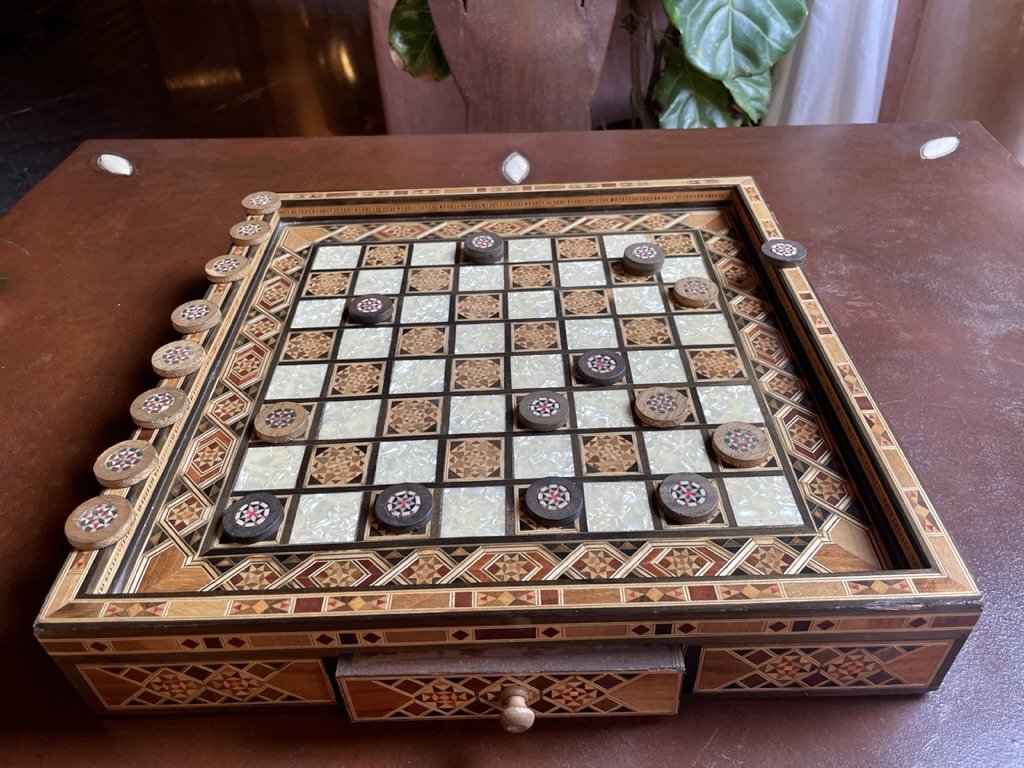
La Sultana.
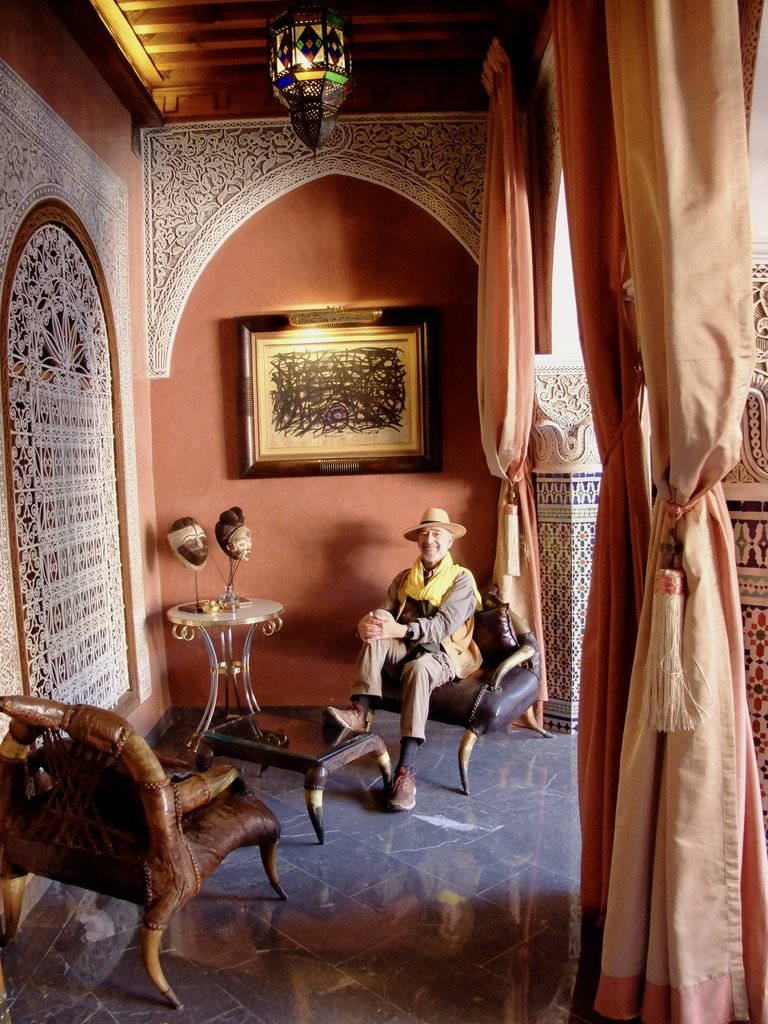
I thought that chair would be comfortable. It wasn’t. La Sultana.
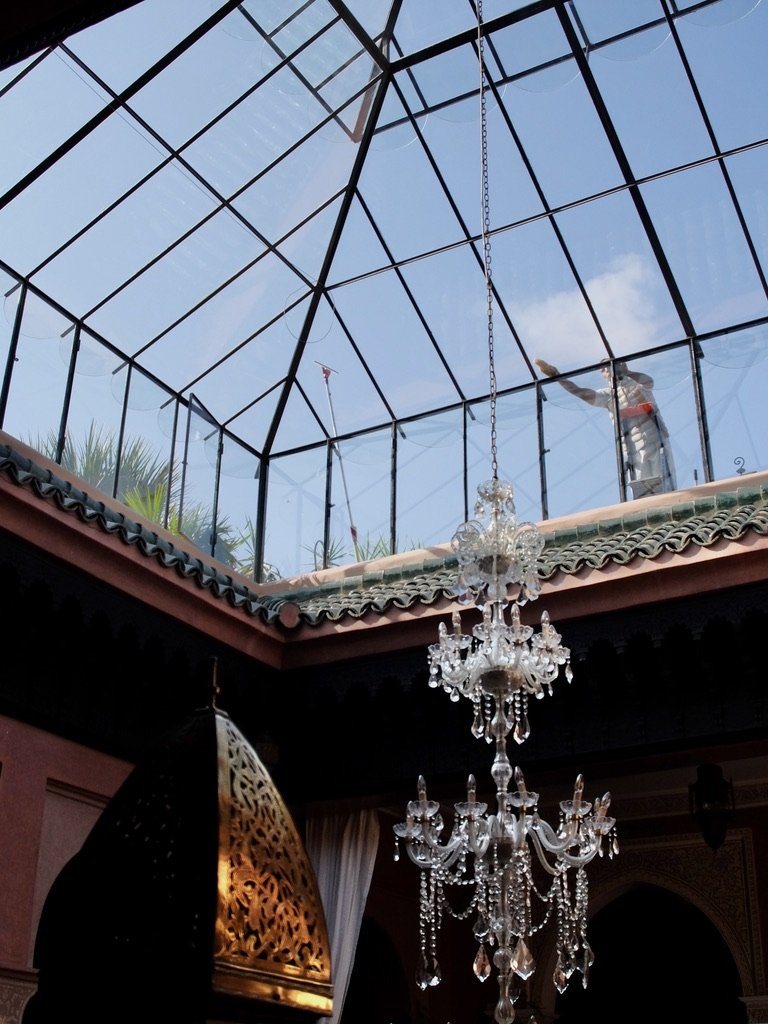
Cleaning that skylight is quite a job.
La Sultana.
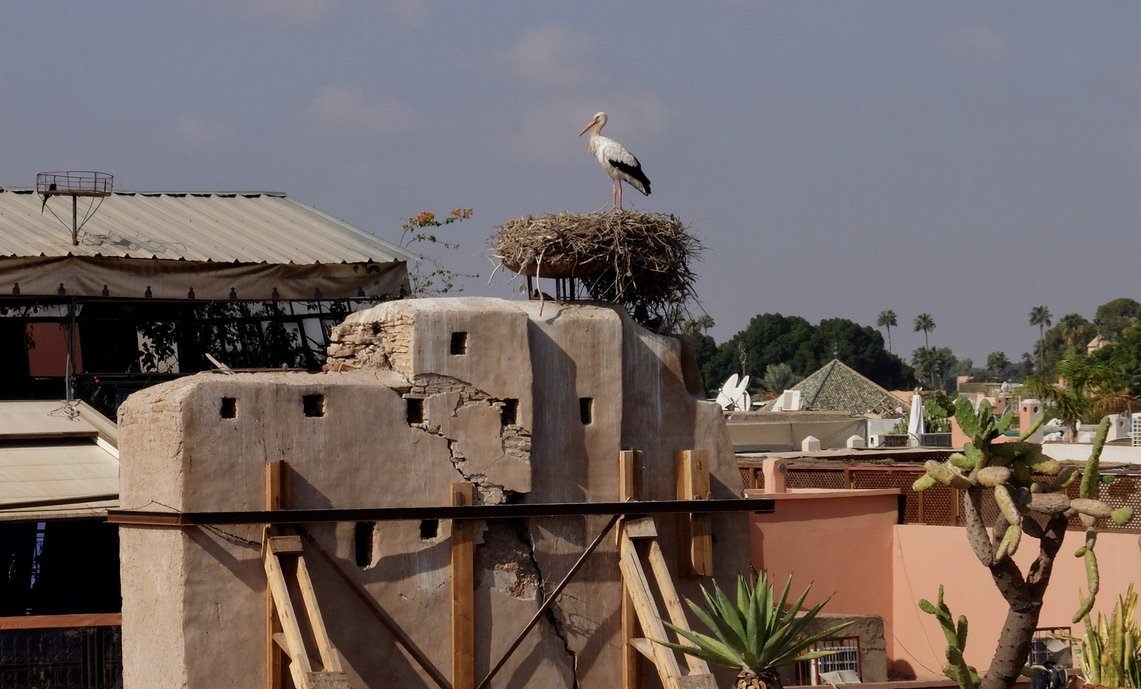
Stork on nest viewed from La Sultana from the rooftop.
“Storks…occupy a special place in Marrakechi culture. These magnificent birds are a common site both in the air and nesting on the rooftops of ancient buildings and palaces.”
This was the first & only time we saw one & it flew away immediately after the photo was taken.
Storks are revered in Marrakech. “Even before the arrival of Islam, an old Berber belief held that storks are actually transformed humans. To this day the offence of disturbing a stork carries a three-month prison sentence." True??
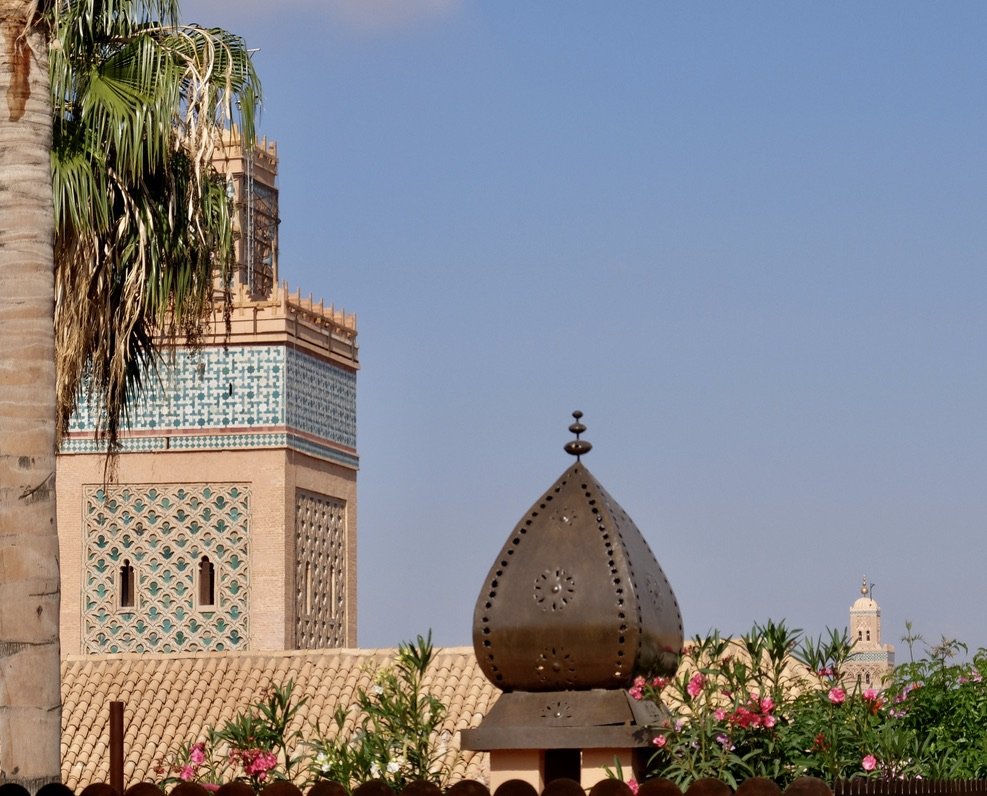
La Sultana from the rooftop.
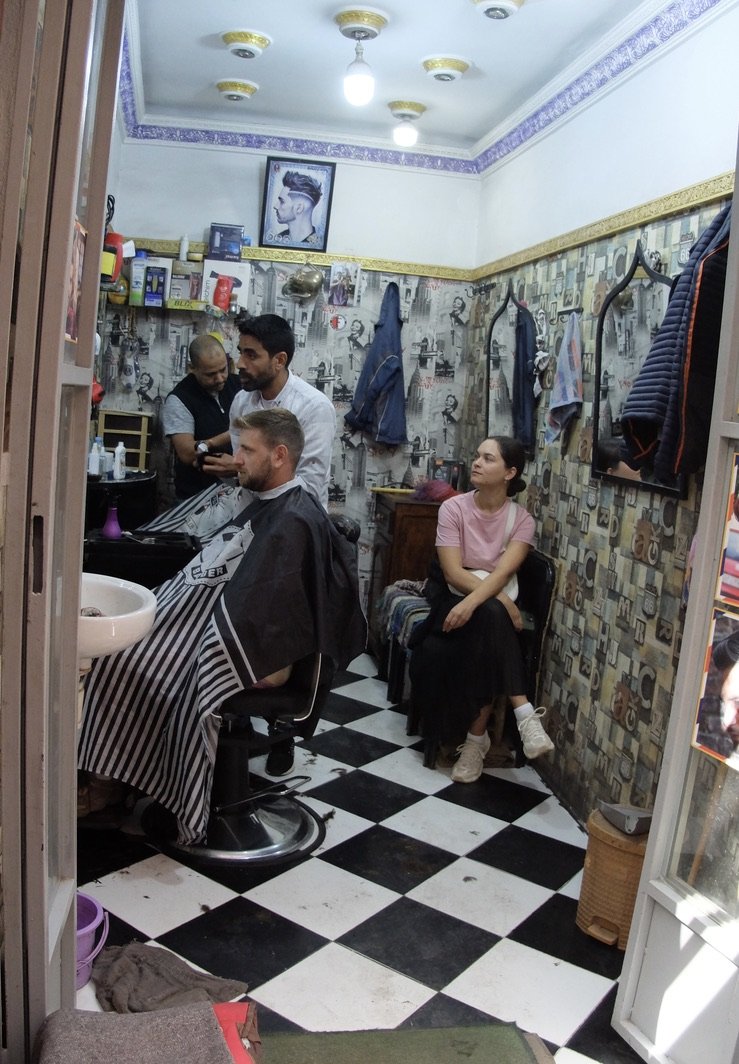
Medina barbershop.
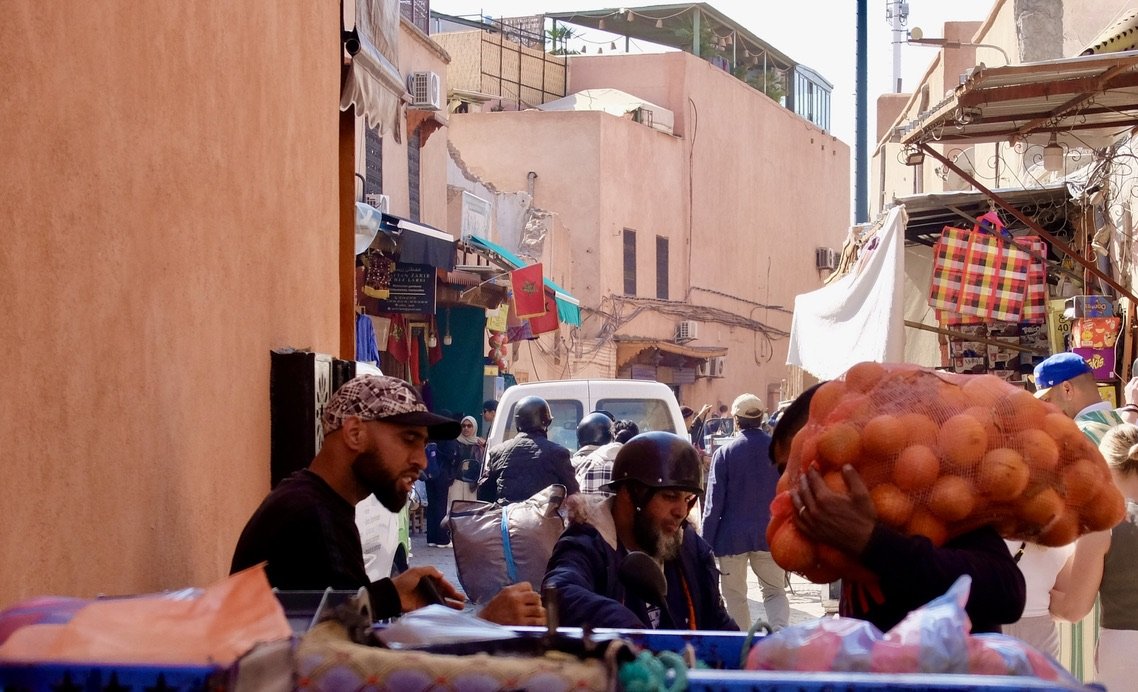
-
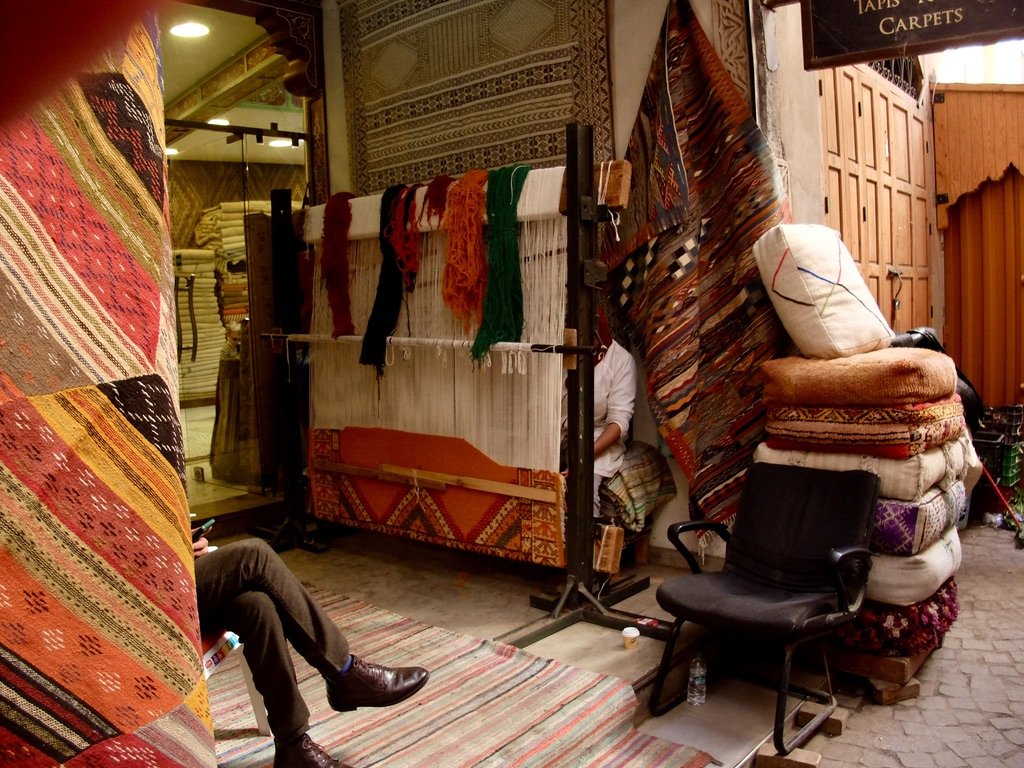
-
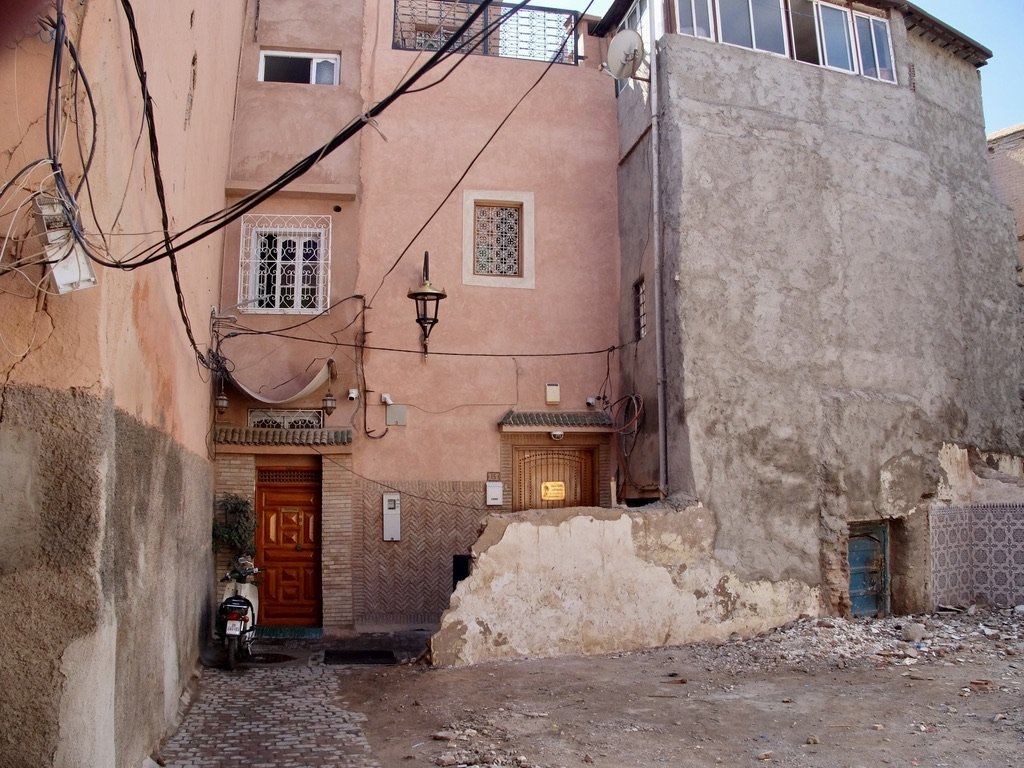
In the Medina, one house spared by the earthquake & next door…
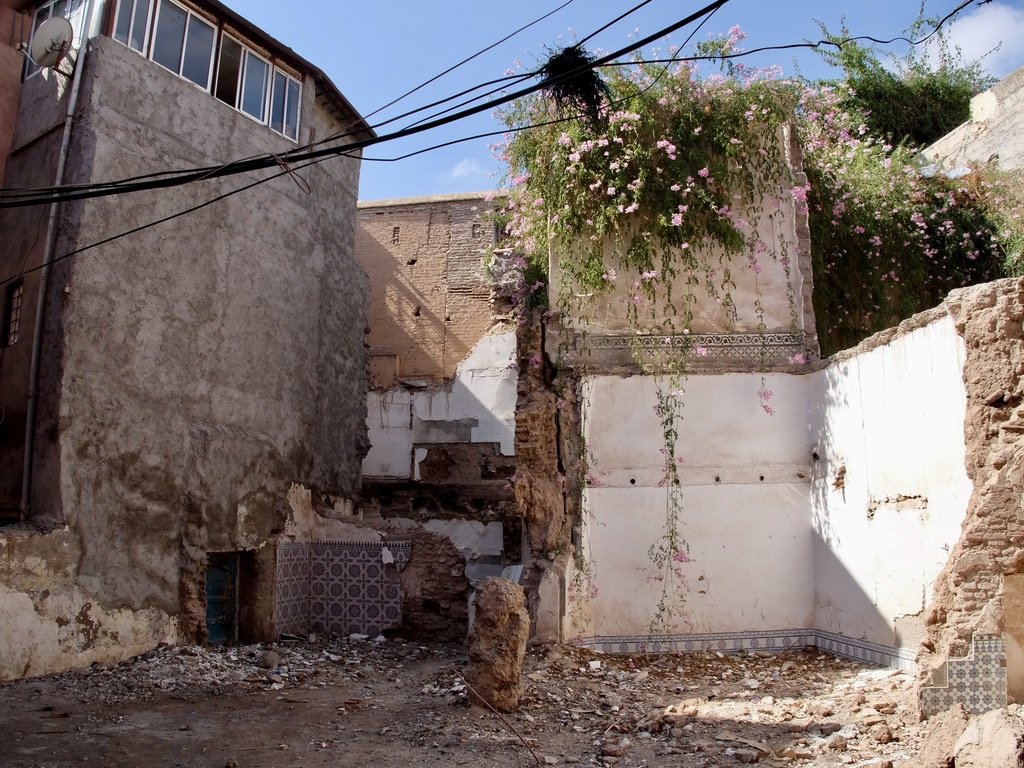
...not so lucky.
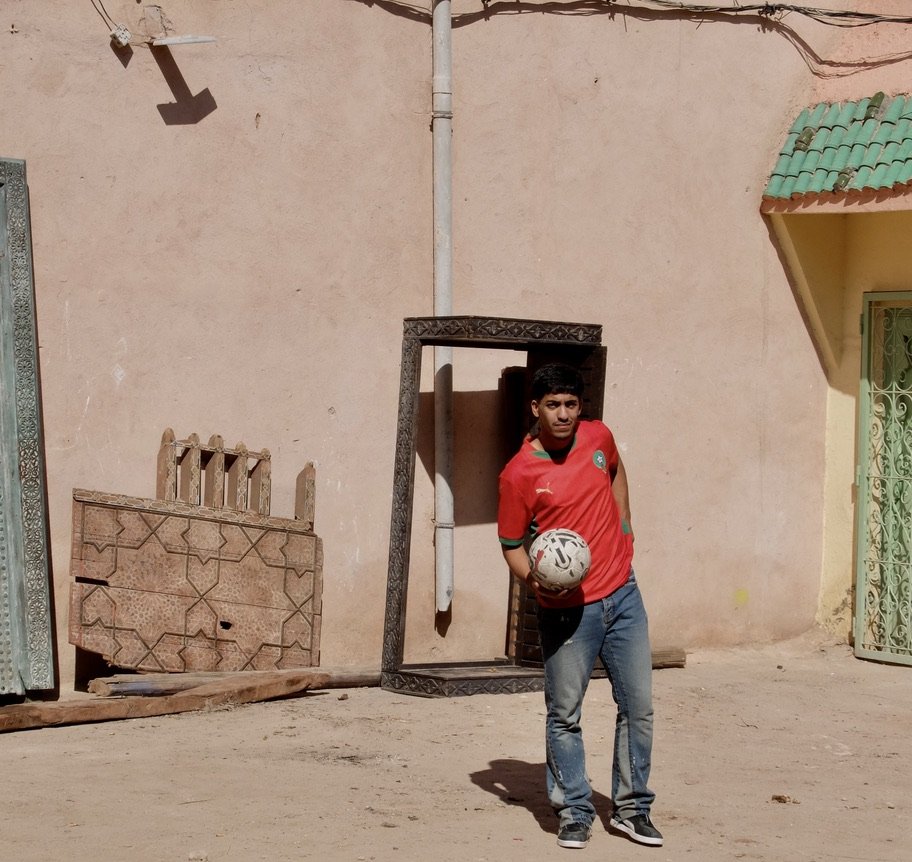
-
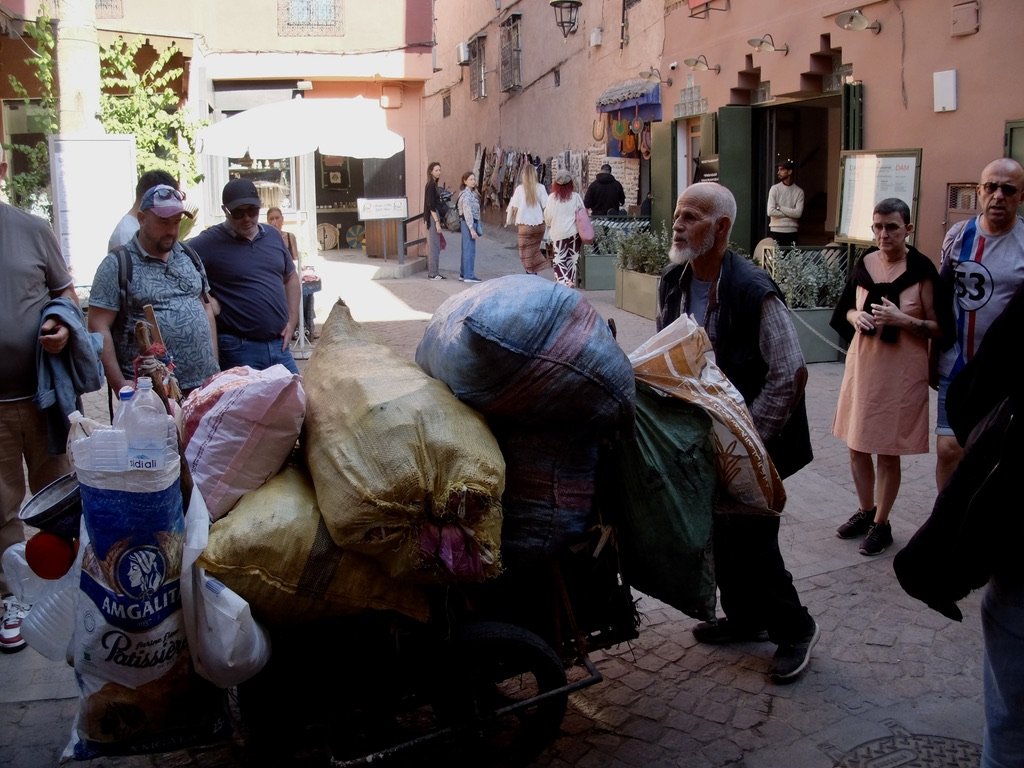
Concerned looks...
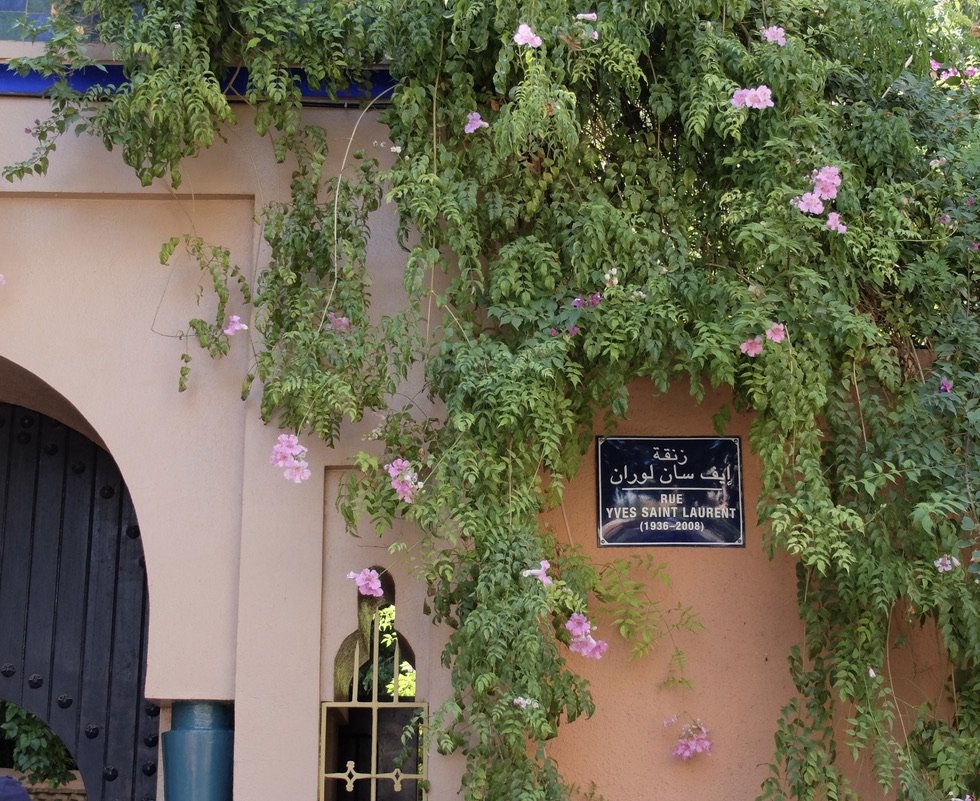
-
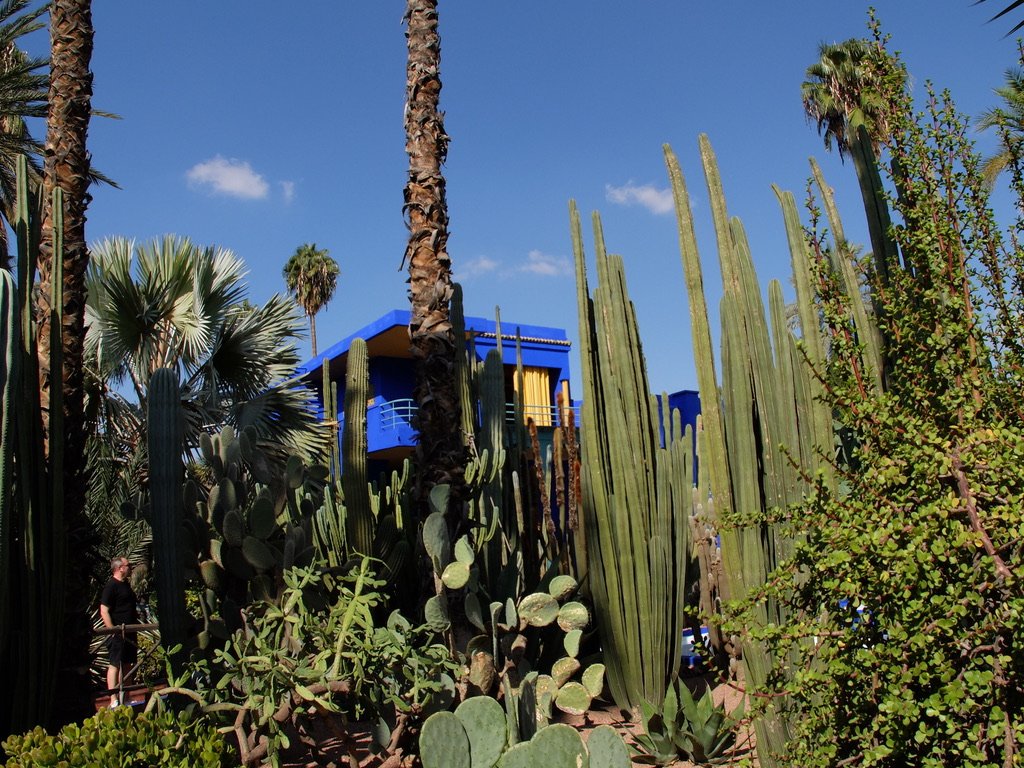
“Jacques Majorelle, born in Nancy, France in 1886, was the son of the celebrated furniture maker Louis Majorelle. In 1924, seven years after his arrival in Morocco, Jacques Majorelle built a villa on what was then the outskirts of town, and in 1931 commissioned the French architect Paul Sinoir to design a painting studio, which today is the museum….
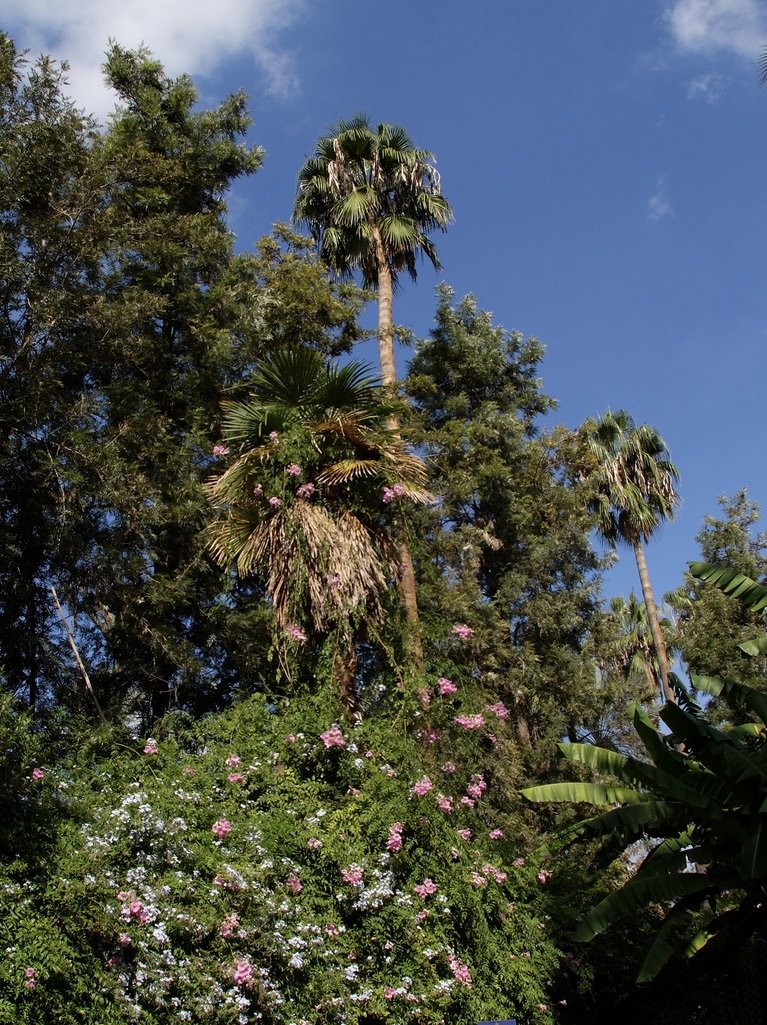
…Over the decades until the artist's death in 1962, Jacques Majorelle created the luxuriantly exotic Jardin Majorelle.
It was in 1980 that Yves Saint Laurent and Pierre Bergé acquired the Majorelle Garden complex which was in a sad state of neglect and slated for demolition. Since then the garden has been restored and open to the public. After the death of Yves Saint Laurent on June 1, 2008, Pierre Bergé donated the property to the Pierre Bergé-Yves Saint Laurent Foundation in Paris, France, and…
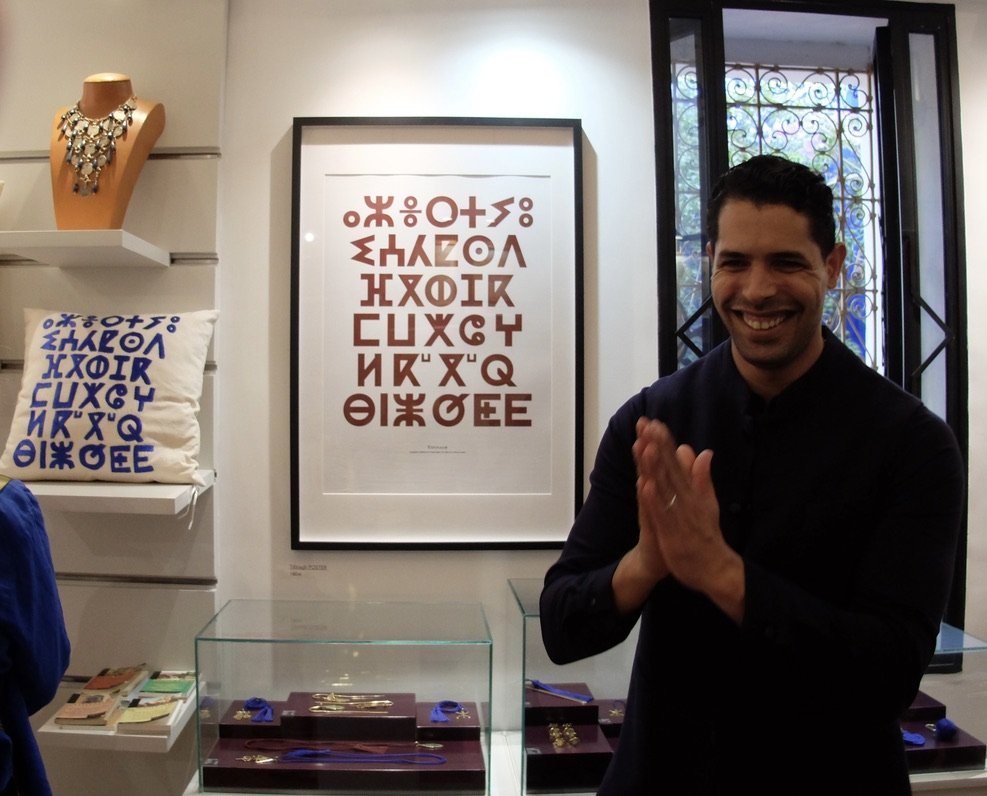
…decided to open a Berber museum to pay hommage to a culture and art which is yet to be discovered.”
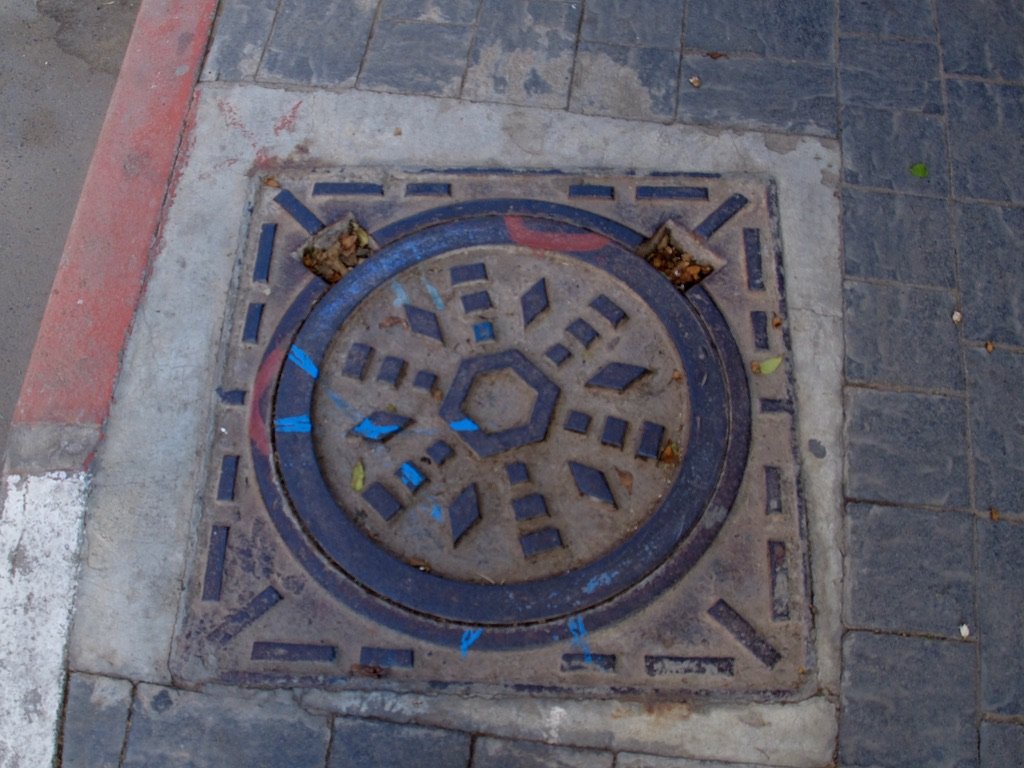
“Majorelle Blue is a clear, intense, fresh shade of deep blue, named after the French artist Jacques Majorelle who used it in his garden in Marrakech.”
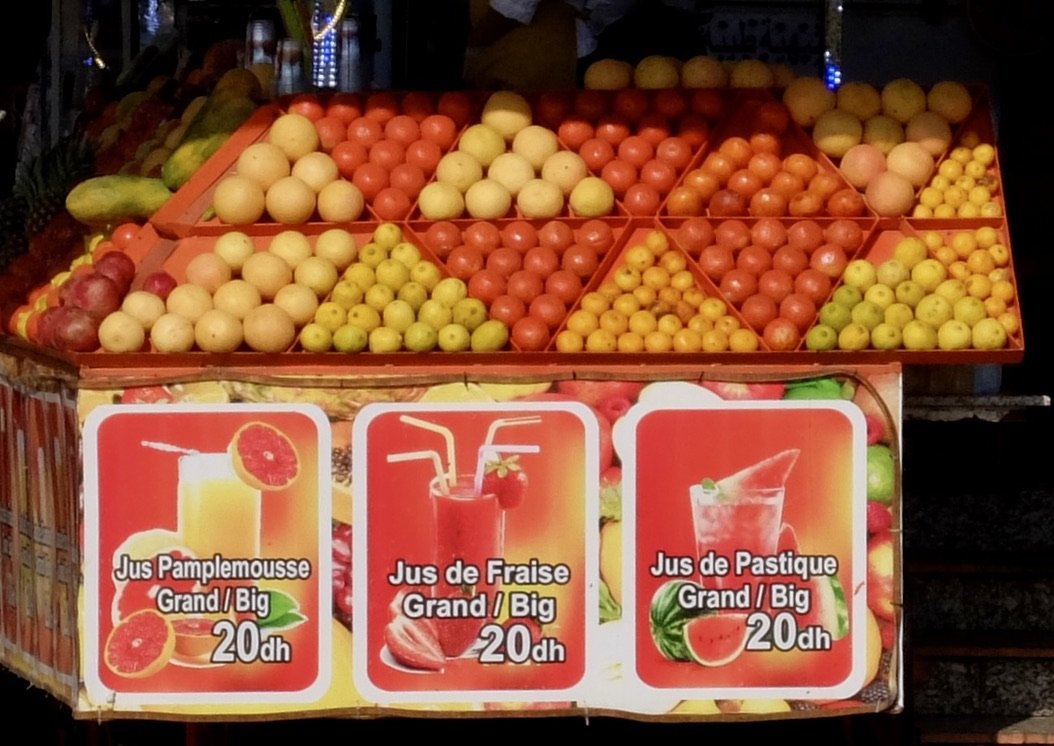
Jemaa el-Fnaa square UNESCO world heritage site.
Citrus to be squeezed.
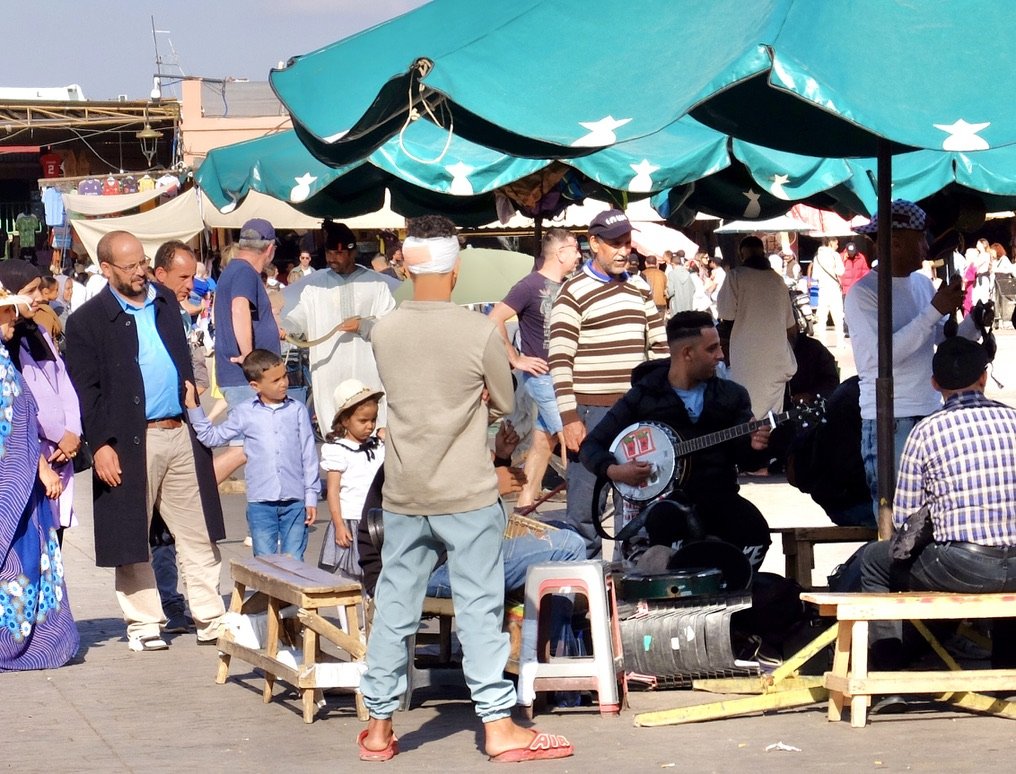
Man playing a four string (tenor) banjo.
Jemaa el-Fnaa Square.
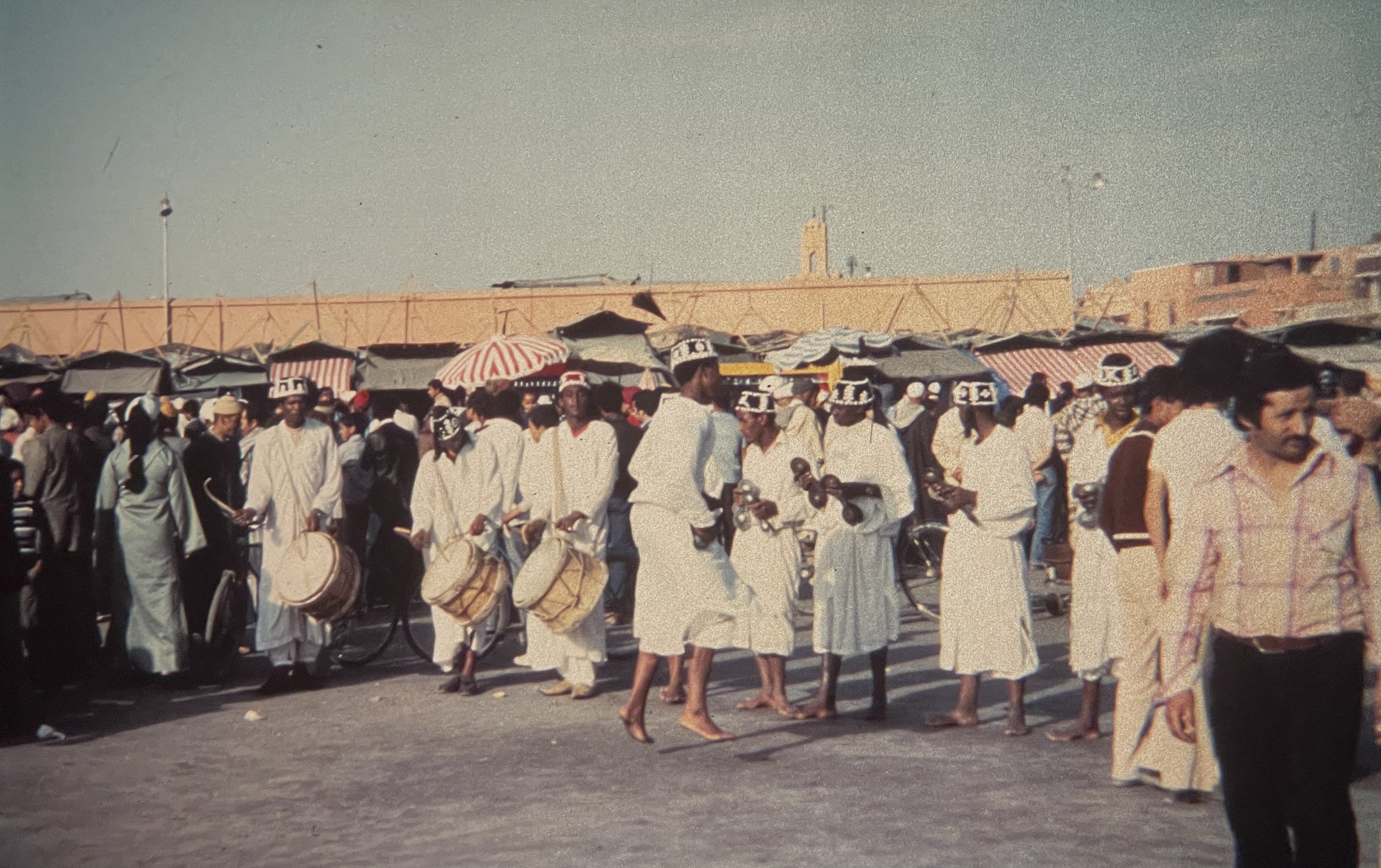
Jemaa el-Fnaa Square. 1978.
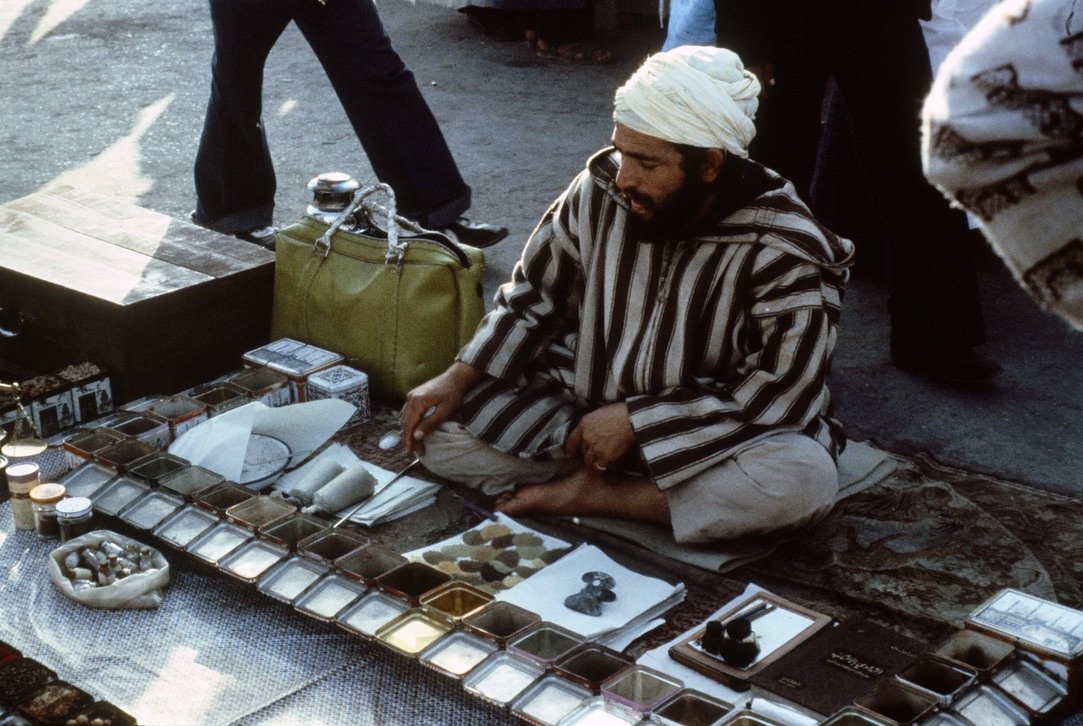
Jemaa el-Fnaa Square - 1978.
There was no one like him here in 2024.
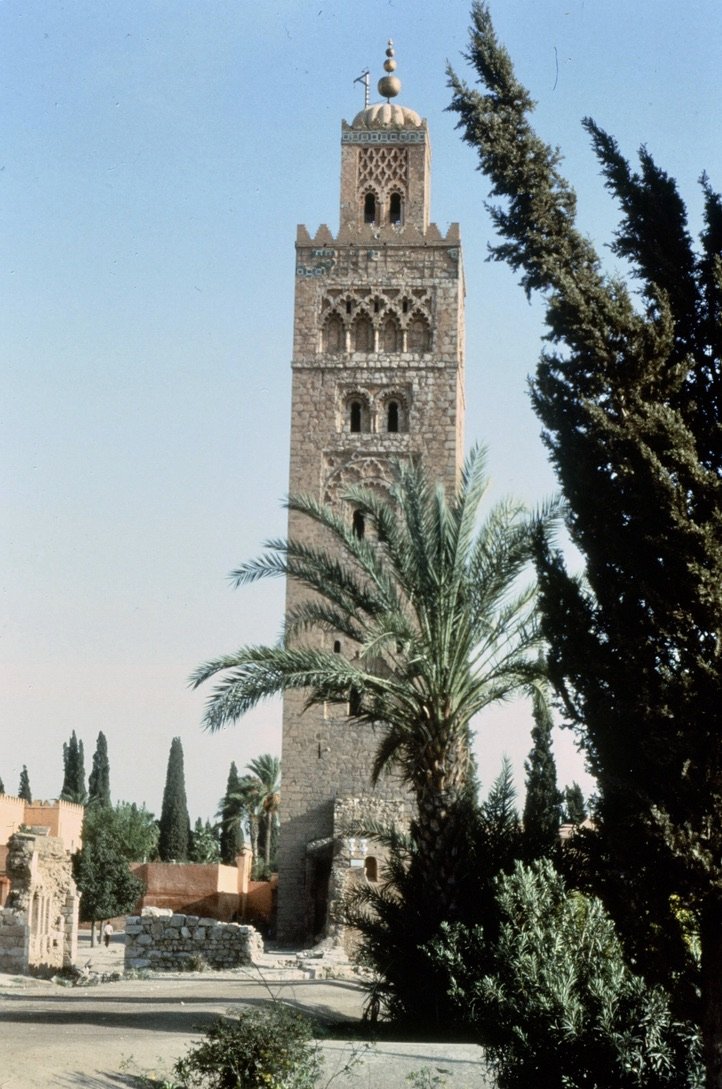
Koutoubia Mosque 1978.
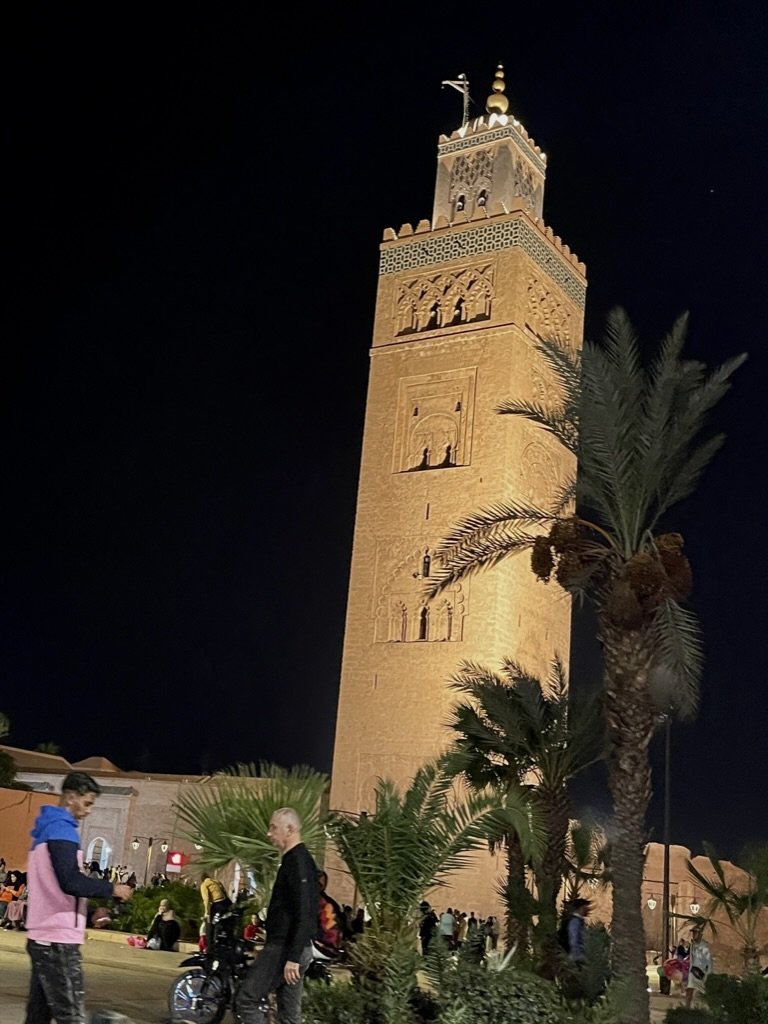
Koutoubia Mosque renovated 2024.
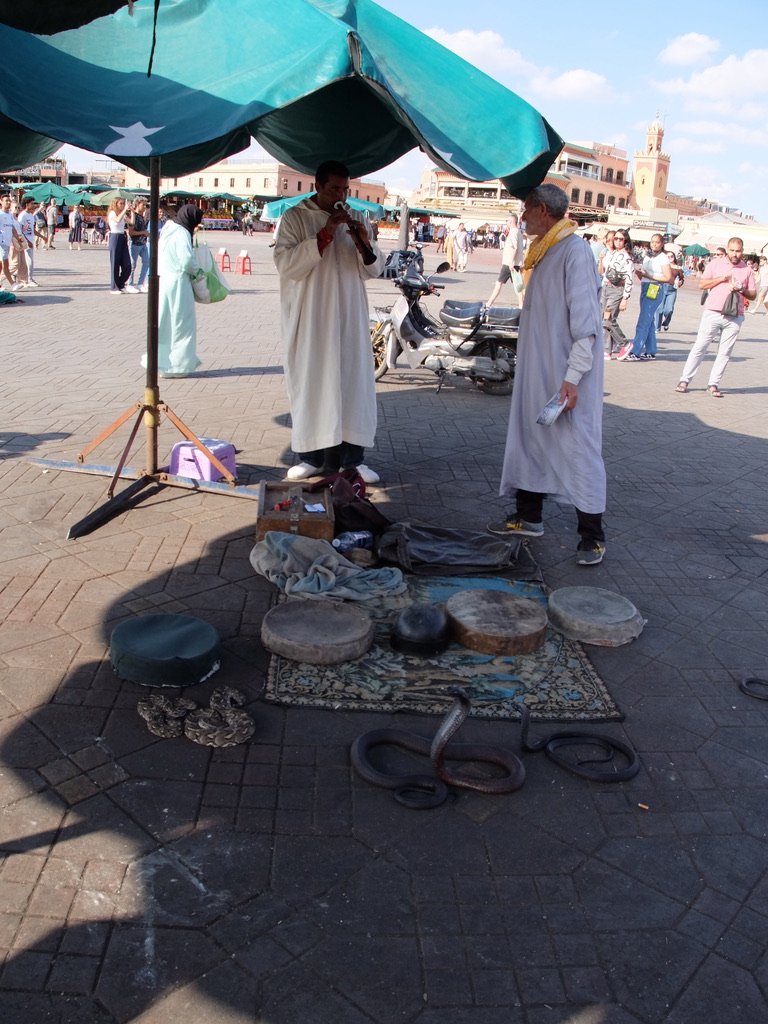
Jemaa el-Fnaa Square.
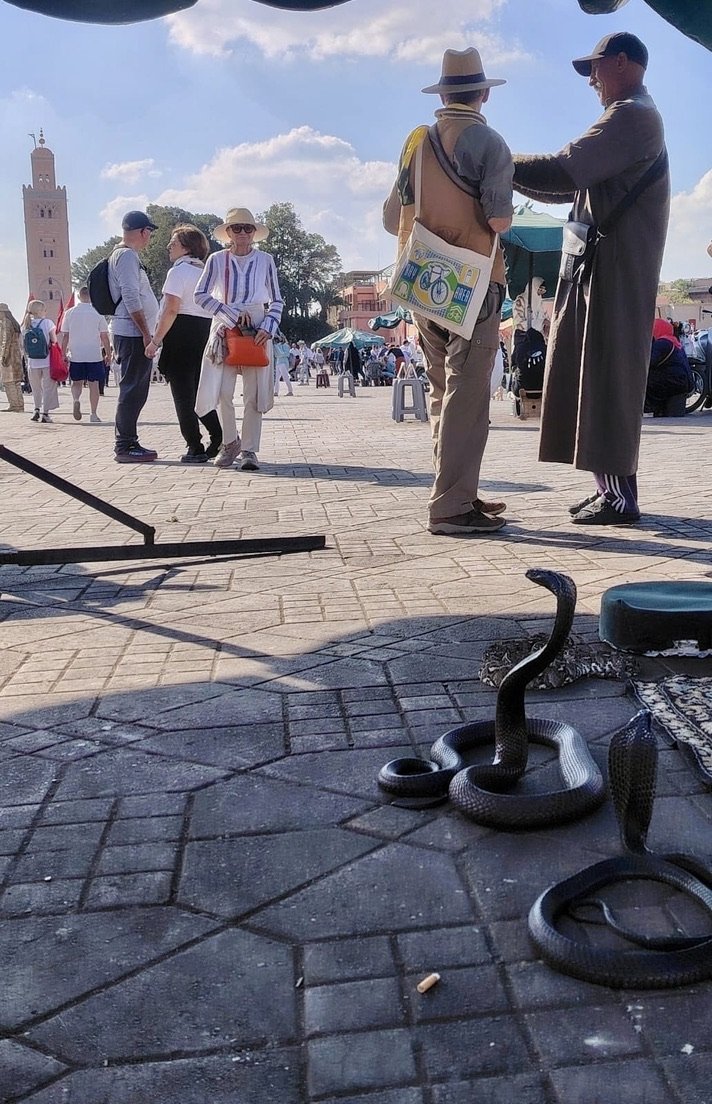
Jemaa el-Fnaa Square.
Note my living collar.
Photo by Youssef Jamal.
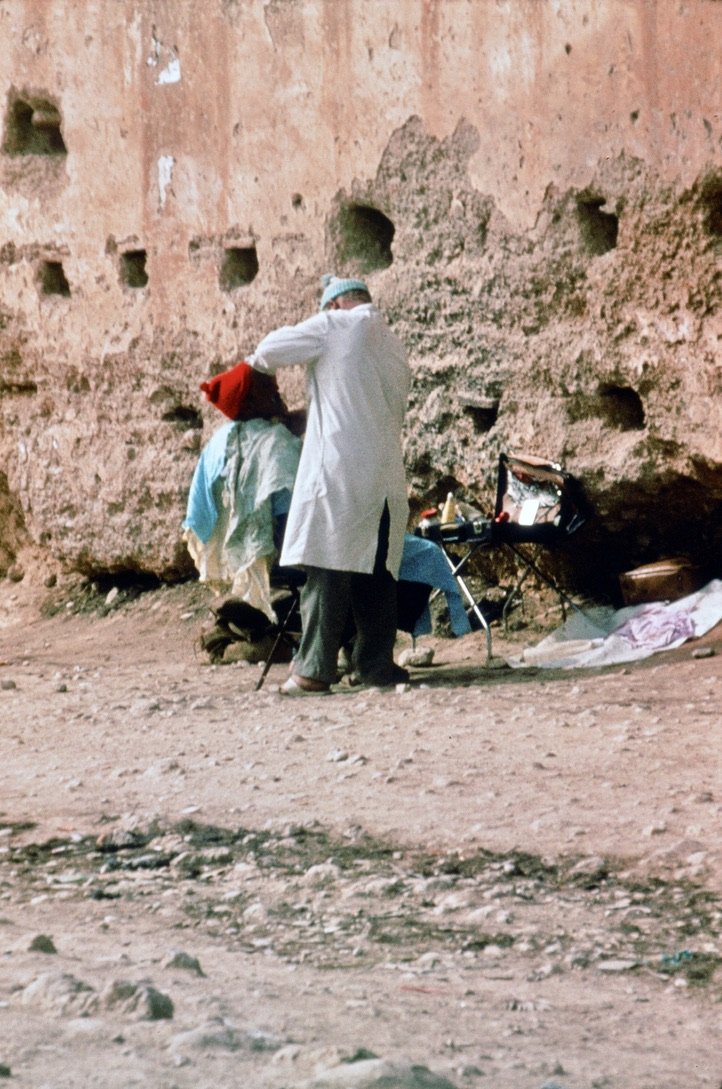
Jemaa el-Fnaa Square, 1978. Was he a barber or tooth-drawer?

The red umbrellas atop the building are where we had dinner.
Jemaa el-Fnaa Square.
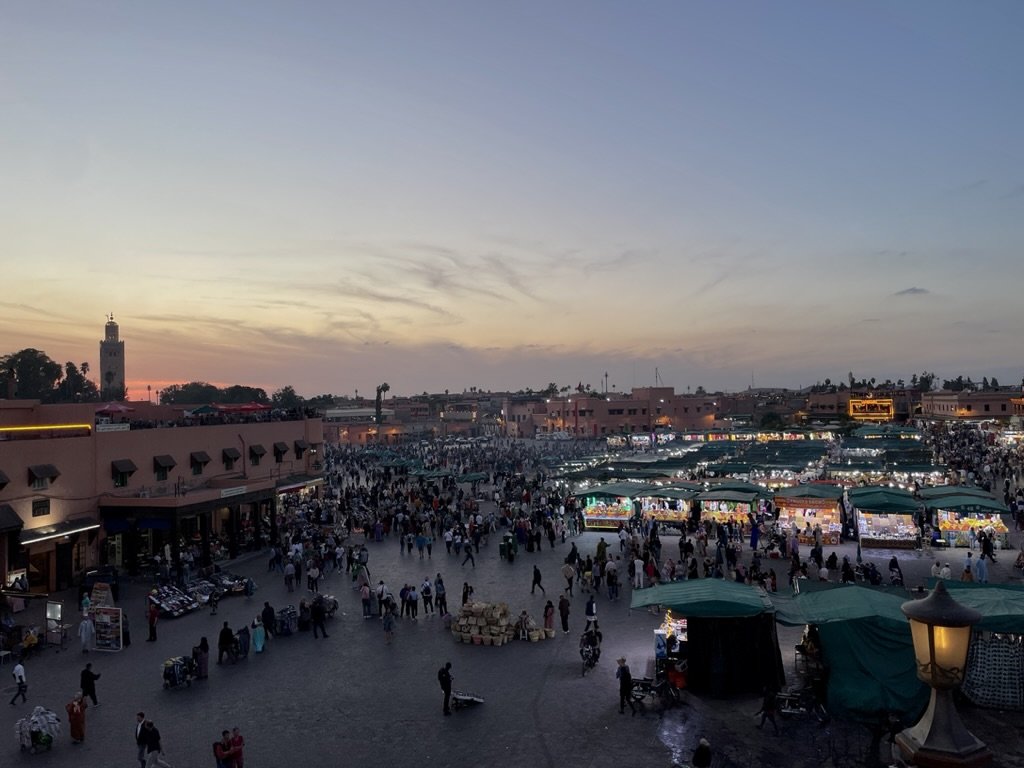
Jemaa el-Fnaa Square viewed from that restaurant.
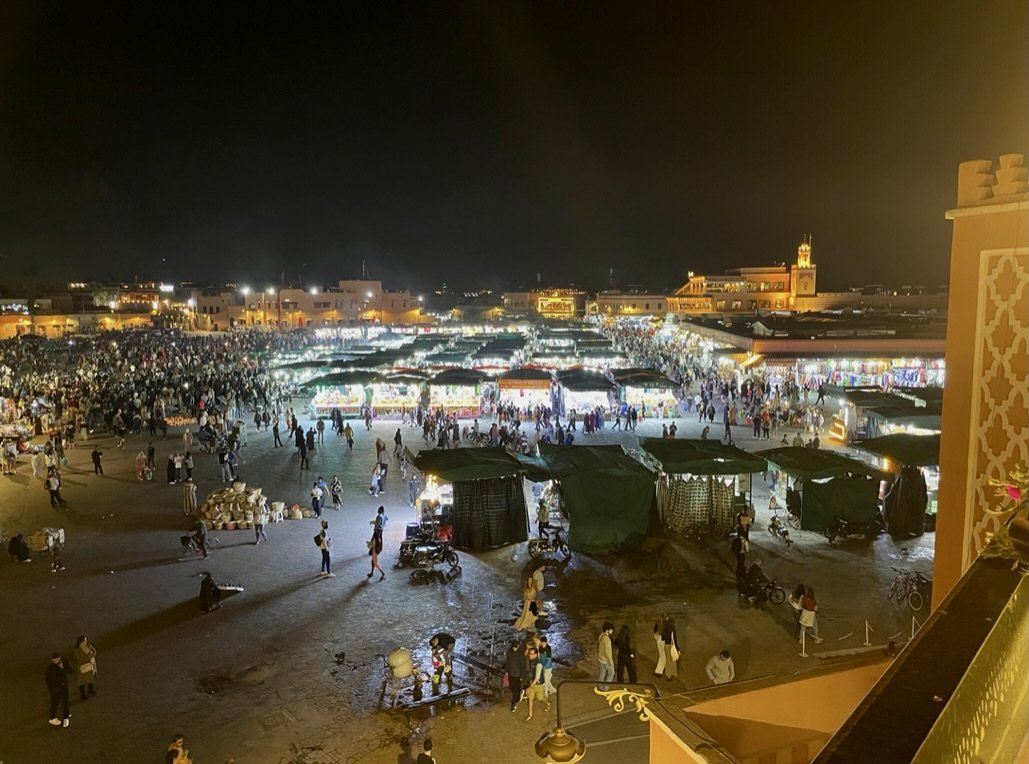
The speakers from the adjacent mosque were quite loud during the call to prayer.
Rooftop restaurant in Jemaa el-Fnaa Square.
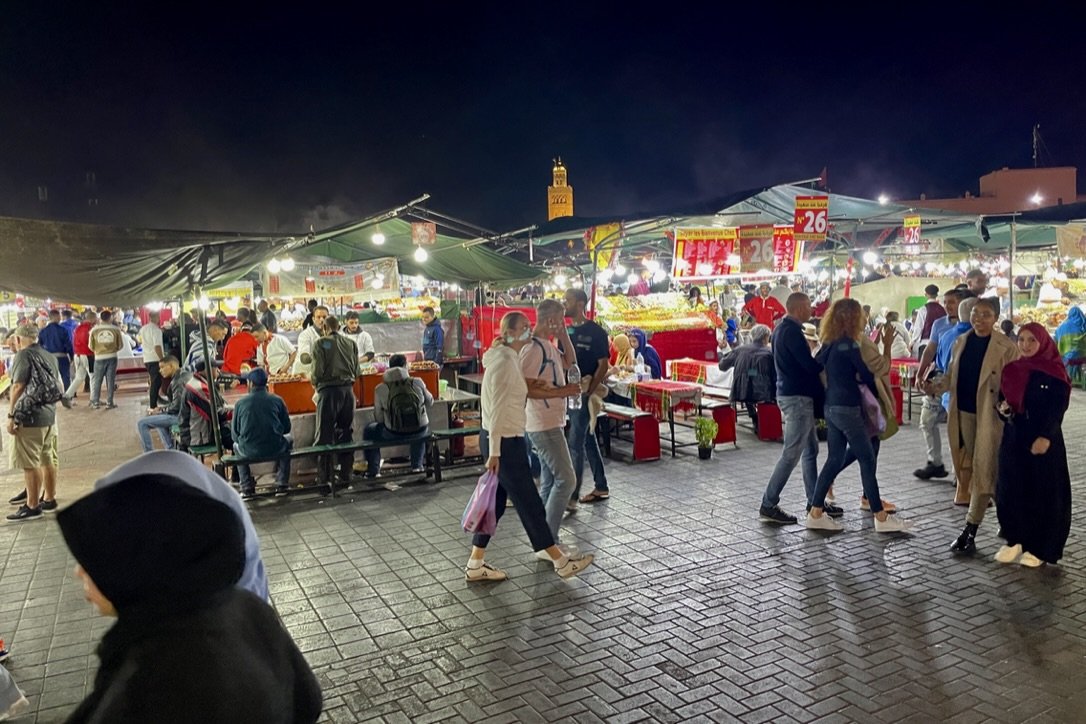
Jemaa el-Fnaa Square.
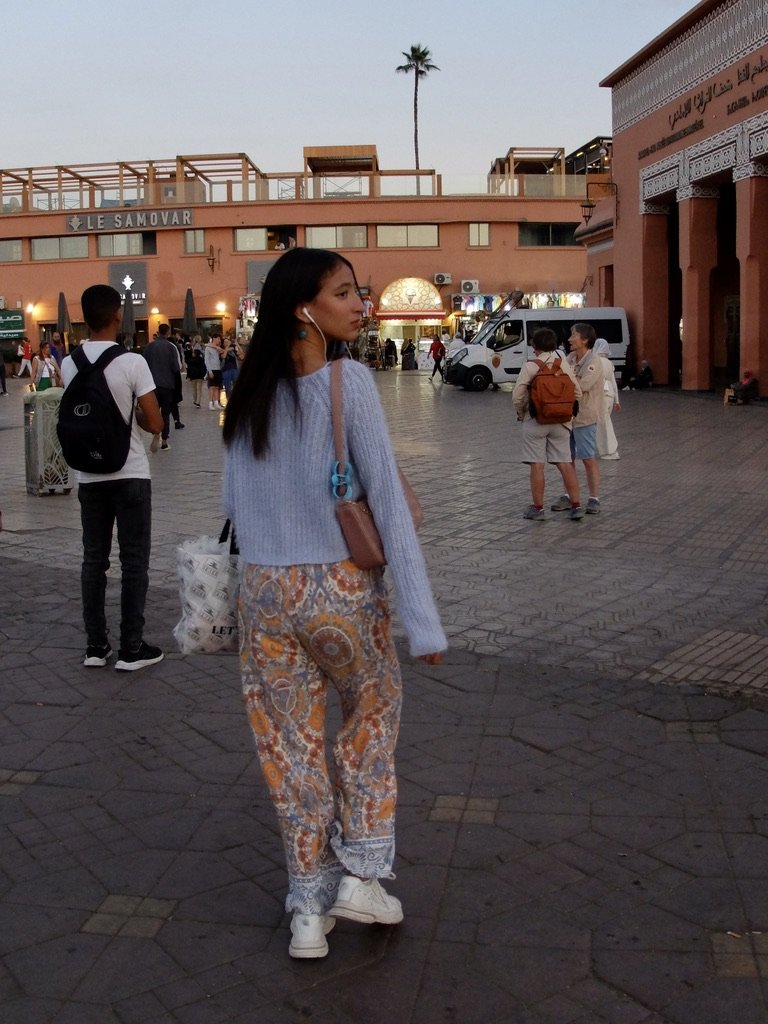
Jemaa el-Fnaa Square.

Leaving Marrakech.
The first motorcyclist is wearing his helmet backwards; we saw that a lot.
The billowing jdellaba is quite a sight.
